












 By THE STAR STAFF
By THE STAR STAFF
House Speaker Rafael Hernández Montañez and Senate President José Luis Dalmau Santiago objected to the Puerto Rico Electric Power Authority’s (PREPA) disclosure statement on Tuesday, arguing that information on energy transmission and distribution (T&D) operator LUMA Energy is incorrect.
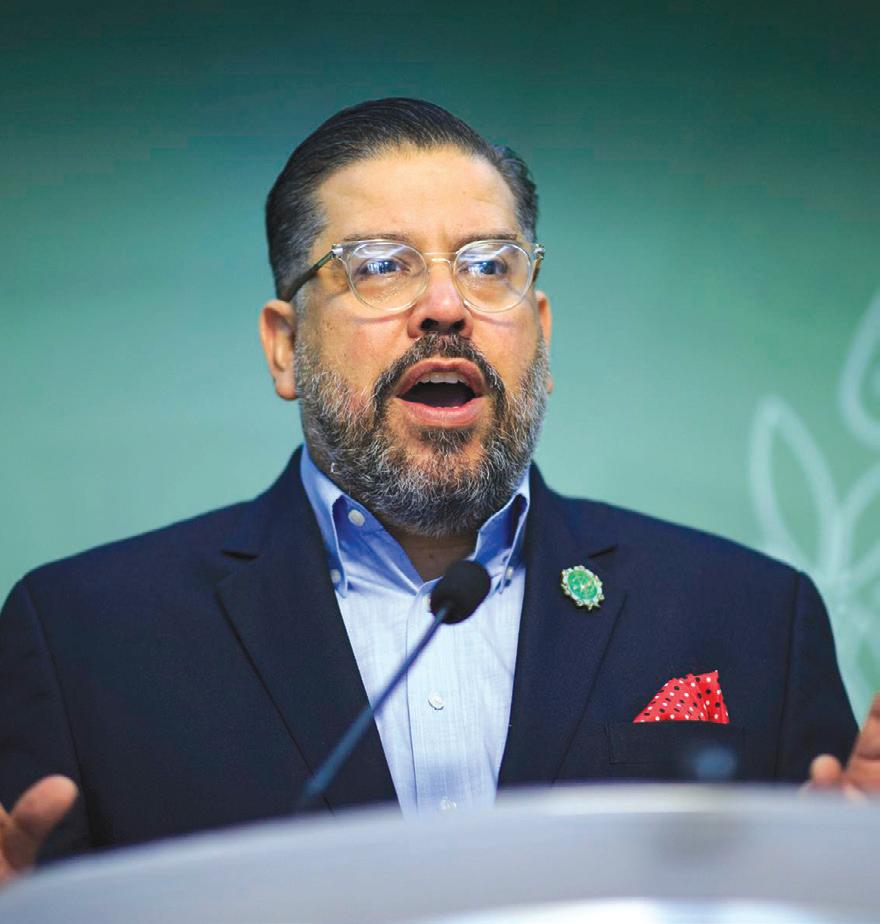
Contrary to what has been the lived experience of PREPA customers since LUMA took over the operation of PREPA’s T&D system on June 1, 2021, the legislative leaders said, the Financial Oversight and Management Board posits that the entity will transform Puerto Rico’s electrical system into a more modern, resilient and efficient one.
“While both of the appearing parties strongly disagree with the [oversight board] on that policy position, the instant motion is not about subjective policy decisions but rather about the objective failure to abide by applicable law in extending the partnership with LUMA,” they argued in their objection filed in PREPA’s Title III bankruptcy process.
While acknowledging that it is beyond dispute that
PREPA and LUMA reached an initial agreement to have the latter run the T&D operations for a 15-year period, the lawmakers argued that the contract is not yet in effect, as it is contingent upon a “conditional obligation,” in that it depends on uncertain future events materializing.

One of the conditions that must be met before the “commencement date” comes about, they said, is that “[a] final plan for the reorganization of PREPA into GenCo and GridCo shall have been approved by the applicable governmental bodies, and the GridCo-GenCo PPOA [power purchase and operating agreement] shall have become effective,” which the lawmakers said has not happened.

LUMA Energy’s contract with PREPA expired in November 2022, the legislative leaders said. While the oversight board said in PREPA’s disclosure statement that the contract was extended, it was not because it didn’t have the necessary legislative approvals, the lawmakers argued.
“Because such an extension required the enactment of legislation, it is null and void under Puerto Rico law,” they argued.



The lawmakers asked the court to amend PREPA’s disclosure statement to reflect the lack of a valid contract between PREPA and LUMA Energy.
“The Legislative Assembly is as interested as anyone else in the confirmation of a viable debt restructuring plan for PREPA. This obviously does not mean that the House and the Senate are willing to relinquish their statutory authority and duty to consider extending publicprivate partnerships,” the lawmakers said.
“Article 10(e) of Act 29 (Public Private Partnership Law) clearly establishes a check on the Executive Branch’s ability to maintain a privatization arrangement beyond the date in which it would have otherwise expired. But for the agreements reached by LUMA, the [oversight board], the [Public-Private Partnership] Authority and PREPA on November 29-30, 2022, we would now be in the back-end transition period of an expired partnership.
Puerto Rico law clearly allowed the Legislative Assembly to weigh in the decision to extend the partnership and on the terms under which an extension was acceptable.”
To the extent that Act 29 was not followed, the legislative leaders argued, the disclosure statement should be corrected to reflect that the LUMA agreement was not validly extended.
The San Juan Daily Star, the only paper with News Service in English in Puerto Rico, publishes 7 days a week, with a Monday, Tuesday, Wednesday and Thursday edition, along with a Weekend Edition to cover Friday, Saturday and Sunday.Some 60,000 local bondholders who lost money in Puerto Rico bonds and closed-end funds could get some relief if legislation to that effect becomes law.
New Progressive Party Rep. Ángel Morey Noble introduced House Bill 1582 this week, creating a tax credit that would allow local bondholders to recover some of the money they lost after investing in Puerto Rico’s bonds. Before Puerto Rico declared bankruptcy in 2017, credit rating agencies had lowered Puerto Rico bonds to junk status in 2014.
“We have introduced this measure to provide economic relief to nearly 60,000 Puerto Ricans who entrusted their savings and possibly their retirement money in Puerto Rico’s general obligation bonds, betting on the security of these investments,” Morey Noble said.
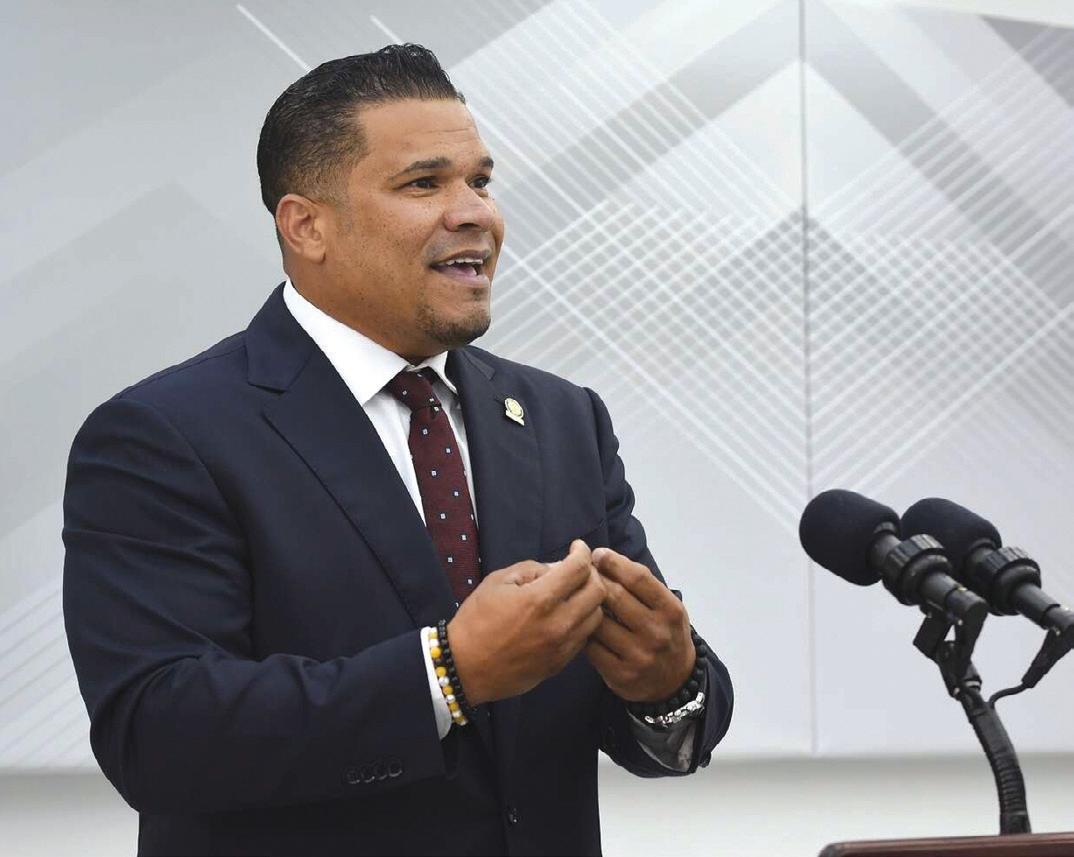
Although the legislation would not return all the money to Puerto Rican investors, it would partially remedy the damage caused to them.
“We believe we must provide relief to the pockets of all citizens who, in good faith, thought they were making a safe investment and who today are uncertain of what will happen and how they will pay their future expenses,” the lawmaker said.
The tax credit will be assigned considering the total
Ángel Morey Noblenet loss as follows: for $50,000 or less, 100% of the total net loss;
$50,001 to $100,000, 90% of total net loss; $100,001
to $200,000, 80% of total net loss; $200,001 to $300,000, 60% of total net loss; $300,001 to $400,000, 50% of total net loss; $400,001 to $500,000, 40% of total net loss; and $500,001 to $1 million, 20% of total net loss.
After the tax credit is determined, up to a maximum of 20% per year of the total credit may be claimed for five years starting on the credit’s determination date.
The legislator said “the credit will be claimed for losses registered for taxable years beginning after July 1, 2013, but before January 1, 2017.” The credit will be computed using the total net loss of the local taxpayer on their investment regardless of whether the investments were guaranteed or not by the commonwealth Constitution.
“Meanwhile, the total net loss is defined as all past due net loss that could not be used against gains from other financial instruments during that fiscal year and for the next seven taxable years,” Morey Noble said.
House Speaker Rafael “Tatito” Hernández Montañez and the full New Progressive Party delegation support the bill, which is expected to go to public hearings.
Rep. José “Memo” González Mercado asked the island Senate on Tuesday to approve House Bill (HB) 1578, which establishes a single amount to pay in the Autoexpreso system regardless of the number of toll infractions.
“It is urgent that we do justice to the hundreds of thousands of drivers who travel on the highways of the island and who have been, for too long, subject to a defective Autoexpreso system that does not adhere to the current reality,” González Mercado said. “I call on the Senate of Puerto Rico to provide the fair relief that our citizens deserve by approving HB 1578 as soon as possible. Every day that passes without it being law, is one more day in which drivers are punished.”
The New Progressive Party legislator filed the bill on Jan. 9, along with a bipartisan group of representatives including House Speaker Rafael “Tatito” Hernández Montañez. The measure was passed by the House on Jan. 17 with 42 votes in favor.
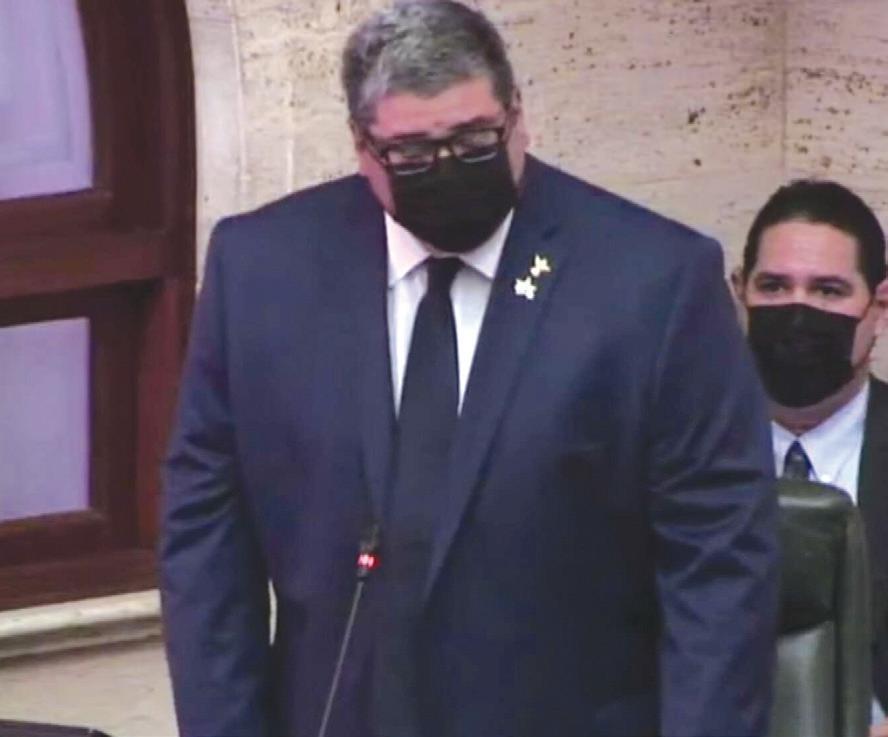
“By providing that the fine established here is not tied to the number of times that tolls were exceeded without a balance during the course of those 15 days of the first offense, the deterrent nature of the penalty is maintained, but while offering the user a more reasonable period of time to comply with the payment of tolls and without excessively penalizing what after all is an action that can be consider a single act,” said González Mercado, the District 14 (Arecibo and Hatillo) representative.
“In this way, users have enough time to, once notified, make the adjustments to recharge their balance and pay.”
González Mercado has been promoting changes in the Autoexpreso system since the last four-year term.
“With this law, collections for toll payments and for the use of the highways are not affected, we minimize the impact on the citizen’s pocket by offering a greater opportunity to be in compliance with the payment of tolls, and we facilitate for the user a period of recharge without penalties more in tune with the economic reality …” the lawmaker said.
Gov. Pedro Pierluisi Urrutia said Tuesday that a planned private operator will decommission power plants under the public-private partnership (PPP) for the Puerto Rico Electric Power Authority (PREPA) legacy generation assets.
Municipalities and private energy providers will also be allowed to provide energy to the island’s power grid.

Pierluisi said that as soon as La Fortaleza officials review it, he will summon a press conference to provide details of the proposed PPP contract. The decommissioning of the legacy power plants, including Palo Seco, is also established in the Integrated Resource Plan.
“The Energy Transformation Law establishes a portfolio that requires the government to transform the system
monthly to renewable energy use. To the extent that that happens, it is correct that some of the plants will no longer be needed,” the governor said. “But this [shutdown] has to be an orderly process because right now is not the time to shut down plants. But [that time will arrive] to the extent that renewable energy projects begin to materialize at the industrial level.”
Unlike the current model, in which PREPA is the only entity in charge of generating energy, private, municipal and community companies and others will be allowed to generate electricity under the new model, Pierluisi said.
“I anticipate that when we decide at La Fortaleza, if it is for the contract to be signed, it will be signed; and if the fiscal control board wants to review it, it can review it,” the governor said. “But I doubt there will be an amendment or modification because this has already gone through
the revision of the fiscal board, the [Puerto Rico] Energy Bureau, the Public-Private Partnerships committee, and the PREPA governing board. And all those entities have given it the go-ahead.”
While the team assigned to mediate a debt deal between the Puerto Rico Electric Power Authority (PREPA) and its creditors acknowledged that it has not conducted any mediation at all, it sought to extend the mediation term to April.
“While there are no active negotiations involving the Mediation Team taking place at this time, the Mediation Team believes it is in the best interests of all stakeholders for the Mediation Team to remain available to assist the Mediation Parties,” the team of mediators said. “The Mediation Team expects that negotiations will resume in the coming weeks and may well continue for some time thereafter. Accordingly, the Mediation Team requests that this Court extend the Termination Date by three months, to and including
April 28, 2023.”
Along with litigation on whether PREPA’s bonded debt is secured, Judge Laura Taylor Swain had ordered the parties to mediate their disputes, including the one involving PREPA’s bonded debt. The judge has said she expects an agreement to be confirmed by July.
On April 8, 2022, the court appointed a mediation team comprising Judge Shelley C. Chapman as lead mediator, and judges Robert D. Drain and Brendan L. Shannon to facilitate confidential negotiations among the mediation parties. The termination date of the mediation has been extended by the court multiple times. It is slated to end Jan. 31.
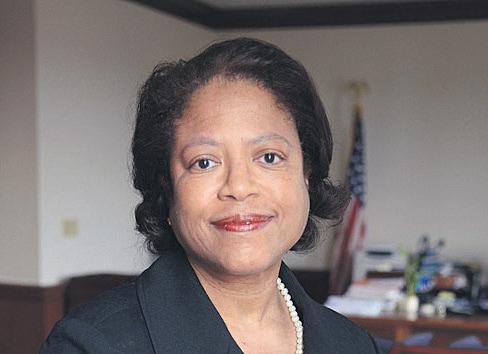
Swain said in an order that responses to the request must be filed by noon Thursday, Jan. 26, 2023. The court will thereafter take the notice of the mediation team on submission.
Seeking to promote the sugar industry again on the island, New Progressive Party Sen. Keren Riquelme Cabrera on Tuesday announced the filing of a resolution aimed at studying the feasibility of reactivating the lands of the Coloso Central in Aguada for the planting and processing of sugar cane for sale, both locally, nationally and internationally. as well as for tourism development, among other purposes, thus promoting the economic development of the region.
“In 2014, the administration of that time announced that they would be rehabilitating the venerable Coloso sugar mill in Aguada to make a project, allegedly to make molasses
to be sold in the local market; however, nothing was ever done and on the contrary, it was abandoned without pain and without glory,” Riquelme said. “The reality is that there is great potential in the development of the Coloso plant and its lands, so we will be filing a resolution to investigate the feasibility of a land rehabilitation program, planting and eventual processing of sugarcane in Aguada.”
The Coloso plant dates back to 1830, when the Hacienda Cano Las Nasas was inaugurated. In 1871 the plant was acquired by Emilio Vady, who baptized it as the Coloso Central (Central Colossus). In 1976 it was acquired by the Puerto Rico Land Authority. Coloso became the last sugar mill on the island in operation in 2001, until it finally ended
operations in 2003.
“Industries that once disappeared can reinvent themselves and become viable and prosperous economic activities, generating their own income for the well being of their communities,” the at-large senator said. “That is what we are looking for with the land of the old Colossus power plant. The resolution will also investigate the current state of the land, the structure of the plant and the surrounding buildings. It is a complete study of what is there and a proposal for the future.”
In December 2013, 846 acres of land were cleared in the Coloso Valley in Aguada, including in the area of the plant, due to allegations that there was asbestos content in the area, and for the cane planting project that never happened.
Vilma L. Rivera Fontánez of Aguas Buenas was selected as the 2023 Puerto Rico Mother of the Year, Mother of the Year officials said Tuesday.
She is the 70th woman in Puerto Rico history to hold the honor.
“Rivera Fontánez is a courageous, creative, persistent, and resilient mother who spent over 40 years as a Catholic music minister, and has served in multiple countries as a redemptorist lay missionary,” the organization said in a press release. “Rivera Fontánez, along with honorees from states across the United States, will be recognized during the 88th National Convention of American Mothers Inc. this April in Omaha, Neb.” the organization added. “One honoree will be named the National Mother of the Year during the convention.”
For nearly nine decades, American Mothers Inc. (AMI) has searched for and selected the Mother of the Year in every state, district and territory in the country.
“The hard work and inspiration of mothers are being recognized now more than ever,” said Joyce Stevens, president of American Mothers Inc. “It’s an honor to be part of an organization that’s connecting moms across the nation to celebrate motherhood and uplift their stories of resiliency and strength.”
Rivera Fontánez spent her whole life in the town of Aguas

Buenas, and has been married to José C. Agosto since 1984. A Catholic music minister for more than 40 years, she has served as a redemptorist lay missionary in Cuba, the Dominican Republic, the United States and Puerto Rico.
“Vilma has not had an easy life, contracting the polio virus when she was two months old and experiencing many hard blows since then,” the officials said. “However, she has faced each adversity with strength. God blessed her with a voice to praise her Creator, as well as the grace of a contagious smile and the passion to enjoy every moment of her walk. Vilma is a companion, a counselor, a cloth for tears, and a loving intercessor before God for her three children: José Carlos, Héctor Raúl (RIP) and Keyla María. Her four granddaughters are the joy of her home and another reason to thank God every day.”
A full list of Mother of the Year honorees can be found at AmericanMothers.org. Nominations for Mother of the Year are accepted annually, from Mother’s Day to Sept. 15.
AMI is a Washington, D.C.-based national nonprofit, nonpartisan organization given the responsibility of searching for and selecting the National Mother of the Year from honorees representing all 50 states, the District of Columbia, Puerto Rico and the U.S. Virgin Islands. Founded in 1931 as the Mothers Day Committee of the Golden Rule Foundation, AMI named the nation’s first Mother of the Year in 1935.
By THE STAR STAFFGov. Pedro Pierluisi Urrutia, together with Economic Development and Commerce Secretary Manuel Cidre Miranda and Education Secretary Eliezer Ramos Parés, announced on Tuesday the signing of a collaborative

agreement to establish a pre-apprenticeship program in vocational schools as part of the initiatives that promote labor development on the island.
The initiative will impact more than 27,000 students enrolled in vocational schools with the goal of turning them into successful professionals within emerging industries.
“Promoting an integrated education that adequately prepares our students to be successful in the work environment is fundamental to our present and future,” the governor said at a press conference. “I have been consistent that we must expand our vocational training offerings in Puerto Rico’s education system. It is a fact that as part of my programmatic commitments, the Department of Education is increasing the number of schools that make these offers and that among the new schools we are developing will be vocational schools.”
He added that “we have the lowest unemployment in the history of our island, so the need for employers to have a trained and prepared workforce to face the new challenges of the global market is increasingly evident.”
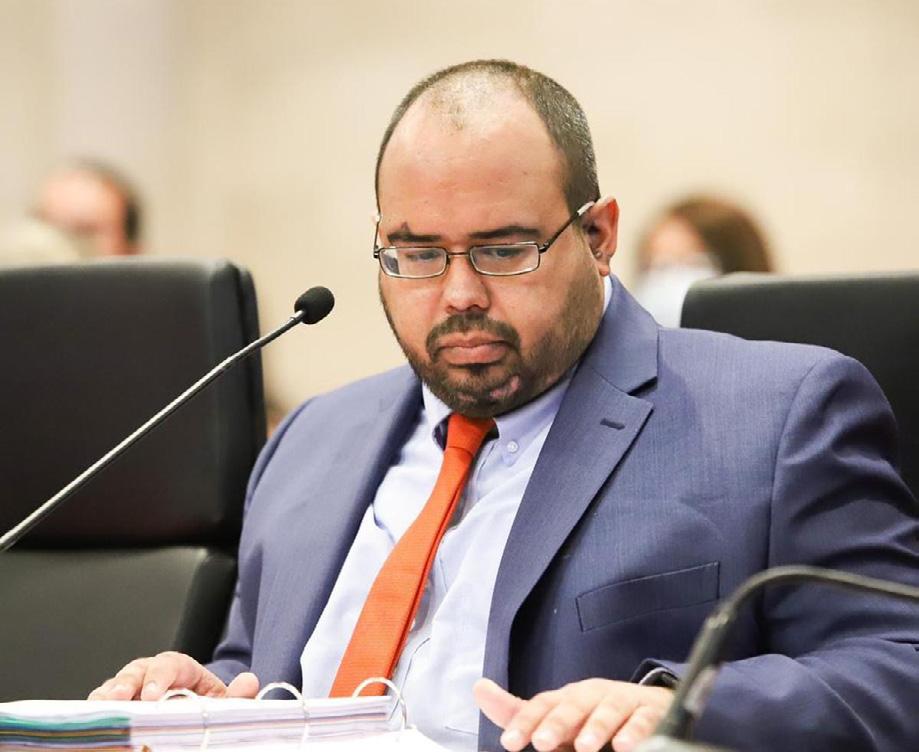
“With this project, we seek to train our young people
to meet that call of the labor sector,” Pierluisi said. “The Department of Education’s vocational program is in a stage of transformation and growth, with an emphasis on continuing to temper curricula and respond to the needs of our students so that they are better prepared, so we will continue to focus on supplying the necessary tools for greater use.”
The nation’s top environmental agency is still reeling from the exodus of more than 1,200 scientists and policy experts during the Trump administration. The chemicals chief said her staff can’t keep up with a mounting workload. The enforcement unit is prosecuting fewer polluters than at any time in the past two decades.
And now this: The stressed-out, stretched-thin Environmental Protection Agency is scrambling to write about a half-dozen highly complex rules and regulations that are central to President Joe Biden’s climate goals.
The new rules have to be enacted within the next 18 months — lightning speed in the regulatory world — or they could be overturned by a new Congress or administration.
The regulations are already delayed months past EPA’s own self-imposed deadlines, raising concerns from supporters in Congress and environmental groups. “It’s very fair to say we are not where we hoped we’d be,” said Miles Keogh, executive director of the National Association of Clean Air Agencies, which represents most state and local air regulators.
As staffing at the EPA thinned out, the workload only increased, both the agency and its critics say.
Career employees are being “worked to death,” said Betsy Southerland, a former top EPA scientist. “They’re under the greatest pressure they’ve ever been.”
Biden administration officials insist the agency has delivered more environmental protections than any previous presidency and listed dozens of new policies, including the creation of a high-level office focused for the first time on addressing racial disparities when it comes to environmental hazards.
The agency’s administrator, Michael S. Regan, has promised that new regulations being written by his staff now will be made public by spring. Agency officials said that the EPA has stepped up its recruitment efforts and has purchased software that has helped it identify more potential job candidates, particularly from universities.
“The agency is moving further and faster than ever before,” Dan Utech, Regan’s chief of staff, said in a statement. He added that accomplishments had come “despite depleted staffing levels, persistent funding
challenges and a previous administration that left the agency neglected and scientifically compromised.”
The EPA is at an unusual juncture. The 2021 bipartisan infrastructure law and the climate law enacted last year have begun to pump $90 billion into the agency over the next 10 years for climate projects such as $1.5 billion for new technologies to monitor and reduce methane emissions from oil and gas wells, $5 billion for states to purchase low-emission school buses, and $3 billion to cut pollution at ports. For the first time the EPA has “a little bit of walking-around money,” Regan joked to staff at a recent meeting.
But experts said they worry the EPA’s regulatory and enforcement work is taking a back seat to issuing grants.
“EPA is a regulatory agency, and I worry the huge piles of money they now have to administer and manage could end up obscuring the regulatory work the statutes say they have to do,” said Eric Schaeffer, executive director of the Environmental Integrity Project, a watchdog group.
A recent report card from Evergreen, an environmental group, found the EPA was behind its own deadlines on nine key environmental regulations, including limits on power plant emissions of mercury and

other toxic substances, ozone standards, and curtailing the storage of coal ash to avoid spills and contamination. Most worrisome, climate advocates said, is that the agency has yet to propose rules to limit greenhouse gas emissions from new gasfired power plants and existing coal and gas plants — measures that energy analysts say will be necessary to eliminate fossil fuels from the electricity sector by 2035 as Biden has pledged to do.
In a recent interview, Regan said his agency has recently been reassessing its regulatory plans. The millions of dollars now available through the climate law to make it cheaper and easier for utilities and automobile manufacturers to move away from fossil fuels has led the agency to consider whether it could impose more stringent emissions goals than initially conceived, he said. That would move the power and transportation sectors of the economy even faster away from fossil fuels. He said developing the legal and economic justification for such regulations would take time but was nearing completion.
“This spring, you’re going to see a number of actions taken by EPA,” Regan said.

Despite the billions earmarked for climate programs, EPA remains underfunded and understaffed when it comes to its other obligations, including enforcing environ-
mental laws and evaluating chemicals to ensure they don’t pose an unreasonable risk to human health or the environment.
Michal Freedhoff, who leads the EPA’s chemical unit, told Congress recently that the office of chemical safety would fall short of its obligations and miss many “significant statutory deadlines.” She blamed the fact that after a 2016 law significantly increased the agency’s duties, the EPA under the Trump administration never sought the resources from Congress that were required to perform the work.
In fact, former President Donald Trump tried each year to slash the EPA budget by at least 30%. Highly skilled scientists and other experts left the agency as the Trump administration dismantled science advisory panels, disregarded scientific evidence and weakened protections against pollution.
“They beat down the EPA workforce; a lot of people left dispirited,” said Sen. Tom Carper, D-Del., chair of the Committee on Environment and Public Works, which oversees the EPA.
Max Stier, head of the Partnership for Public Service, a nonpartisan organization that seeks to make government more effective, said the EPA faced a “consequential hurdle” to both accomplishing the long list of rules that Biden has promised and to expanding further to make sure money from the new climate law gets spent effectively.
“You have an organization that was at some level traumatized to begin with, that was facing difficulties created over many, many years of divestment, and now you have a new set of requirements that are going to call for new capabilities,” he said. “They’re going to have to build up their strength, and that does not happen overnight.”
his group had provided security for Roger Stone, a former adviser to Trump, and rushed to the Capitol on a golf cart to join the mob and confront police officers.
“To Minuta and these people storming into the Capitol, they were patriots,” Troy Edwards, a prosecutor, told the jury at the beginning of the trial. “And he was headed to join what he called patriots.”
Federal prosecutors described how Vallejo, an Army veteran from Arizona, kept watch over an arsenal of guns stashed in a hotel in Virginia as part of a “quick reaction force” that could deliver weapons to those members in Washington in the event of a breakdown in the rule of law.
They also returned to some of the evidence presented in the case against Rhodes last year, poring over reams of text messages in which members of the group fretted over Trump’s fate after the election and swapped outlandish conspiracies about Joe Biden and what they described as shadowy international forces influencing him.
Over the course of both trials, lawyers for the Justice Department argued that the Oath Keepers had for months expressed a desire to help Trump remain in power even after his election loss, and that they had positioned themselves in Washington on Jan. 6, ready to back the former president as an armed militia if Trump authorized them to.
“These defendants, they perverted the constitutional order,” Edwards, the prosecutor, said in December. “They were willing to use force and violence to impose their view of the Constitution and their view of America on the rest of the country.”
By ZACH MONTAGUEFour members of the far-right Oath Keepers militia were found guilty of seditious conspiracy earlier this week for their roles in trying to keep Donald Trump in office after his 2020 election defeat, nearly two months after the group’s leader — Stewart Rhodes — was convicted of the same offense in a separate trial in November.
A jury in U.S. District Court in Washington also found the four defendants guilty of two separate conspiracy charges.
The defendants — Roberto Minuta, Joseph Hackett, David Moerschel and Edward Vallejo — were originally charged along with Rhodes and other members of the group. But their trial was broken off as a separate proceeding by the judge in the case, Amit P. Mehta, because of space constraints in the courtroom.
On Jan. 6, 2021, Minuta, Hackett and Moerschel joined
others in the group in forcing their way inside the Capitol, while Vallejo, who was stationed in a hotel room stocked with rifles in Virginia, sent frequent texts offering to ferry weapons into the city if needed.

The jury returned the decision after about 15 hours of deliberation over three days, and it came as a parallel sedition trial for members of the Proud Boys — another far-right group that joined the mob outside the Capitol on Jan. 6 — continued to play out in the same courthouse.
The decision also came just hours after a jury found Richard Barnett, a rioter who was photographed reclining in Speaker Nancy Pelosi’s office, guilty on all eight charges he faced, including obstruction of an official proceeding and theft of government property.
The earlier trial of members of the Oath Keepers resulted in a more mixed outcome, with two of five defendants, Rhodes and a longtime ally, Kelly Meggs, found guilty of seditious conspiracy, the most serious charge. The jury in the earlier case acquitted Rhodes of two separate conspiracy charges.
The government depicted the defendants in the second trial as lower in the organization’s power hierarchy than those in the first case and more readily employed as foot soldiers for the group than as top operational coordinators.
Prosecutors had argued that on the day of the riot, Hackett and Moerschel joined a group of 12 others as the “boots on the ground,” forcing their way into the Capitol on Jan. 6 with “brute strength.”
They said that Minuta, a New York tattoo artist, followed shortly behind with a separate group that clashed aggressively with Capitol Police officers inside. Earlier that day, Minuta and
Lawyers for the defendants echoed arguments made in the previous trial — that while members of the group often darkly discussed the possibility of “revolution” and “civil war,” they never put together clear or practical plans to enter the Capitol or stop lawmakers from certifying the 2020 election.
But they also characterized their clients as “rookies” who had been radicalized by right-wing media and Trump in the weeks after the election, and had merely responded to the Oath Keepers’ leaders in traveling to Washington, ultimately winding up in the riot.
In a statement Monday, Attorney General Merrick Garland celebrated prosecutors’ work in the case.
“A jury found all four defendants guilty of seditious conspiracy, as well as conspiracies to obstruct the certification of the Electoral College vote and to prevent members of Congress from discharging their duties,” Garland said in the statement. “I am grateful to the prosecutors, agents and staff for their excellent work on this case.”
Dating to the Civil War era, the charge of seditious conspiracy has historically been lodged against a wide array of defendants, although it has been used sparingly because of the complexity of proving that a group planned collectively to oppose the government by force.
But the charge has become central to the Justice Department’s efforts to prosecute national organizations involved in the riot on Jan. 6, and with the decision Monday, separate juries have now returned guilty verdicts for both top leaders of the group as well as more junior members.
Mehta declined Monday to detain the four before sentencing, finding that they posed little flight risk. He opted instead to hold them under house arrest.
Arizona’s new Democratic attorney general, Kris Mayes, is redirecting an election integrity unit her Republican predecessor created, focusing its work instead on addressing voter suppression. The shift by Mayes is one of her first acts since she took office this month.
The unit’s former leader, Jennifer Wright, meanwhile, has joined a legal effort to invalidate Mayes’ narrow victory in the November election.
“Under my predecessor’s administration, the election integrity unit searched widely for voter fraud and found scant evidence of it occurring in Arizona,” Mayes said in a statement provided by her office on Monday. “That’s because instances of voter fraud are exceedingly rare.”
The former attorney general, Mark Brnovich, a Republican who ran unsuccessfully for the U.S. Senate last year, created the office to investigate voter fraud complaints in Arizona, a battleground state.
Mayes said in the statement that she did not share the priorities of Brnovich, whom she described as being preoccupied with voter fraud despite isolated cases. The office has five pending voter fraud investigations, as of late October, and a spokesperson for Mayes said Monday that there was no plan yet for how to proceed with them.
Brnovich did not immediately respond to a request for comment.
Republicans in Arizona have amplified conspiracy theories and fraud claims since the 2020 election and the midterms last year, when the attorney general’s race ended with a recount that was decided by 280 votes.
Mayes said that protecting voting access and limiting voter suppression would be at the forefront of her administration.
“I will also use this unit to protect elections officials, election volunteers and poll workers against threats of violence and against interference in our elections,” she said. In addition, the unit will seek to defend vote-bymail rules, which she said “90% of Arizonans enjoy and in many cases depend on.”
Wright, a former assistant attorney general who had led the election integrity unit for Brnovich, announced last week that she had begun a new role as a lawyer for Abraham Hamadeh, the Republican who lost to Mayes and is planning to continue his legal efforts to try to overturn the election.
Wright referred questions Monday about her new role to the campaign of Hamadeh, who was
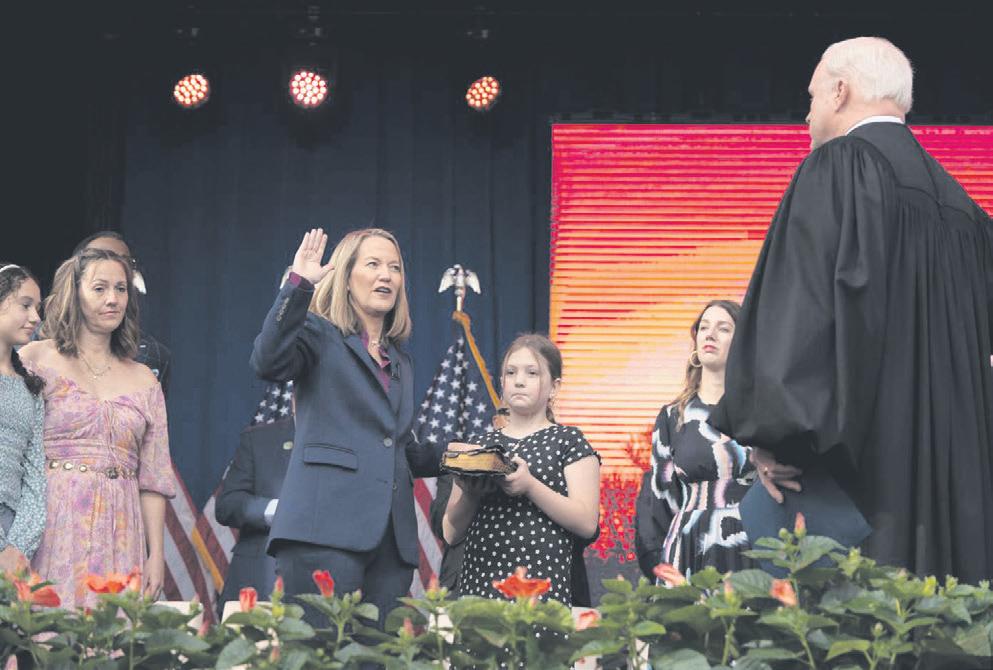
part of a group of prominent election deniers seeking statewide office in Arizona during the midterms.
In December, his legal efforts to overturn his election loss were dismissed in court and a recount confirmed his defeat. The outcome dealt another blow to Arizona Republicans who entered the midterms with heightened expectations for victory, seizing on high inflation and President Joe Biden’s flagging job approval numbers. Instead, Democrats won most of the marquee statewide offices.
Election deniers pointed to technical glitches on Election Day, which disrupted some ballot counting in Arizona’s most populous county, Maricopa, to fuel conspiracy theories and baseless claims. They also tried to seize on the undercounting of 500 ballots in Pinal County, outside Phoenix, which officials attributed to human error and which has been the basis of Hamadeh’s latest efforts to overturn the election.
“Not only do I believe Abe is right, but I also believe that he will be successful in his election contest, and that is why I have joined this fight,” Wright said in a statement provided by Hamadeh’s campaign. “I look forward to getting Kris Mayes out of the office she should have never occupied in the first place.”
In Arizona, a cauldron of election denialism, Brnovich represented somewhat of an enigma, defending the state’s vote count after the 2020 presidential election. His stance drew the ire of former President Donald Trump, who sharply criticized Brnovich last June and endorsed Brnovich’s Republican opponent, Blake Masters, who won the Senate primary but lost in the general election.
But Brnovich has also suggested that the 2020 election revealed “serious vulnerabilities” in the electoral system and said cryptically on the former Trump aide Steve Bannon’s podcast last spring, “I think we all know what happened in 2020.”
Gobierno de Puerto Rico


El peticionario, Sra. Sonia Piñero Valderrama, cuya dirección postal es HC-02 Box 6859 Ciales PR 00638, ha solicitado a la Oficina Regional de Arecibo del Departamento de Recursos Naturales y Ambientales (DRNA) el Permiso de Construcción y Operación UIC-21-47-0006-OC para una facilidad de inyección subterránea (FIS) Clase VII bajo las provisiones del Reglamento para el Control de la Inyección Subterránea (RCIS) del Programa para el Control de la Inyección Subterránea (PCIS) y la Ley Federal de Agua Potable Segura, según enmendada, 42 USC 300f, et seq. (LFAPS).
La FIS consiste de un tanque de retención de doble cámara en forma rectangular de 14 pies de largo por 13.75 pies de ancho por 8 de profundidad líquida para una capacidad de 11,519.20 galones con una trampa de grasa Modelo WP-GT-50 de 32 1/12 pulgadas por 22 1/16 pulgadas por 21 ó pulgadas de altura para la disposición de aguas sanitarias y de limpieza provenientes del Oriental China Restaurant en la Carr. 2 Km. 44.7 Bo. Cotto Norte en Manatí, Puerto Rico.
Luego de realizada la evaluación correspondiente de los documentos sometidos, el DRNA tiene la intención de otorgar los permisos de construcción y operación para la instalación en conformidad con el RCIS y de la LFAPS. Esta notificación se hace para informar que el DRNA ha preparado el borrador del permiso de operación de forma tal que el público interesado puede someter sus comentarios con relación al mismo. El borrador de permiso contiene las condiciones y prohibiciones necesarias para cumplir con los requisitos reglamentarios aplicables.
El público puede evaluar copia de las solicitudes de permiso que sometió el peticionario ante el DRNA, los borradores de permiso y otros documentos relevantes en la Oficina Regional de Arecibo del DRNA situada en la Avenida San Patricio #44 Marginal Carr. #2 Km. 80.6 en Arecibo, Puerto Rico. Copia de dichos documentos pueden adquirirse ($0.50 por pliego) en el antes mencionado lugar entre las 8:00 am y las 4:30 pm de lunes a viernes o escribiendo a la siguiente dirección: Departamento de Recursos Naturales y Ambientales, San José Industrial Park, 1375 Ave. Ponce De León, San Juan PR 00926.
Las partes interesadas pueden enviar sus comentarios al Sr. Moisés Soto Pérez, Director Regional, Oficina Regional de Arecibo, o solicitar una vista administrativa a la Secretaria del DRNA a la dirección postal indicada anteriormente. Los comentarios por escrito o la solicitud de vista pública deberán ser sometidos no más tarde de treinta (30) días a partir de la publicación de este aviso. La fecha límite para someter comentarios puede ser extendida si se estima necesario o apropiado para el interés público. La solicitud para una vista pública debe señalar la razón o razones que en la opinión del solicitante ameritan la celebración de la misma. De realizarse una vista pública, los interesados o afectados tendrán una oportunidad razonable para presentar evidencia o testimonio sobre si se emite o deniega el permiso, si la Secretaria determina que dicha vista es necesaria o apropiada.
28 DEC 2022
Rodríguez Vega Secretaria

Este anuncio se publicó conforme a lo requerido por la Ley Sobre Política Pública Ambiental, Ley Núm. 416 del 22 e septiembre de 2004, según enmendada. El costo del Aviso Público es sufragado por la entidad peticionaria.
San José Industrial Park, 1375 Ave Ponce de León, San Juan, PR 00926 ' (787) 999-2200 • 6 (787) 999.2303 • www.drna.pr.gov
There was the mass shooting near a youth center in Allentown, Pennsylvania, and the one at a Subway restaurant in Durham, North Carolina. Another took place behind a beer hall in Oklahoma City, and another at a strip club outside Columbus, Ohio. Two mass shootings ended parties in different Florida cities.
And that was just on New Year’s Day. By the start of the fourth week in January, the tally had grown to include at least 39 separate shootings in which four or more people were injured or killed, according to the Gun Violence Archive, outlining a striking explosion of violence across a range of sites in nearly every corner of the nation that killed at least 69 people.
The deadliest shooting so far took place over the weekend in of Monterey Park, California, a city with a thriving Asian American community where a gunman killed 11 people and wounded nine others inside a popular ballroom dance hall. Authorities said the gunman, who may have targeted his victims and who later killed himself, was a 72-year-old man.
Then, on Monday, came another deadly mass shooting in California. A gunman, whom authorities said was a 67-year-old man, killed seven people and seriously wounded at least one other person in Half Moon Bay, south of San Francisco.
“At the hospital meeting with victims of a mass shooting when I get pulled away to be briefed about another shooting,” Gov. Gavin Newsom of California tweeted on Monday. “Tragedy upon tragedy.”
The frequency of mass shootings and the variety of places in which they now take place — at offices and schools, nail salons and houses of worship, grocery stores and restaurants — contributes to the sense, prevalent across America, that such violence could break out at any moment, anywhere. It fuels calls for gun control just as certainly as it does the purchase of more and more guns.
Public shooting sprees rivet the nation, but can also have the effect of normalizing violence.
Criminologists say the prevalence of mass shootings is brought about in part by the easy access to so many weapons — a unique feature of the United States — as well as by a copycat effect.
“Would someone like this have committed a mass shooting at a dance hall in the past?” Adam Lankford, a criminologist at the University of Alabama, said, referring to the older man believed to have been the gunman in Monterey Park. “Maybe not. You can kind of think of it as a snowball effect. The more incidents there are, the more prominent this option will be in angry people’s minds.”
And at the same time, the recurrence of such gun violence risks having the effect of desensitizing the nation to tragedy, so much so that warnings not to become accustomed to high-profile mass shootings are a familiar part of the response.

Tasa mínima, promedio ponderado, y máxima para préstamos personales pequeños otorgados para la semana que terminó el sábado, 21 de enero de 2023
“We cannot become numb to these horrific acts of violence,” the district attorney of San Francisco, Brooke Jenkins, said after the Monterey Park shooting, which took place amid Lunar New Year celebrations over the weekend. “The year of the Rabbit stands for hope.”

The number of mass shootings has been rising, though not steadily, since 2014, according to data compiled by the Gun Violence Archive, which tracks public reports of shootings. There were 690 shootings with four or more victims in 2021, more than double the 2014 total. The number fell slightly last year, to 647, but remained significantly higher than in previous years.
And the number of such shootings appears to be rising in the first few weeks of this year, as compared with
similar periods in recent years. There has been, on average, fewer than one mass shooting per day from Jan. 1 to Jan. 23 in each of the past five years, according to the Gun Violence Archive data, but the past two years have been trending up, to 28 last year from 26 in 2021, and 16 in 2018.
“There is no place left in America that is safe from gun violence,” David Min, a California state senator, said in response to the Monterey Park shooting. “This has to stop. Enough is enough.”
A 2015 study linked the nation’s high rate of mass shootings to its high rate of gun ownership. Americans make up about 5% of the global population and own 42% of the world’s guns, the study said.
It is difficult to calculate the precise number of guns sold each year in the United States, because of varying state laws and purchase scenarios. But FBI data on the number of firearm background checks can serve as a measure. By that count, the totals have swelled to 40 million background checks in 2021 from 10 million in 2005.
But subsequent work suggests that the governing factor may be easy access to guns, not ownership of them, said Lankford, the University of Alabama criminologist, who wrote the 2015 study.
Nearly 40% of American men tell researchers that they own a gun, so gun ownership alone is not a useful predictor of who is likely to commit a mass shooting, Lankford said. In a study of the 14 deadliest mass shootings since the high school shooting in Columbine, Colorado, in 1999, he and a co-author showed that half of the perpetrators had not acquired their first firearm until the final year before their attack.
In many of the less widely reported mass shootings that take place in the United States, information about the gunman and the weapon used is not readily known. After 12 people were shot in Baton Rouge, Louisiana, over the weekend, three with what were described as life-threatening injuries, police implored people with information to come forward with information about the gunman.
In Rockford, Illinois, northwest of Chicago, three people died and two others were injured in a shooting this month, and a suspect has yet to be identified publicly.
“You wish there was the same attention that was put on these everyday shootings,” the mayor of Rockford, Tom McNamara, said in an interview.
“I don’t want to sound callous about Monterey Park, but at least those people are going to be remembered,” he added. “Last year I lost 15 lives in my community. There was no national story about it. It’s just sad that we live in a country where violence is normalized.”
Eighteen months ago, online used-car retailer Carvana had such great prospects that it was worth $80 billion. Now, it is valued at less than $1.5 billion, a 98% plunge, and is struggling to survive.
Many other tech companies are also seeing their fortunes reverse and their dreams dim. They are shedding employees, cutting back, watching their financial valuations shrivel — even as the larger economy chugs along with a low unemployment rate and a 3.2% annualized growth rate in the third quarter.
Here is one largely unacknowledged explanation: An unprecedented era of rock-bottom interest rates has abruptly ended. Money is no longer virtually free.
For more than a decade, investors desperate for returns sent their money to Silicon Valley, which pumped it into a wide range of startups that might not have received a nod in less heady times. Extreme valuations made it easy to issue stock or take on loans to expand aggressively or to offer sweet deals to potential customers that quickly boosted market share.
It was a boom that seemed as if it would never end. Tech piled up victories, and its competitors wilted. Carvana built dozens of flashy car “vending machines” across the country, marketed itself relentlessly and offered very attractive prices for trade-ins.
“The whole tech industry of the last 15 years was built by cheap money,” said Sam Abuelsamid, principal analyst with Guidehouse Insights. “Now they’re getting hit by a new reality, and they will pay the price.”



Cheap money funded many of the acquisitions that substitute for organic growth in tech. Two years ago, as the pandemic raged and many office workers were confined to their homes, Salesforce bought office communications tool Slack for $28 billion, a sum that some analysts thought was too high. Salesforce borrowed $10 billion to do the deal. This month, it said it was cutting 8,000 people, about 10% of its staff, many of them at Slack.
Even the biggest tech companies are affected. Amazon was willing to lose money for years to acquire new customers. It is taking a different approach these days, laying off 18,000 office workers and shuttering operations that are not financially viable.
Carvana, like many startups, pulled a page out of Amazon’s old playbook, trying to get big fast. Used cars, it believed, were a highly fragmented market ripe for reinvention, just the way taxis, bookstores and hotels had been. It strove to outdistance any competition.
The company, based in Tempe, Arizona, wanted to replace traditional dealers with, Carvana said grandly, “technology and exceptional customer service.” In what seemed to symbolize the death of the old way of doing things, it paid $22 million for a 6-acre site in Mission Valley, Cali-
fornia, that a Mazda dealer had occupied since 1965.
Where traditional dealerships were literally flat, Carvana built multistory car vending machines that became memorable local landmarks. Customers picked up their cars at these towers, which now total 33. A corporate video of the building of one vending machine has more than 4 million views on YouTube.

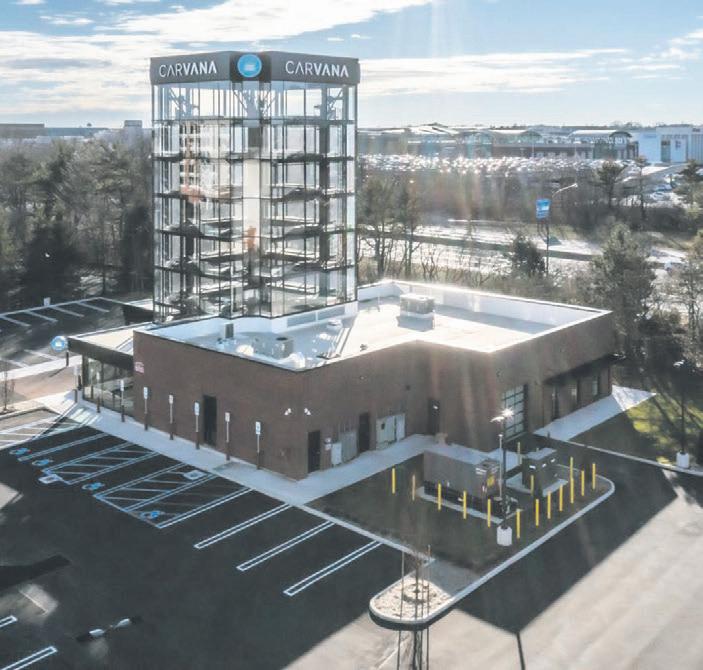
In the third quarter of 2021, Carvana delivered 110,000 cars to customers, up 74% from 2020. The goal: 2 million cars a year, which would make it, by far, the largest used-car retailer.
Then, even more quickly than the company grew, it fell apart. When used-car sales rose more than 25% in the first year of the pandemic, that created a supply problem: Carvana needed many more vehicles. It acquired a car auction company for $2.2 billion and took on even more debt at a premium interest rate. And it paid customers handsomely for cars.
But as the pandemic waned and interest rates began to rise, sales slowed. Carvana, which declined to comment for this article, did a round of layoffs in May and another in November. Its CEO, Ernie Garcia, blamed the higher cost of financing, saying, “We failed to accurately predict how all this will play out.”
Some competitors are even worse off. Vroom, a Houston company, has seen its stock fall to $1 from $65 in mid-2020. Over the past year, it has dismissed half of its employees.
“High rates are painful for almost everyone, but they are particularly painful for Silicon Valley,” said Kairong
Xiao, an associate professor of finance at Columbia Business School. “I expect more layoffs and investment cuts unless the Fed reverses its tightening.”
At the moment, there is little likelihood of that. The market expects two more rate increases by the Federal Reserve this year, to at least 5%.
The easy-money era had been well established when Amazon decided it had mastered e-commerce enough to take on the physical world. Its plans to expand into bookstores was a rumor for years and finally happened in 2015. The media went wild. According to one well-circulated story, the retailer planned to open as many as 400 bookstores.
The company’s idea was that the stores would function as extensions of its online operation. Reader reviews would guide the potential buyer. Titles were displayed face out, so there were only 6,000 of them. The stores were showrooms for Amazon’s electronics.
Being a showroom for the internet is expensive. Amazon had to hire booksellers and lease storefronts in popular areas. And letting enthusiastic reviews be one of the selection criteria meant stocking self-published titles, some of which were pumped up with reviews by the authors’ friends. These were not books that readers wanted.
The retailer closed 68 stores in March, including not only bookstores but also pop-ups and so-called four-star stores. It continues to operate its Whole Foods grocery subsidiary, which has 500 U.S. locations, and other food stores. Amazon said in a statement that it was “committed to building great, long-term physical retail experiences and technologies.”
Traditional bookselling, where expectations are modest, may have an easier path now. Barnes & Noble, a bricks-and-mortar chain recently deemed all but dead, has moved into two former Amazon locations in Massachusetts, putting about 20,000 titles into each. The chain said the stores were doing “very well.” It is scouting other former Amazon locations.
“Amazon did a very different bookstore than we’re doing,” said Janine Flanigan, Barnes & Noble’s director of store planning and design. “Our focus is books.”
ins and erode savings, that will also leave households worse off.
“I do worry about the future, I have to say,” said Karen Loeb, a 71-year-old adjunct sociology professor in Amherst, Massachusetts. She has been shopping at thrift stores and baking her own challah after watching the prices of goods and groceries rocket higher over the past two years.
For people like Loeb, as well as for central bankers, there are key reasons to hope that inflation will moderate notably in 2023.
Housing costs are still rising in official price data, but realtime rent trackers show steep slowdowns in asking rents. Economists expect that to feed through to inflation data over the coming months.
When it comes to cars, used — and, more recently, new — inventory has been improving, which is already beginning to lead to declines in automobile prices. And a broad range of other goods prices are slowing their ascent or dropping as shipping costs fall back to the pre-pandemic levels and supply shortages ease.
Putting gas in the tank at a station in Manhattan, Jan. 11, 2023. After six months of declines, inflation seems to be turning a corner, but the road back to normal is still an uncertain one.
 By JEANNA SMIALEK
By JEANNA SMIALEK
Martin Bate, a 31-year-old transportation planner in Fort Worth, Texas, spent the middle of 2022 feeling that he was “treading water” as high gas prices, climbing food costs and the prospect of a big rent increase chipped away at his finances.
“I was really starting to feel financially squeezed in a way that I hadn’t felt ever before, since finishing college,” Bate said. Since then, he has received a promotion and a raise that amounted to 12%. Gas prices have fallen, and local housing costs have moderated enough that next month he is moving into a nicer apartment that costs less per square foot than his current place.
“My personal situation has improved a good amount,” Bate said, explaining that he’s feeling cautious but hopeful about the economy. “It’s looking like it might shape out all right.”
People across the country are finally experiencing some relief from what had been a relentless rise in living costs. After repeated false dawns in 2021 and early 2022 — when price increases slowed only to accelerate again — signs that inflation is genuinely turning a corner have begun to accumulate.
Inflation has slowed on an annual basis for six consecutive months, dipping to 6.5% after peaking at about 9% in the summer, partly as gas has become cheaper. But the deceleration is true even after volatile food and fuel are stripped out: So-called core consumer prices have climbed 0.3% or less for each of the past three months. That’s faster than the 0.2% month-to-month changes that were typical before the pandemic but much slower than the 0.9% peak in April 2021.
America may have reached an inflection point on inflation at last. The question now centers on what will happen next.
Some economists expect inflation to remain stubbornly faster than before the pandemic, while others anticipate a steep deceleration. Some anticipate something in between. Which prospect plays out matters enormously: The speed and scope of the inflation cooldown will inform how high Federal Reserve policymakers raise rates, how long they leave them elevated and how much pain they inflict on the economy.
For now, the staggering uncertainty has prompted Fed officials to come out in favor of further slowing — but not stopping — their interest rate increases at their Jan. 31 and Feb. 1 meeting. Officials pulled back from their previous three-quarter-point increases to a half-point move in December, and many support raising rates this time by just a quarter-point. Moving more gradually would give policymakers more of a chance to see how the economy was developing, lessening the risk that they drive the economy off a cliff.
“If you’re on a road trip and you encounter foggy weather or a dangerous highway, it’s a good idea to slow down,” Lorie Logan, president of the Federal Reserve Bank of Dallas, said during a speech last week. The same considerations that prompted central bankers to decelerate in December “suggest slowing the pace further at the upcoming meeting.”
As officials and economists try to figure out what will happen with inflation, the fate of everyday Americans hangs in the balance. If the Fed slows down the economy too much in its bid to control prices and causes a steeper recession than is necessary, people will pay with their jobs.
But if continued rapid price increases chip away at pay ga-
While rapid goods inflation was touched off by the supply problems, it was also partly a function of strong demand: Consumer spending on household and other products has been elevated since 2020, in part because families took government stimulus payments and the money they saved during pandemic lockdowns and spent it on renovations or camping gear. But demand is waning as savings slowly erode.
Plus, the Federal Reserve raised interest rates from near zero to above 4.25% last year, which could weigh on consumer spending and make it harder for firms to institute big price increases without scaring away shoppers.
“It seems like a very prolonged supply shock — to some extent a demand shock — that we’ve endured,” said Omair Sharif, founder of Inflation Insights. “Those things seem pretty clearly on the road to normalization.”
Encouragingly, prices of more than just a few goods or services are showing slowdowns. The share of product categories with inflation above 3% declined from almost three-fourths in early 2022 to less than one half in December, Christopher Waller, a Fed governor, said in a speech last week.
But risks remain, because it is unclear whether the forces now dragging inflation down will be enough to quickly return prices to an annual pace of 2%, the Fed’s goal.
Wage growth is already showing some signs of slowing, and the Fed will receive another employment cost index report the day before its Feb. 1 rate decision.
While other labor indicators have been more resilient, Fed officials predicted in their latest economic forecasts that unemployment would rise to 4.6% by the end of the year, from 3.5% now.
While that would hurt some households, Fed officials still hope for a relatively soft landing. In light of recent inflation data, even Lawrence H. Summers, a Harvard economist and former Treasury secretary who has been warning that the economy could be heading for a sharp downturn, has upgraded America’s chances of avoiding a painful recession.
“Soft landings are the triumphs of hope over experience, but sometimes hope does triumph over experience,” Summers said in an interview with Bloomberg Television last week.
U.S. stock indexes fell on Tuesday after industry bellwethers 3M, Johnson & Johnson, and GE beat expectations for profit but warned of a challenging year ahead.
The fourth-quarter earnings season is keenly watched as companies are expected to feel the full impact of the Federal Reserve’s rate-hike campaign. The central bank is widely expected to raise rates by another quarter of a percentage point next week.
Industrial conglomerate 3M Co fell 5.9%, leading the decliners among Dow components after reporting a fall in quarterly profit.
Verizon Communications Inc dropped 0.4% after forecasting annual profit below estimates, while Johnson & Johnson fell 0.5% as it warned that its medical devices business would be hit in the first half of 2023 due to a surge in COVID-19 cases in China.
General Electric Co fell 1.1% on a disappointing profit forecast for the year, despite topping quarterly earnings estimates.
“The problem today is mainly earnings,” said Fall Ainina, research director at James Investments. “Now many are forecasting a profit recession, which is back-to-back quarters of negative earnings.”
Wall Street’s main indexes started the earnings- and data-heavy week on a strong note amid renewed appetite for growth stocks following a battering last year.
After logging its biggest gain in over two months on Monday, Advanced Micro Devices Inc slipped 2.8% as Bernstein downgraded it to “market-perform” from “outperform”.
The Philadelphia SE Semiconductor index dropped 0.9%to slip from its one-month high.
Big Tech earnings could also determine whether renewed enthusiasm for growth stocks will be sustained.
“In the near-term, the answer seemingly lies with tech earnings ... longer-term, if we do experience a Fed pivot this year, then would anticipate a strong, positive buying impulse for tech,” JPMorgan analysts wrote in a client note.
Microsoft Corp is scheduled to report quarterly earnings after the bell.
Analysts now see fourth-quarter earnings for S&P 500 companies dropping 2.9% year-on-year, nearly twice as much as the 1.6% annual drop seen at the beginning of the year, according to Refinitiv data.
At 10:20 a.m. ET, the Dow Jones Industrial Average was down 107.64 points, or 0.32%, at 33,521.92, the S&P 500 was down 17.28 points, or 0.43%, at 4,002.53, and the Nasdaq Composite was down 38.58 points, or 0.34%, at 11,325.83.

A slew of stocks was briefly halted for trading on the New York Stock Exchange shortly after the market opened on Tuesday.
Data showed U.S. business activity contracted for a seventh straight month in January, but business confidence strengthened as the new year began.
Other major growth stocks also dipped, with Alphabet Inc falling 1.1%. The U.S. Justice Department is poised to sue Google as soon as Tuesday, according to a report, regarding its dominance over the digital advertising market.



Declining issues outnumbered advancers for a 1.75-to-1
ratio on the NYSE and for a 1.48-to-1 ratio on the Nasdaq.
The S&P index recorded 23 new 52-week highs and 10 new lows, while the Nasdaq recorded 28 new highs and 12 new lows.
Advancing issues outnumbered decliners for a 1.17-to-1 ratio on the NYSE. Declining issues outnumbered advancers for a 1.18-to-1 ratio on the Nasdaq.
The S&P index recorded seven new 52-week highs and no new low, while the Nasdaq recorded 46 new highs and six new lows.
Tesla Inc’s shares surged 7.7% after China Merchants Bank International said Tesla’s sales in China in November were boosted by price cuts and incentives offered on its Model 3 and Model Y.
Poland has formally asked Germany for permission to transfer its Leopard 2 tanks to Ukraine, the Polish defense minister, Mariusz Blaszczak, said Tuesday, and his German counterpart said Berlin would decide soon on whether it would send its own tanks.
“We are preparing our decision, which will come very soon,” the German official, Boris Pistorius, said, speaking at a news conference with Jens Stoltenberg, secretary-general of NATO. “We are looking into the matter, what the current status is regarding our Leopard tanks. It is not just a matter of counting our tanks — we know how many we have — it’s a lot more complicated than that.”
“It is often said that there is a lack of unity among the allies or that Germany is isolated, but that is not the case,” he added.
Germany’s reluctance to send Ukraine its Leopard 2s to Ukraine, or to approve the transfer of the German-made tanks from the many European countries that stock them, has frustrated some NATO allies as well as the government in Kyiv, which says that it urgently needs the equipment to
A Leopard 2 battle tank at a military training in Munster, Germany, in 2019.
stave off a potential Russian offensive.
Ukraine has been pleading for months for hundreds of modern battle tanks made by European allies and the United States to reinforce its battered Soviet-era fleet. Some NATO countries, not least the Baltic States, have expressed increasing frustration with the time it has taken Germany to consent to allow Ukraine to be supplied with the Leopard 2 tanks, which are some of the most advanced in the world. At a meeting of NATO defense ministers last week, no agreement
was reached on the issue.

Berlin, for its part, has argued that Washington should authorize sending its own Abrams tanks. And Pistorius emphasized that Chancellor Olaf Scholz’s government would not stop other nations from training Ukrainian forces on how to use the Leopards.
Britain has promised to supply 14 of its Challenger 2 tanks, but the Leopard 2 is a natural choice for Ukraine because hundreds are potentially available in Europe. Because more than a dozen countries use the Leopard 2, it would be easier to establish the supply chains, maintenance, training and logistics needed for effective deployment.

Russia’s invasion has galvanized NATO and given the European Union, which has imposed sanctions on Moscow, a renewed sense of purpose, but the disagreement over the tanks has exposed how support for Ukraine is still subject to political dynamics within individual countries.
Stoltenberg welcomed the discussion with Pistorius but urged countries to speed up delivery of arms to Ukraine.
“At this pivotal moment in the war, we must provide heavier and more advanced systems to Ukraine, and we must do it faster,” he said.
Several top Ukrainian officials were fired Tuesday, including the governors of several Ukrainian regions, amid a ballooning corruption scandal. The move marked the biggest upheaval in President Volodymyr Zelenskyy’s government since Russia’s invasion began 11 months ago.
Ukraine’s Cabinet ministry, which announced the firings on the Telegram social messaging app, provided no details about the reason, but it followed reports that Ukraine’s military had agreed to pay inflated prices for food meant for Ukrainian troops.
Earlier Tuesday, Ukraine’s Ministry of Defense said that Viacheslav Shapovalov, a deputy minister, had “asked to be fired” after the reports. The ministry said in a statement that relieving Shapovalov of his duties would “preserve the trust” of Ukrainians and the country’s international partners.
While there was no sign that the procurement scandal involved the misappropriation of Western military assistance, the dismissals appeared to reflect Zelenskyy’s goal of reas-
suring Ukraine’s allies — which are sending billions of dollars in military aid — that his government would show zero tolerance for graft as it prepares for a possible new offensive by Moscow.
In addition to the officials named Tuesday, Zelenskyy’s own deputy, Kyrylo Tymoshenko, tendered his resignation. Tymoshenko, the deputy head of the presidential office, was well known domestically and internationally, often tasked with providing updates on the war. But Ukrainian journalists had raised questions about his lavish lifestyle and use of government resources.
In particular, he had been criticized for zipping around in an expensive SUV that General Motors had donated for use in humanitarian missions.
Ukraine was struggling to get control over flourishing corruption long before the invasion. But for many Ukrainians the sense of common struggle and unity throughout the war makes the idea that top officials might be undermining the country’s collective effort for their own gain particularly galling, especially if the corruption involves the military.
Over the weekend, a Ukrainian newspaper reported that
the Ministry of Defense had purchased food at inflated prices, including eggs at three times their cost. Defense Minister Oleksii Reznikov called the allegations “absolute nonsense” and the product of “distorted information.”
In its statement Tuesday, the ministry emphasized that the “voiced accusations are unfounded and baseless,” but called Shapovalov’s request for dismissal “a worthy act in the traditions of European and democratic politics, a demonstration that the interests of defense are higher than any cabinets or chairs.”
That it took three days for Shapovalov to step down raises serious questions about the Ministry of Defense’s commitment to rooting out corruption, said Vitaliy Shabunin, the director of operations for the Anti-Corruption Action Center, a Kyiv-based nongovernmental organization.
“A new social contract emerged during the war between civil society, journalists and the government: We will not criticize you like we did before the war, but your reaction to any scandal and ineffectiveness must be as tough as possible,” Shabunin said. “The position of the defense minister has broken this agreement.”
Eliesio Marubo, a lawyer with Univaja, an Indigenous association that, along with Pereira, helped organize patrols of the region. “The federal police didn’t answer that. We need a deeper investigation.”
The police said that they believed Villar ordered the killings based on testimony from witnesses and records that showed he supplied the ammunition used in the killing and paid for the lawyers of one of the gunmen.
The Times was unable to contact Villar or a lawyer representing him. A lawyer who had been working on his behalf said he had left the case.
Pereira and Phillips were traveling deep in the Amazon in early June to meet with a group of Indigenous men who were patrolling the Javari Valley, a remote Indigenous reservation the size of Portugal that is home to at least 19 isolated groups.
The Indigenous men had taken up the patrols in an effort to fight rampant illegal fishing and hunting in the region, which had increased after the Brazilian government largely abandoned the area, particularly under the administration of the former far-right president, Jair Bolsonaro.
Pereira, who was once Brazil’s former top official on isolated tribes, was training the Indigenous men to document crimes using smartphones and drones, and Phillips was interviewing them for a book he was writing about the way people were trying to save the Amazon.
By JACK NICAS and FLAVIA MILHORANCEAn illegal-fishing trafficker ordered henchmen to kill an expert on Indigenous tribes in June because he was disrupting the illicit game trade, Brazilian authorities said Monday, leading to an assassination that also left a British journalist dead. The killings attracted international attention to the bloody conflict over the Amazon rainforest.
Brazilian federal police officials said they had gathered evidence that showed Rubén Dario da Silva Villar, a Colombian man widely known as Colombia, had ordered the killing of Bruno Pereira, 41, an activist and former Brazilian government official, because he was helping Indigenous tribes combat illegal fishing and hunting.
As a result, they said, he was hurting Villar’s business.
When other men went to carry out the orders, pursuing Pereira in a boat and shooting him with shotguns,
they also killed the person he was with: Dom Phillips, 57, a British freelance journalist who had written for The Guardian and the New York Times and was traveling in the Amazon at work on a book.
Villar is now at least the fourth man arrested in the murders of Pereira and Phillips. The federal police have also charged three other men with killing the men or helping to hide their bodies. The police said they were also searching for another man who they believe gave one of the murder weapons to the gunmen and later helped to hide the bodies.

Law enforcement officials said they planned to charge Villar with the murders, largely ending the investigation into the killings. But Indigenous activists in the region said more work needed to be done.
“Who is financing these people so they can continue their illegal activities?” asked

The Indigenous patrols had been successful at times, including leading authorities to a poacher with 650 pounds of illegal game and nearly 900 pounds of illegal fish. The patrols had upset Villar, who had run a trafficking operation in the area, a violent, crime-ridden region of the rainforest on the border of Brazil, Colombia and Peru, police said.
The police first arrested Villar in July for using a false identification when questioned about the murders. He was later released. The police arrested him again in December for breaking the rules of his previous release. He has been in detention since.

Millions of Pakistanis lost electricity earlier this week as a major power outage swept across the country, the longest in recent years and a breakdown that put the focus back on the country’s battered and poorly maintained power grid.
Pakistan has been plagued by frequent outages and blackouts in recent years, and the latest to afflict its people began at 7:34 a.m. Monday. By late evening, much of the country was still shrouded in darkness. In some parts of Islamabad, the capital, and the neighboring city of Rawalpindi, power was restored after eight hours, officials said.

Local officials said the outage began in southern Sindh province after an unusual fluctuation in the voltage. That led to a cascading failure at power plants throughout the country, Energy Minister Khurram Dastgir Khan said at a news conference.
The failure swept through major cities, including Islamabad, Karachi, Lahore, Peshawar and Quetta, as well as dozens of small cities and towns, causing a widespread public outcry as officials scrambled to restore the power on a cold winter morning.
The power breakdown caused a major disruption in daily activity. Internet and mobile phone services blinkered offline in intermittent outages across the country. Emergency generators helped some hospitals, government offices, schools, and airports continued to operate.
“There was complete chaos in the hospital because of the power outage,” said Akram Shah, a 45-year-old textile worker who was accompanying his sick mother at the state-run Abbasi Shaheed Hospital in Karachi. “Doctors asked most of the patients, who were at hospitals for surgeries, and tests, to come again tomorrow.”
People in several cities complained that they were facing water shortages as water pumps, which run on electricity, were not working.
“We did not have water to wash the dishes, as water could not be pumped from the underground water tank to the overhead tank,” said Shafiqa Ali, a 45-year-old nurse who works in a private clinic in Karachi. “We could not book cars from the ride-hailing apps to send our children to schools.”

Many shopkeepers used small generators to keep their lights on. But some people complained that they could not
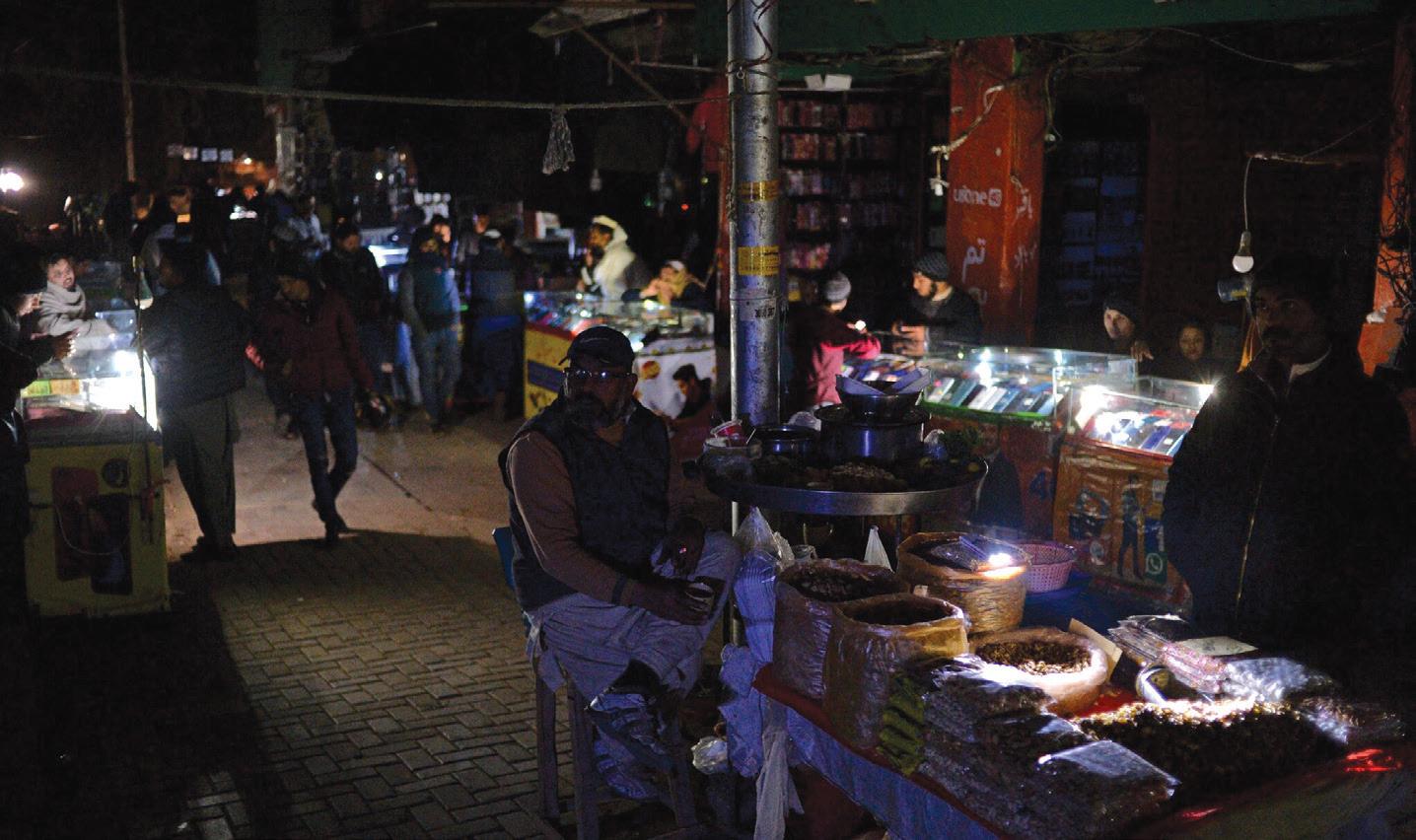
The outage knocked out electricity for millions across the country, where power failures have become increasingly common in recent years.
withdraw money from ATMs because they had stopped working.
Most people in the country use backup power devices in case of outages, but the small batteries of these devices often die when the outages last many hours.
High demand and lack of supply to the power grid was causing difficulties in restoration work, officials told the energy minister at a briefing in the national power control center in Islamabad.
Prime Minister Shehbaz Sharif has ordered a high-level inquiry to determine the exact cause of the failure and who or what was responsible.
Pakistan’s power transmission infrastructure is in dire need of upgrading. The lack of proper maintenance and the inability of successive governments to invest in new infrastructure has left the power distribution network prone to quick failures. Disasters such as last year’s devastating floods, which killed more than 1,100 people, have also damaged infrastructure, compounding the difficulties of improving or repairing the system.
Blackouts, therefore, are becoming common.

A nationwide power breakdown in January 2021 plunged much of the country into darkness, and it took officials as long as eight hours to restore power in major cities, and more than 18 hours to fully restore the electricity supply.
Two years earlier, there was a major power failure across areas of the Sindh and Baluchistan provinces. And in May 2018, a widespread breakdown in the northern system of Pakistan’s power company, the National Transmission and

For four decades, the prime agricultural land that Sarah Pettitt’s family rented near its home produced bumper crops of vegetables, including purple sprouting broccoli destined for the shelves of upscale British supermarkets. But when postBrexit migration rules kicked in, curbing recruitment from Eastern Europe, a vital stream of workers dried up in this area close to Britain’s eastern coastline.
Pettitt said she had little choice but to cut production by one-fifth.
“If you can’t get people to come and harvest it, you’re not going to take your pound notes out of your back pocket and chuck them in the fire,” she said as gray clouds hung over the 100-acre expanse of flat, fertile land that her family routinely rented from a local farmer but has now given up.
Two years after Britain left the European Union’s economic area, ending the ability of the bloc’s citizens to automatically work in Britain, the effects of Brexit are unfolding across the economy. One of the clearest is a shortfall of around 330,000 workers, mostly in less-skilled jobs, including transportation, retail and hospitality, according to the Center for European Reform and U.K. in a Changing Europe, two research institutes.
That dearth of workers has hit the food and farming sectors particularly hard. Last year, 22 million pounds’ (about $27 million) worth of fruit and vegetables went unharvested, according to a survey by the National Farmers’ Union. In the survey, 40% of respondents said they had suffered crop losses, and more than half said they had cut back production.
Pettitt, for one, would welcome more Poles, Latvians or Lithuanians to Boston — “that would be fantastic,” she said. But in the years since Britain voted to quit the European Union, many have left the country, and Brexit is making it hard to recruit replacements. And harvesting crops, she said, is a job many Britons have long avoided.
Brexit has meant “a massive drop in immigrant workers,” according to an assessment by an agricultural recruiting group.
At the time of the vote in 2016, Brexit supporters were chafing at what they felt was a loss of sovereignty to the European Union, notably on control of immigration. Opinion polls now show that Britons’ sentiments have begun to shift against Brexit, as business ow-
ners cite difficulty in finding workers, as well as thorny trade issues and what they describe as onerous paperwork requirements.
In Boston, where residents strongly supported Brexit, there is little evidence that attitudes have changed toward the European Union. But people like Pettitt are coming to realize the effects of Brexit on their own lives and livelihoods.
Located 160 miles north of London, Boston has became a prime example of Britain’s 21st-century population shifts.

When a group of former communist countries joined the European Union in 2004, Britain was one of only three of the bloc’s nations that immediately opened their labor markets to the new workforce. At the time, Poland’s economy was suffering from high unemployment, and hundreds of thousands of Poles moved to Britain, including highly motivated young people with good qualifications.
With many jobs to be had, particularly in farming and food processing, Boston swelled in size after 2004. But the influx of immigrants put pressure on schools and medical services, stoking a local backlash that eventually contributed to a pro-Brexit sentiment in the town a decade later.
But with the onset of Brexit, the situation was basically reversed — now workers from countries like Poland could not come
to Britain to work without a visa. At the same time, the economies of countries in Eastern Europe improved, making jobs there more attractive and luring some — even those who had the right to stay in Britain — back home.
“It doesn’t seem to be as advantageous for some East European employees to come over and try and make a living because it’s more competitive to be back in their own country,” said Simon Beardsley, the CEO for Lincolnshire Chamber of Commerce, a business group, referring to agriculture, food processing and hospitality.
When the coronavirus pandemic hit in 2020, even more drifted home, and some of those who stayed anyway moved away from farm work.
Replacing them is tough.
Employment agencies in Britain still recruit many workers from abroad. But Pettitt, who once employed as many as 22 people, said that even with immigration from faraway places, including the Middle East and Asia, there are not enough workers for her to sustain her previous production, especially at peak times.
She was finding it difficult, she said, to find people — including Britons — who were willing to work on farms, or who were as motivated and reliable as those from Eastern Europe.
“They come with all the best intentions on the Monday, moan and groan about the fact that they had to arrive at 7,” she said. “They’d stay, but you’d not see them the next day. It’s all too hard or too difficult or too uncomfortable.”
In the meantime, the departure of Eastern Europeans in recent years is also changing the landscapes of towns like Boston, which served as the inspiration for the name of the city in Massachusetts after settlers from this area moved there.
In the town center, several shops that offered Eastern European products are closed. In his home by St. Mary’s Church, the Rev. Stanislaw Kowalski, a priest to the Polish community, said there were now fewer Poles than when he arrived in 2015. About 700 to 800 people attend weekend Mass in Boston and two nearby towns, he said — roughly 200 to 300 fewer than in earlier years, although still a significant congregation.
Among those employed before Brexit was Ieva Klavina, a Latvian who worked on Pettitt’s farm after arriving in Britain with a university degree in 2011 — and staying for five years.
“It was good money compared with Latvian wages,” she said, speaking from Riga, Latvia’s capital. She recalled how, at 22, she earned in one week as much as her parents did each month.
“It wasn’t easy — we were working sometimes eight hours, sometimes 10 hours a day,” she said. “We were working in summertime, and it’s really, really hot, and we were working in wintertime, and it’s really, really, cold.”
Two years after the Brexit referendum, she returned to Latvia for an operation and then found it easy to find work there and build a successful career. She is now an international affairs specialist for the Latvian state police and owns an apartment in Riga.
Klavina said she understood the reasons behind the Brexit vote because Boston had struggled to cope with its swollen population. And given the better opportunities at home and the obstacles created by Brexit, working on Britain’s farms is no longer particularly attractive to young Latvians, she said.
“Young people think differently to how I was thinking when I was 22 years old,” Klavina said. “When I tell people in Latvia about my experience, they say, ‘Oh, my God, you really did that?’”
Last year, I interviewed Marci Bowers, president of the World Professional Association for Transgender Health, for a piece I never ended up writing about youth gender transition. A trans woman, Bowers is a surgeon and a gynecologist who has delivered thousands of babies and performed thousands of vaginoplasties; one of her patients was trans reality star Jazz Jennings. When we spoke, Bowers made an argument I think about often: that progressive taboos around discussing some of the thornier issues involved in treating young people with gender dysphoria, including the reality of detransition, are self-defeating. “We don’t look unified,” she said. “We look like we’re hiding something.”
I ended up abandoning the story I was working on because other writers beat me to it, which left me, honestly, a little relieved. It’s not that I was worried about being canceled; getting yelled at by people on the internet isn’t fun, but it comes with the job. Rather, I’d worried that examining the spike in kids identifying as trans could seem like asking the wrong question at a time when trans people are under siege.
Still, some questions are nagging. There are kids for whom transitioning is an urgent necessity, and laws outlawing their medical care are dangerous and immoral. But I also think we don’t understand what’s behind the huge increase in adolescents — many with mental health disorders — identifying as trans.
“There are people in my community who will deny that there’s any sort of ‘social contagion’ — I shouldn’t say social contagion, but at least peer influence on some of these decisions,” Bowers said of the growing number of trans kids. “I think that’s just not recognizing human behavior.”
Because I suspect that, for some kids, gender dysphoria can be part of a broader mental health crisis, I can sympathize with some of the parents in Katie J.M. Baker’s recent New York Times article, “When Students Change Gender Identity, and Parents Don’t Know.” Baker interviewed Jessica Bradshaw, the mother of a transgender teenager who is on the autism spectrum and who suffers from attention-deficit/hyperactivity disorder, posttraumatic stress disorder and anxiety. “He had struggled with loneliness during the pandemic, and, to his parents, seemed not to know exactly who he was yet, because he had repeatedly changed his name and sexual orientation,” wrote Baker.
Bradshaw discovered her child identified as trans only when she saw an unfamiliar name scrawled at the top of a
homework assignment. Her kid, she learned, had socially transitioned at school six months earlier, and had asked that his parents not be told. She was upset at being kept in the dark: “It should have been a decision we made as a family,” she told Baker.
Her distress is understandable; I would be flabbergasted and, frankly, hurt if one of my kids took such a big step without my knowledge. Nevertheless, the more I think about it, the more I’m convinced that the school did the right thing. Teenagers deserve a measure of privacy and autonomy to work out their identities, gender or otherwise, even if some of their choices and decisions seem like bad ideas to the adults in their lives.
Right now, through both lawsuits and state laws, socalled parents’ rights advocates are trying to ensure that schools inform families about changes to their children’s gender identities. The most immediate victims of such policies are trans kids who lack supportive families, and who stand to lose a place where they can safely be themselves outside their homes. But all adolescents should have space, independent of their parents, to experiment with identity in reversible, nonmedical ways.
Such policies can also put absurd burdens on school officials. As far as I know, teachers don’t notify parents about whom their kids are dating. If the daughter of a conservative Muslim family decided to take off her hijab at school, most of us wouldn’t expect her teacher to report her. But if the parental rights’ folks win, teachers will be forced to check in with parents before addressing kids by their preferred pronouns, or to call students by names they don’t answer to.


I certainly think kids should be encouraged to speak to their parents about their gender identity, but there are good reasons some don’t want to. And even if the reasons aren’t so good — even if parents would ultimately be assets in dealing with gender turmoil — part of growing up is developing trusting relationships with adults outside one’s family. We should all hope that our kids find people besides us they can confide in, even about stuff we wish we knew.
Of course, not every adult is worthy of confidence; the right is good at finding egregious examples of school officials who seem gleeful about indoctrinating kids. (Baker cites a presumptuous teacher’s flyer, mentioned in a lawsuit, saying, “If your parents aren’t accepting of your identity, I’m your mom now.”) There is no reason, however, to believe that this is the norm or that the solution is for the state to step in and enforce a new kind of helicopter parenting.
It’s understandable that many parents are freaked out by the foreign gender landscape their kids are navigating, and alienated by what can seem like rigid activist dogma.

A scene from the Solstice in Times Square: Mind over Madness Yoga event in New York, June 21, 2018. All adolescents should have space, independent of their parents, to experiment with identity in reversible, nonmedical ways, writes the New York Times columnist Michelle Goldberg.
Telling these parents that their concerns are illegitimate is only going to send them careening rightward. They’re entitled to their questions about their kids’ lives. But it’s not the role of the law to mandate they get answers.
SAN JUAN – Cutting Edge Well Being Academy invita al XX Día Despertar Holístico el domingo 29 de enero, de 2023 en el Jardín Botánico de Río Piedras (área del merendero), de 10:00 a.m. a 4:00 p.m.

La actividad constará de conferencias, talleres, exhibiciones, música y comida vegetariana. Se discutirán
tópicos como la prevención y reversión de enfermedades cardiovasculares y cáncer. Además se discutirán otros temas relacionados como Demencia y Alzheimer, Brain Gym, Sobrepeso y Obesidad, así como Enfermedades Pulmonares.
La entrada es gratis. Para más información comunicarse con José Orlando Ramos al teléfono (939) 355-1201 o el correo electrónico orlando.josepr01@gmail.com.
WASHINGTON, D.C. – La comisionada residente, Jenniffer González Colón (R-PR) y el senador Marco Rubio (R-FL) reintrodujeron el martes, el proyecto bicameral H.R.447/S.33 Medical Manufacturing, Economic Development and Sustainability Act (MMEDS Act), que otorga incentivos federales y de otro tipo para
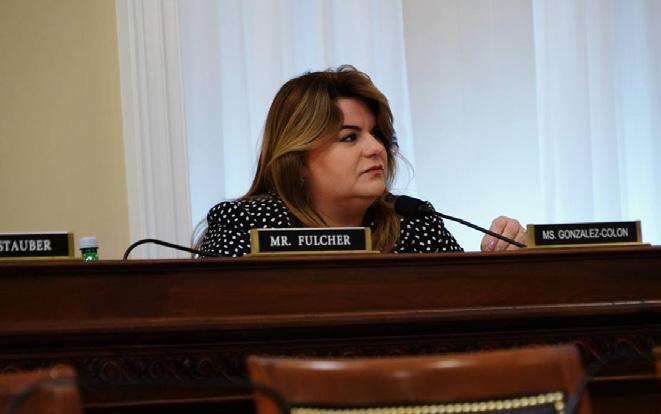
las fábricas de dispositivos médicos y farmacéuticos en territorio nacional y para aquellas que trasladen su producción a los Estados Unidos. La representante María Elvira Salazar (R-FL) es coautora de la medida.“Una de las principales lecciones aprendidas de la pandemia de COVID-19, fue cuan esencial es para nuestro país contar con una cadena de suministro confiable, especialmente en tiempos de necesidad e incertidumbre. El 40 por ciento de nuestros medicamentos y el 80 por ciento de sus ingredientes activos se fabrican en China; y la mayoría de las fábricas de contramedidas médicas para uso contra amenazas biológicas, químicas y de radiación se encuentran fuera de los Estados Unidos, principalmente en China. Por lo que fortalecer la cadena de suministros médicos de Estados Unidos no es solo un tema de desarrollo económico, sino esencial para nuestra seguridad nacional”, dijo González Colón en declaraciones escritas.
“La Ley MMEDS tiene un doble efecto; crea un motor de desarrollo económico para nuestras zonas económicamente desfavorecidas al tiempo que fortalece
la seguridad y el posicionamiento mundial de nuestra nación al promover la fabricación interna y atraer la producción en el extranjero”, añadió.
“No podemos ser un país fuerte si dependemos de regímenes extranjeros para obtener artículos básicos como medicamentos y tecnologías. Existe un creciente apoyo bipartidista de priorizar la reconstrucción de nuestras industrias vitales. Desde medicamentos que salvan vidas hasta minerales cruciales y todo lo demás, necesitamos ser una nación que vuelva a hacer cosas. Si lo hacemos, fortaleceremos nuestras cadenas de suministro y traeremos buenos empleos a Estados Unidos”, dijo el senador Marco Rubio.
“Puerto Rico tiene las capacidades para ser un actor clave en este esfuerzo, dado que cuenta con una infraestructura de manufactura y equipo médico bien establecida, así como una fuerza laboral altamente capacitada. Agradezco al senador Rubio por presentar el proyecto de ley en el Senado para continuar nuestro trabajo en nombre de todos los ciudadanos americanos”, agregó González Colón.
SAN JUAN – El portavoz de la delegación del Partido Nuevo Progresista en la Cámara de Representantes, Carlos ‘Johnny’ Méndez, abogó por bajar las tasas contributivas para individuos y corporaciones, así como una posible amnistía y la eliminación del impuesto sobre el inventario.
“El impuesto al inventario es mortal para el pequeño y mediano comerciante en Puerto Rico. Hay que hacerle justicia a los pequeños y medianos comerciantes locales, que son los que generan capital. Quien crea economía en Puerto Rico es el sector privado”, expresó el expresidente cameral que desde el pasado cuatrienio
ha estado impulsando la eliminación del impuesto al inventario.
Las expresiones del Portavoz novoporgresista se dieron durante una entrevista radial por la cadena WKAQ 580 am esta mañana.
El Portavoz del PNP en la Cámara Baja también indicó que es posible reducir el Impuesto sobre Ventas y Uso (IVU).
“Al renegociarse la deuda, obviamente el nivel de recaudo que necesita el gobierno, unido a la contracción del aparato gubernamental-reducción en la nómina del gobierno-se puede dar una reducción del IVU. Pero debemos tener la voluntad de mantener ese nivel de gastos del gobierno. Llegó el momento de que toda
esta economía, todos estos éxitos que hemos tenido con la renegociación de la deuda se la pasemos a la totalidad de la gente”, sentenció el legislador.
“No podemos continuar fragmentando cambios contributivos, debe haber una reforma contributiva completa. En el día de ayer precisamente dialogé este asunto con el presidente de la Cámara (Rafael ‘Tatito’ Hernández). El cuatrienio pasado nosotros iniciamos el proceso hacia una reforma, pero la Junta de Supervisión Fiscal nos dijo que nos aguantáramos porque todavía estábamos en la negociación de la deuda. Ya se hizo la negociación y tenemos claro cómo ha ido mejorando los niveles de recaudo y cómo el gobierno ha contraído sus gastos”, añadió Méndez.
Christian Slater in “Heathers” vibes).
Just as the teens host a bacchanalian Halloween party at Gary and Sam’s house while their parents are away, aliens decide that this is a perfect time to attack. Looking like actors in rubber suits, they have an underwater lair, vomit acidlike green goo and kill everybody in sight; in other words, they are perfect. Add wrestling references and a vintage-sounding score by Andrew Gordon Macpherson awash in synthesizers, and you have a nearly perfect study in retro silliness. The ending suggests there might be more to come.
‘Incredible But True’
Stream it on Arrow.
miliar plot points emerge in a different context. Yehia (Kareem Mahmoud Abdel Aziz) is a brilliant engineering student crippled by terminal shyness. After watching, powerless, thugs burn his father alive in their home, the young man builds Mousa, a human-size robot controlled via a virtual reality headset, and unleashes it on the criminal set. Mousa, for example, goes after traffickers who kidnap children to sell their organs to the rich.
Kim Hyun-joo in “Jung_E.” Netflix By ELISABETH VINCENTELLIThe intelligence may be artificial, but the thrills are real in this month’s collection of sci-fi picks.
‘Jung_E’ Stream it on Netflix.
If ethical and emotional issues pertaining to artificial intelligence are your jam, this Netflix original is a must-see. And if you just want badass action with robots, brawls, devious scientists and grand futuristic landscapes, it’ll do the job, too. South Korean director Yeon Sang-ho burst on the international scene in 2016 with the instaclassic zombie actioner “Train to Busan,” then delivered more undead with the sprawling “Peninsula” (2020). Now Yeon is back with “Jung_E,” which considers AI with a degree of emotional sensitivity rare in a film that also deploys virtuosic whizbang fights.
The starting point is a post-climateapocalypse Earth in which millions of people have relocated to orbiting shelters. Three of those stations have attacked the others, leading to a decadeslong war, and Earth is now dominated by the military-
industrial complex. The goal of one such company is to transfer the brain of comatose war hero Capt. Yun Jung-yi (Kim Hyunjoo) into an exact replica to create a mighty combat android. In a key wrinkle, the project is led by Yun’s own daughter, Seo-hyun (Kang Soo-youn).

While “Jung_E” starts off like a riff on “Edge of Tomorrow,” it quickly becomes obvious that Yeon is interested in more complicated matters, including the moral standards of cybernetics and the perils of the grieving process. This beautiful movie rewards patience — and heck, that final battle on a monorail is awesome, too.
‘Kids vs. Aliens’
Rent or buy on most major platforms.
Some movies proudly claim their B heritage, and so does this goofball tribute to the heady days of 1980s exploitation, which nails that period’s style. Were it not for a drone steered by young Gary (Dominic Mariche), you might find yourself wondering what year Jason Eisener made his film. Much to Gary’s chagrin, his older sister, Sam (Phoebe Rex), falls in with a group of bad kids led by the handsome-but-psycho Billy (Calem MacDonald, giving off strong
Trust prolific absurdist auteur Quentin Dupieux (“Deerskin,” “Mandibles”) to come up with a comically metaphysical take on time travel. Over the past decade, Dupieux has emerged as France’s king of high-concept, low-budget comedy, and this is among his finest efforts. Alain and Marie (Alain Chabat and Léa Drucker) buy a house whose amenities include a time portal in the basement: If you climb down a maintenance hole, you emerge, in an Escher-like feat, on the top floor — but also 12 hours later and three days younger.
Marie becomes obsessed with traveling through the duct, while Alain can’t be bothered. As if this weren’t enough for a 74-minute movie, Dupieux adds a subplot about Alain’s boorish boss (Benoît Magimel) getting a transplant of an electronic remote-controlled penis. “Incredible But True” never deviates from a droll, matter-offact tone (beautifully handled by the cast) that constantly rubs against the preposterousness of the situation, not to mention its impossibility. The flourish on this delightful cake: a score entirely based on tracks from the synthesizer-heavy, Wendy Carlos-like album “Jon Santo Plays Bach,” from 1976.
‘Mousa’ Stream it on Netflix.
Peter Mimi’s “Mousa,” from Egypt, is not unlike Joko Anwar’s “Gundala,” from Indonesia: Both films adapt superhero tropes familiar to North American viewers to a new setting and with a social justice conscience. Both movies are rough-edged compared with similar Hollywood products, but it is fascinating to watch how fa-
The film is overall less interested in robot-led action — there are minimal set pieces, considering the subject — than in people’s reaction to it as Egyptians welcome a new folk hero. Unfortunately, some take exception to Mousa’s actions, and Yehia must face corrupt authorities embodied by his professor, Dr. Nassar (Eyad Nassar). Clearly, the tradition of sneaking in messages about social ills under a sci-fi cover is alive and well.
‘Head Rush’
Rent or buy it on Amazon.
An older man living in the middle of the Vietnamese countryside successfully performs a body transplant on his nephew. Far-fetched? Just a little, but then this is a column about science-fiction movies, not a guide to the Science Channel. When mildmannered cartoonist Tam (Cuong Seven) is diagnosed with terminal cancer, Uncle Ma (Hoang Son) grafts Tam’s head onto a healthy stranger’s body. In a nice touch, Tam must wear turtlenecks to hide his huge scar, making him a stylish medical miracle. But beware of transplanted parts that come with baggage: Because his unwitting donor, Nghia (Vu Tuan Viet), was a hit man, his past takes over Tam’s life. Fortunately, Nghia’s body appears to have retained a certain amount of muscle memory, and while Tam finds himself embroiled in shady business, he also has inherited extraordinary abilities of the butt-kicking variety.
Victor Vu’s film (released in Vietnam in 2017 but just streaming in the United States) features some primo chases and hand-to-hand combat, but its most arresting asset is the way it amusingly keeps coming up with melodramatic revelations. Forget about mixing and matching heads and bodies — the plot twists rely on family connections.
Back in the 1960s, when female musicians were mostly confined to the roles of teacher, interpreter or muse, Colombian composer Jacqueline Nova was charting new paths in Latin America. Using tools like amplifiers, cables, pulleys, transformers and oscillators to create novel sounds, her sonic experiments anticipated the music software programs and apps that are common today. Nova also helped to lay the foundations for the development of sound art and interdisciplinary feminist art worldwide.
Yet Nova’s work is only now beginning to resurface and her influence to be reckoned with. Scattered recordings began appearing online a decade or so ago, followed by presentations in museums. It culminated this fall with the release of a double album, “Creation of the Earth: Throbbing Echoes of Jacqueline Nova: Electroacoustic and Instrumental Music (1964-1974),” from Buh Records in Lima, Peru.
Perhaps the delayed recognition is not surprising. Nova — who died at 40, in 1975, from bone cancer — was a consummate rule breaker. An independent woman and a selfidentified lesbian in a field dominated by men, she created forward-thinking, often transgressive music. Though classically trained, she played with variations in form and blurred the boundaries of acoustic instruments, electronic sounds and human speech. She also challenged the conservatism of Colombia’s musical establishment by keeping the structure of her scores open to interpretation, inviting performers to collaborate rather than defer to her authority.
“Today we can say she’s a sound artist or interdisciplinary artist, but she was an autonomous person driven by curiosity,” said Ana María Romano G., a professor at El Bosque University in Bogotá and a musical innovator in her own right. “She had questions about sound, about the here and now. Hers was not the kind of music we could hear in the streets, but she was interested in the freedom to engage in the world of sound.”
The work was often political. Nova brought the chants of the Indigenous U’wa into her 1967 piece “Uerjayas. Invocación a los dioses” (“Invitation to the Gods”) and again in “Creación de la Tierra” (“Creation of the Earth”), her 1972 masterwork. By sonically altering recordings of those chants, she raised questions about what it was like to be perceived as an “other.”
Nova’s work with visual artists was no less provocative. Rather than positioning audiences passively, Nova and Julia Acuña’s “Luz-Sonido-Movimiento” (1969) invited viewers to physically activate the installation’s various components. Nova contributed a soundtrack to sculptor Feliza Bursztyn’s series “Las Camas” (1974), in which metal bed frames, outfitted with electric motors and colorful satin sheets like those used to cover images of the Crucifixion during Holy Week, moved suggestively to a throbbing beat.
Born in 1935 in Ghent, Belgium, to a Belgian mother and a Colombian father, Nova spent her early childhood in Bucaramanga, the capital of the Santander region in northeastern Colombia. She came of age during La Violencia,
In an image provided by Archive Ana Maria Romano G., the composer Jacqueline Nova, foreground, at the premiere of her work “Omaggio a Catullus,” in Bogotá, Colombia, in 1975, the year she died.

the Colombian civil war that stretched from 1948 to 1958, the year she was admitted to the National Conservatory as a piano student. At the conservatory, she worked with contemporary composer Fabio González Zuleta and became the first woman to graduate with a degree in composition. In 1967 she won a scholarship to study at the Latin American Center for Advanced Musical Studies in Buenos Aires, Argentina, where she found the infrastructure and community to support experimental music made with machines.
For all the intensity and breadth of her work, Nova didn’t achieve the renown she deserved during her lifetime. Musicologist Daniel Castro Pantoja points out that the contributions of Latin American composers were often regarded as secondary to those of European and North American vanguard figures like Pierre Schaeffer, John Cage and Milton Babbitt. There was also the issue of gender bias, leading Pauline Oliveros to write an essay for The New York Times in 1970 asking “Why have there been no ‘great’ women composers?”
Another obstacle to gaining widespread recognition was Nova’s unapologetic denunciation of traditionalists. She dismissed those who clung to the classical conventions as fearful of the present and the possibility of progress. In 1966, she argued for bursting that protective bubble: “The world of the composer, of the artist,” she wrote, “is situated concre -
tely in the current moment.” Beyond that are “the fainthearted,” she continued, “those who can’t make up their mind about joining our fight.”
That fight was cut short by Nova’s early death from cancer. The movement she had started building was still in its infancy, and since she didn’t teach, there were no students to carry on the work. Colombia’s experimental music scene fell into a long period of dormancy, Romano G. said.
Recovering Nova’s music and establishing its place in the electroacoustic canon has been an obsession ever since Romano G. first encountered it as an undergraduate in the early 1990s. Attending a concert of “Creación de la Tierra,” Romano G. said she was shocked by its beauty as well as its rarity. “Works by women were not generally presented, nor studied,” Romano G. said, “Maybe Clara Schumann or Hildegard of Bingen, but certainly not contemporary women from Latin America.”
Romano G. became something of a Nova detective. While working at the Colombian Ministry of Culture she discovered a trove of material, including scores and press clippings, in its Center for Musical Documentation. That led her to Nova’s brother, who gave her access to Nova’s personal archives. Interviews with contemporaries helped her further situate Nova’s life and work in a multilayered context. Though Romano G. admired Nova’s technical proficiency as a composer, she said she was also eager to learn how she managed to flourish creatively despite living in a conservative milieu that was hostile to change.
At first Romano G. presented her findings in academic journals and within Colombia’s experimental music scene. Then, in 2017, she organized a sound installation based on “Creación de la Tierra” for the Museo de Arte Moderno in Medellín, and another in 2019 at the Blaffer Art Museum in Houston, in collaboration with Castro Pantoja and Tyler Blackwell. This past fall, she put together the double album for Buh Records.
Nova’s legacy can now be heard in the current generation of Colombian artists like Alba Triana, whose work includes sound and light sculptures, vibrational objects and resonant spaces; and Lucrecia Dalt, who fuses the traditional music of her childhood with electronic, and sometimes otherworldly, sounds.
But Ela Minus, a Bogotá-born musician, said the impact of Nova’s approach to music has yet to be fully realized. “There is still not a lot of structure for electroacoustic music in Colombia. The idea is that musicians should reach back to the past to ‘folkloric’ instruments, and avoid ‘European’ ones” — that is, electronic instruments and music technology.
Ela Minus stumbled onto Nova’s music around 2012, as a Berklee College student in jazz drumming, while perusing music videos on YouTube. “She was working with tape machines!” Ela Minus said, adding that she was blown away by the sophisticated spatiality of Nova’s 1968 electroacoustic composition “Oposición-Fusión.” Ela Minus, 32, said the revelation helped her to imagine a new approach, inspiring her to switch to a double major in drumming and music synthesis.
world’s catching up.
s there life after Alessandro Michele?
One of the most anticipated shows at Men’s Fashion Week in Milan was, of course, Gucci. It was the first collection presented by The House after creative director Alessandro Michele’s exit late last year. And fashionistas, critics and investors couldn’t wait a minute
To the rhythms of Marc Ribot’s “Ceramic Dog,” models paraded in what seemed a very toned-down collection from what the Italian label had been serving for the last couple of years. Michele’s feathers, bling bling, theatricals and maximalism were nowhere to be seen. A new beginning for Gucci?
Stripped of Michele’s excessive looks and with Kering head Francois-Henri Pinault confirming Marco Bizarri would lead the brand’s future, guests were treated to very safe, basic and, I would say, highly commercial looks where supersize jackets, long coats, skinny pants and fluffy sweaters reigned. With the exception of purple, yellow, blue and some coral, the palette is

very subtle. Signed by Gucci’s in-house team, the proposal clearly addresses high-end retailers and customers who value quality and designers’ craftsmanship but shy away from heavy glitter, ruffles and provocative ensembles designed for Harry, not Larry. This is a collection of menswear essentials, with a contemporary twist. And a little boring.

We absolutely adored the relaxed suits in black and gray houndstooth with detachable elements that could turn trousers into shorts and jackets into stylish vests. Genius. Also loving the GG slouchy boots in a plethora of colors like pink, indigo, green, red, tan and charcoal. Boots are still big in 2023, and the more colors, the better. Another fabulous item? Horsebit loafers and Princetown slippers: preppy and cool.
“Various decades and contrasting aesthetics inspired the House’s Fall Winter men’s collection,” according to Gucci’s notes.

Along with the basics, Gucci presented gender fluid blazers and delicate papery tops. Trendy pieces like metallic leggings, patent leather garments, leg warmers and furry handbags added a fun touch. Loving the crystalembossed GG denim pants. Overall there were hints from the 1980s and some rock ‘n‘ roll vibes a la Mick Jagger.
One piece that did remind me of Michele’s point of view: the handembroidered sequin jacket in white. Huge paillettes sewn one by one in artistic formations that moved and danced back and forth on the runway in an almost musical way. Flaky, a playful conversation piece!

The American Academy of Pediatrics released new guidance last week about how to evaluate and treat children who are overweight or obese, issuing a 73-page document that argues obesity should no longer be stigmatized as simply the result of personal choices, but understood as a complex disease with short- and long-term health implications.
Based on that rationale, the guidelines — the group’s first update in 15 years — say there is no evidence to support delaying treatment for children with obesity in the hope that they will outgrow it. Instead of the gradual, staged approach recommended in the past, pediatricians and primary care physicians should take a more proactive tack, offering prompt referrals to intensive health behavior and lifestyle treatment programs, in addition to prescribing weight loss drugs or advising surgery in some cases.
“Even at young ages, obesity can occur, and it often doesn’t get better without treatment,” said Dr. Sarah Hampl, a pediatrician at Children’s Mercy hospital in Kansas City, Missouri, and a lead author on the guidelines.
Aaron Kelly, a co-director of the Center for Pediatric Obesity Medicine at the University of Minnesota Medical School, who did not work on the new guidelines, called it “a big shift.” “Everybody likes to simplify what obesity is,” he said, “but it’s not just a matter of kids or their parents trying harder to eat less and move more.”
Roughly 1 in 5 children in the United States between ages 2 and 19 is affected by obesity, meaning they have a body mass index, or BMI, at or above the 95th percentile for their age and sex based on CDC growth charts. Childhood obesity also seems to have increased during the COVID-19 pandemic.
Though mounting evidence suggests that people can be healthy at any weight if they do enough physical activity, obesity in children does carry both immediate and long-term risks. “Children and adults with obesity can be metabolically healthy, meaning they have normal blood sugar, cholesterol, blood pressure and waist circumference,” said Dr. Callie Brown, an assistant professor of pediatrics at Wake Forest University School of Medicine, who did not work on the guidelines. “However, we are seeing increasingly more children diagnosed with Type 2 diabetes, high cholesterol and high blood pressure, and obesity is a strong risk factor for these conditions, both in childhood and adolescence and later, as adults.”
According to the new guidelines, the most effective behavioral treatment for children with obesity who are 6 and older is a prompt referral to an intensive health behavior and lifestyle treatment program. These programs, which aim to provide nonjudgmental care, are often based in academic medical centers, community hospitals or obesity treatment clinics. They bring together a range of specialists, including nutritionists, exercise physiologists and social workers, who teach fitness education, arrange cooking demonstrations and provide other programming. The AAP recommends that children and their families receive at least 26 hours of face-to-face counseling over the course of three or more months.
Along with the recommendations around behavioral
treatment programs, the AAP’s new guidance supports weight loss medications and surgery for a subset of children with obesity. Pediatricians should talk to families about weight loss medications in addition to behavioral interventions for children as young as 12, the group says, while teenagers with severe obesity (defined as having a BMI at or above the 120th percentile for their age and sex) should be evaluated for possible weight loss surgery.
The recommendations around medication and surgery have generated many discussions on social media and a degree of controversy. Some experts on adolescent health have warned that such interventions may be harmful, noting that the use of anti-obesity medications in children is still relatively new, while surgery requires a long-term commitment to strict nutrition requirements.
“Bariatric surgery is a good intervention for some patients — patients with medical complications such as Type 2 diabetes or nonalcoholic fatty liver disease, for example,” said Dr. Katy Miller, the medical director of adolescent medicine at Children’s Minnesota. “But it is a very serious surgery that carries profound impacts for the rest of a patient’s life.”
Dr. Mona Amin, a pediatrician in Florida who did not work on the guidelines, believes that some of the “uproar” around medication and surgery stems from a misunderstanding that the AAP is promoting these aggressive interventions as a first step.
“In fact — and I really want to clarify this — when you read everything, they’re trying to come up with a multidisciplinary plan for clinicians so they have options,” Amin said. “They are not advocating for surgery or medication as a first line.”
Why it’s so complicated to treat children with obesity
In its efforts to be more proactive and holistic when treating childhood obesity, the AAP acknowledged the role that pediatricians and other primary care providers have played in promoting weight bias.
The group urges pediatricians to examine and address their own attitudes toward children with obesity. It recommends, among other measures, that clinicians use person-first language (that is, saying “a child with obesity” rather than an “obese child”) and that they recognize the complexity of obesity.
“Physicians are not immune to societal weight bias that is prevalent in our culture,” said Rebecca Puhl, a professor and the
deputy director of the Rudd Center for Food Policy and Health at the University of Connecticut. “Weight bias is rarely, if ever, addressed in medical school training.”
Dr. Jason Nagata, an adolescent medicine specialist with the UCSF Benioff Children’s Hospital San Francisco, said it was important to remember how sensitive doctor-patient discussions around weight and bodies could be. He also expressed concern that practices like using person-first language, while important, are not enough.
“As an eating disorder specialist, I get so many referrals now with the same story: A teenager who was previously overweight or obese got a recommendation from their pediatrician or parents to lose weight, and they took it to the extreme,” Nagata said. He has worked on studies showing that disordered eating behaviors like fasting or vomiting are common in children with obesity. Even if parents and doctors are careful to use person-first language and focus discussions on health, not weight, a child may only hear “you’re telling me I’m too fat, I need to lose weight,” he cautioned.
Miller echoed that assessment, saying “weight talk” can set children up for disordered eating. “What I fear is that we are proposing treatment strategies that are expensive, not readily available and most often unsuccessful, even under the best of circumstances,” she said. “At the same time, we are setting kids up for a challenging relationship with their bodies and increasing their risks of other serious medical conditions.”
What the new guidelines mean for your next pediatrician visit
Experts say it can take time for AAP recommendations to change how pediatricians provide care day to day.
“What we know with clinical practice guidelines is that there’s a big lag between when they’re published and when they’re really taken up broadly in the health care setting,” Kelly said. Still, he believes that the new guidance is a major step toward changing how many doctors perceive and treat obesity, and that it opens the door for parents to have frank discussions with their pediatricians if they have concerns about their children’s weight.
Those conversations should be rooted in a technique known as “motivational interviewing,” the AAP says, in which clinicians ask open-ended questions to better understand the family’s perspective. Hampl described it as “talking less and listening more.”
If families are unable to access an intensive behavioral program, pediatricians may have to piece together a care plan. That could mean scheduling more frequent visits with the child, Brown said, or connecting the family to community resources, like parks and recreation programs or food provision programs.
“The new guidelines make clear that pediatricians should discuss all available treatment options with families, but treatment decisions remain individualized,” she said. “The right treatment for a particular child at a particular time is a decision that will happen between the child, their family and their doctor.”
“Remember that weight is just a number and is only one measure of a child’s health,” she added, “and weight management may not be the best option for that child at that time.”

IN THE UNITED STATES DISTRICT COURT FOR THE DISTRICT OF PUERTO RICO WILMINGTON SAVINGS FUND SOCIETY, FSB, D/B/A CHRISTIANA TRUST, AS INDENTURE TRUSTEE, FOR THE CSMC 2015-PR1 TRUST, MORTGAGE-BACKED
NOTES, SERIES 2015-PR1
Plaintiff V. GLADYVIRG RIVERA
JIMENEZ, ALSO KNOWN AS GLADYVING RIVERA JIMENEZ
Defendant(s)
Civil No.: 3:18-CV-01978.
(FAB). FORECLOSURE OF MORTGAGE AND COLLECTION OF MONIES. NOTICE OF SALE.

To: GLADYVIRG RIVERA JIMENEZ, ALSO KNOWN AS GLADYVING RIVERA JIMENEZ. APT. 1303-B, COND. PARQUE DE SAN FRANCISCO, BAYAMÓN, PR 00959; APT. 1303 B BOX 126, BAYAMÓN, PUERTO RICO 00959.
THE GENERAL PUBLIC. WHEREAS: On March 23, 2022, this Court entered Default Judgment in favor of Plaintiff, against Defendant. On August 10, 2022, this Court entered Order for Execution of Judgment, stating that Defendant has failed to pay the sums of monies adjudged to be paid under the judgment. The In the Judgment, this Court stated that Defendant has defaulted on the repayment obligation to WILMINGTON SAVINGS FUND SOCIETY, FSB, D/B/A CHRISTIANA TRUST, AS INDENTURE TRUSTEE, FOR THE CSMC 2015-PR1 TRUST, MORTGAGE-BACKED NOTES, SERIES 2015PR1, and ordered to pay the Plaintiff the principal sum of ONE HUNDRED TWO THOUSAND THREE HUNDRED THIRTY-FOUR DOLLARS AND THIRTY-TWO CENTS ($102,334.32), plus interest at 7.000% per annum from January 1, 2016, which will continue to accrue interest at the contractual rate. The defendant also owes and the Court ordered to pay Wilmington Savings all advances made in accordance with the mortgage note, including, but not limited to, insurance premiums, taxes and inspections, as well as 10% of the original principal balance, or $9,500.00, to cover costs, expenses, and attorney’s fees guaranteed by the mortgage obligation. The records of the
case and of these proceedings may be examined by the parties at the office of the Clerk of the United States District Court, Federal Building, Chardón Avenue, Hato Rey, Puerto Rico. WHERAEAS, Pursuant to the terms of the aforementioned judgment and the order of execution thereof, the following property belonging to Defendant will be sold at a public auction: HORIZONTAL PROPERTY: San Francisco Condominium, Apartment B-1303: Rectangular shape, three bedroom unit with a total construction area of 865.46 square feet, equivalent to 80.40 square meters, distributed in 798.06 square feet, equivalent to 74.14 square meters of enclosed area and 67.40 square feet, equivalent to 6.26 square meters of porch. The main entrance is located on the South side. This apartment is located in Building B of the Condominium and occupies part of the thirteenth floor of the building. The maximum length of this unit is 25’5” and the maximum width is 44’4”. Its boundaries all: by the NORTH, in a distance of 44’4”, equivalent to 13.52 meters, with the common wall that separates it from apartment number 1304 and the common interior areas; by the SOUTH, in a distance of 44’4”, equivalent to 13.52 meters with exterior common areas; by the EAST, in a distance of 24’1”, equivalent to 7.34 meter with the common wall that separates it from apartment number 1302 and interior and exterior common areas and by the WEST, in a distance of 25’3”, equivalent to 7.70 meters with the exterior common areas. This unit contains a kitchen, a living room, a dining room, three bedrooms with closet, two bathrooms and a covered porch. Se le asigna a este apartamento el estacionamiento número 85 como elemento común limitado. Este apartamento tiene una participación de .61792% en los elementos comunes del condominio. Property recorded at page 61, volume 1708 of Bayamón Sur, property number 71489, Registry of the Property of Puerto Rico, Section I of Bayamón. WHEREAS: The property is subject to the following lien: HIPOTECA en garantía de pagaré a favor de RG Premier Bank de Puerto Rico, o a su orden, por la suma de $95,000.00 con intereses al 7.00% anual y vencimiento 1ro de agosto de 2036. Constituida por la Escritura 571 otorgada en San Juan el 31 de julio de 2006 ante el notario Antonio
José Cruz Bonilla, e inscrita y extendido su asiento abreviado el 4 de mayo de 2011 bajo la
Ley 216 del 27 de diciembre de 2010 para Agilizar el Registro de La Propiedad, al folio 161 del tomo 1846 de Bayamón Sur, finca 71489, inscripción 5ª. AMPLIADA en una suma adicional de $12,209.77 y MODIFICADA en cuanto a su interés y vencimiento, siendo ahora su principal por $107,209.77 con intereses al 7.00% anual y vencimiento 1ro de enero de 2042, según consta de la escritura 12 otorgada en San Juan el 20 de enero de 2012 ante la notario Ileana Quintero Aguiló, e inscrita al folio 161 del tomo 1846 de Bayamón Sur, finca 71489, inscripción 6ª. Senior Lien: None. The above-described property is subject to the following junior lien: HIPOTECA en garantía de pagaré a favor de la Corporación para el Financiamiento de la Vivienda de Puerto Rico, o a su orden, por la suma de $24,700.00 sin intereses y vencimiento 20 años. Constituida por la Escritura 48 otorgada en San Juan el 23 de enero de 2001 ante el notario Miguel A. García Rivera, e inscrita al folio 62 del tomo 1708 de Bayamón Sur, finca 71489, inscripción 2ª. Potential bidders are advised to verify the extent of preferential lien with the holders thereof. It shall be understood that each bidder accepts as sufficient the title and that prior and preferential lien to the one being foreclosed upon, including but not limited to any property tax, lien (express, tacit, implied or legal), shall continue in effect it being understood further that the successful bidder accepts them and is subrogated in the responsibility for the same and that the bid price shall not be applied toward their cancellation. The present property will be acquired free and clear of all junior liens. WHEREAS: For the purpose of the First Judicial Sale, the minimum bid agreed upon by the parties in the mortgage deed will be $107,209.77 for the property and no lower offers will be accepted. Should the first judicial sale of the abovedescribed property be unsuccessful, then the minimum bid for the property on the Second Judicial Sale will be two-thirds of the amount of the minimum bid for the First Judicial Sale, or $71,473.18. The minimum bid for the Third Judicial Sale, if the same is necessary, will be onehalf of the minimum bid agreed upon by the parties in the aforementioned mortgage deed, or $53,604.89 (Known in the Spanish language as: “Ley del Registro de la Propiedad Inmobiliaria del Estado Libre Asociado de Puerto Rico, 2015 Puerto Rico Laws Act 210 (H.B. 2479), Article 104, as amended. WHE-
REAS: Said sale to be made by the appointed Special Master is subject to confirmation by the United States District Court for the District of Puerto Rico and the deed of conveyance and possession to the property will be executed and delivered only after such confirmation. NOW THREFORE, public notice is hereby given that the appointed Special Master, pursuant to the provisions of the Judgment herein before referred to, will on FEBRUARY 3, 2023 AT 10:45 AM, in the Office of the Clerk of the United States District Court, Room 150, Federal Building, Chardón Avenue, Hato Rey, Puerto Rico in accordance with 28 U.S.C. § 2001 will sell at public auction to the highest bidder, the property described herein, the proceeds of said sale to be applied in the manner and form provided by the Court’s judgment. Should the first judicial sale set hereinabove be unsuccessful, the SECOND JUDICIAL SALE of the property describes in the Notice will be held on FEBRUARY 10, 2023 AT 10:45 AM, in the Office of the Clerk of the United States District Court located at the address indicated above. Should the second judicial sale set hereinabove be unsuccessful, the THIRD JUDICIAL SALE of the property described in this Notice will be held on FEBRUARY 17, 2023 AT 10:45 AM, in the Office of the Clerk of the United States District Court located at the address indicated above. In San Juan, Puerto Rico, this 28 day of December 2022. JOEL RONDA FELICIANO, APPOINTED SPECIAL MASTER.
ESTADO LIBRE ASOCIADO DE PUERTO RICO TRIBUNAL DE PRIMERA INSTANCIA CENTRO JUDICIAL DE PONCE SALA SUPERIOR BANCO POPULAR DE PUERTO
Parte Demandante Vs. LUCAS
Parte Demandada Civil Núm.: PO2022CV02053. (406). Sobre: COBRO DE DINERO, EJECUCIÓN DE HIPOTECA POR LA VÍA ORDINARIA. ESTADOS UNIDOS DE AMÉRICA, EL PRESIDENTE DE LOS ESTADOS UNIDOS, EL ESTADO LIBRE ASOCIADO DE PUERTO RICO, SS. AVISO DE PÚBLICA SUBASTA. El Alguacil que suscribe por la presente anuncia y hace constar que en cumplimiento de la Sentencia dictada el 6 de octubre de 2022, la Orden de Ejecución de Sentencia del 17 de noviembre de 2022 y el
Mandamiento de Ejecución del 18 de noviembre de 2022 en el caso de epígrafe, procederé a vender el día 14 DE MARZO
DE 2023, A LAS 1:45 DE LA TARDE, en mi oficina, localizada en el Tribunal de Primera Instancia, Centro Judicial de Ponce, Sala Superior, en 2150 Ave. Santiago de los Caballeros, Ponce, Puerto Rico, al mejor postor en pago de contado y en moneda de los Estados Unidos de América, cheque de gerente o giro postal, todo título, derecho o interés de la parte demandada sobre la siguiente propiedad: URBANA: Solar marcado con el Número Treinta y uno (31) del bloque W de la Urbanización Villa del Carmen en esta ciudad de Ponce, Puerto Rico, con una cabida superficial de 300.00 metros cuadrados. En lindes por el NORTE y SUR: por donde mide 24.00 metros por cada lado con los Solares Números Treinta (30) y Treinta y dos (32) del mismo bloque respectivamente; por el ESTE y OESTE: por donde mide 12.50 metros por cada lado con la calle Número Veintitrés (23) de la urbanización y el Solar Número Veintidós (22) del mismo bloque respectivamente. Contiene una casa de concreto dedicada a vivienda. Inscrita al folio 195 del tomo 1275 de Ponce, Finca 35985. Registro de la Propiedad de Ponce, Sección I. La escritura de hipoteca consta inscrita al folio 179 del tomo 1898 de Ponce, Finca 35985. Registro de la Propiedad de Ponce, Sección I. Inscripción octava. La escritura de modificación de hipoteca consta inscrita al folio 221 del tomo 2108 de Ponce, Finca 35985. Registro de la Propiedad de Ponce, Sección I. Inscripción novena. DIRECCIÓN FÍSICA: URB. VILLA DEL CARMEN, W31 CALLE 23, PONCE PR 00731. Número de Catastro: 63-412-043-776-31-000. El tipo mínimo para la primera subasta será de $83,560.11. De no haber adjudicación en la primera subasta se celebrará una SEGUNDA SUBASTA, el día 21 DE MARZO DE 2023, A LAS 1:45 DE LA TARDE en el mismo lugar, en la cual el tipo mínimo será de dos terceras partes del tipo mínimo fijado en la primera subasta, o sea, $55,706.74. De no haber adjudicación en la segunda subasta, se celebrará una TERCERA SUBASTA, el día 28 DE MARZO DE 2023, A LAS 1:45 DE LA TARDE en el mismo lugar, en la cual el tipo mínimo será la mitad del precio pactado, o sea, $41,780.05. Si se declarase desierta la tercera subasta, se adjudicará la finca a favor del acreedor por la totalidad de la cantidad adeudada
si ésta es igual o menor que el monto del tipo de la tercera subasta, si el tribunal lo estima conveniente. Se abonará dicho monto a la cantidad adeudada si ésta es mayor. Dicho remate se llevará a cabo para con su producto satisfacer a la demandante el importe de la Sentencia por la suma de $71,642.88 de principal, más intereses sobre dicha suma al 4.75% anual desde el 26 de abril de 2020 hasta su completo pago, más $246.60 de recargos acumulados, los cuales continuarán en aumento hasta el saldo total de la deuda, más la cantidad estipulada de $7,300.00 para costas, gastos y honorarios de abogados, así como cualquier otra suma que contenga el contrato del préstamo. Surge del Estudio de Título Registral que sobre esta propiedad pesa el siguiente gravamen posterior a la hipoteca que por la presente se pretende ejecutar: Bitácora: Asiento 2022-107762-PO01, el 16 de agosto de 2022, Demanda de fecha 27 de julio de 2022, ante el Tribunal de Primera Instancia, Sala Superior de Ponce, en el Caso Civil Número PO2022CV02053, seguido por Banco Popular de Puerto Rico Vs. Lucas Alvarado Pérez (soltero), sobre Cobro de Dinero y Ejecución de Hipoteca, en la que se reclama el pago de hipoteca con un balance de $71,642.88 y otras cantidades, o la venta en pública subasta de la propiedad. Pendiente de anotación. Se notifica al acreedor posterior o a su sucesor o cesionario en derecho para que comparezca a proteger su derecho si así lo desea. Se les advierte a los interesados que todos los documentos relacionados con la presente acción de ejecución de hipoteca, así como los de Subasta, estarán disponibles para ser examinados, durante horas laborables, en el expediente del caso que obra en los archivos de la Secretaría del Tribunal, bajo el número de epígrafe y para su publicación en un periódico de circulación general en Puerto Rico por espacio de dos semanas y por lo menos una vez por semana; y para su fijación en los sitios públicos requeridos por ley. Se entenderá que todo licitador acepta como bastante la titularidad y que las cargas y gravámenes anteriores y los preferentes, si los hubiere, al crédito del ejecutante, continuarán subsistentes; entendiéndose que el rematante los acepta y queda subrogado en la responsabilidad de los mismos, sin destinarse a su extinción el precio del remate y que la propiedad a ser ejecutada se adquirirá libre de cargas
y gravámenes posteriores tal como lo expresa la Ley Núm. 210-2015. Y para el conocimiento de los demandados, de los acreedores posteriores, de los licitadores, partes interesadas y público en general, EXPIDO para su publicación en los lugares públicos correspondientes, el presente Aviso de Pública Subasta en Ponce, Puerto Rico, hoy 9 de diciembre de 2022. MANUEL MALDONADO, ALGUACIL, TRIBUNAL DE PRIMERA INSTANCIA, CENTRO JUDICIAL DE PONCE, SALA SUPERIOR.
ESTADO LIBRE ASOCIADO DE PUERTO RICO TRIBUNAL DE PRIMERA INSTANCIA SALA SUPERIOR DE FAJARDO BANCO POPULAR DE PUERTO RICO
Demandante Vs. ISMAEL PARIS AYALA, TAMBIÉN CONOCIDO
COMO ISMAEL PARIS GUZMAN; SUCESION DE CARMEN SYLVIA SIMONS CALDERON, COMPUESTA POR SUS HIJOS
CARMEN IVETTE ALICEA, TAMBIÉN CONOCIDA
COMO CARMEN IVETTE ALICEA SIMONS, ROBERTO ALICEA, TAMBIÉN CONOCIDO
COMO ROBERTO ALICEA SIMONS Y MIRIAM ALICEA, TAMBIÉN CONOCIDA
COMO MIRIAM ALICEA SIMONS Y POR ISMAEL PARIS AYALA, TAMBIÉN CONOCIDO COMO ISMAEL PARIS GUZMAN, EN CUANTO
A LA CUOTA VIUDAL USUFRUCTUARIA; GURUSHARAN PERSAD Y SU ESPOSA BLANCA IRIS TORRES PERSAD Y LA SOCIEDAD LEGAL DE BIENES GANANCIALES COMPUESTA POR AMBOS; CENTRO DE RECAUDACION DE INGRESOS MUNICIPALES (CRIM)
Demandados
Civil Núm.: FA2022CV00234. (303). Sobre: COBRO DE DINERO (EJECUCIÓN DE HIPOTECA POR LA VÍA ORDINARIA). EDICTO DE SUBASTA.
A: ISMAEL PARIS AYALA, TAMBIÉN CONOCIDO
COMO ISMAEL PARIS GUZMAN; SUCESION DE CARMEN SYLVIA SIMONS CALDERON, COMPUESTA POR SUS HIJOS CARMEN IVETTE ALICEA, TAMBIÉN CONOCIDA
COMO CARMEN IVETTE ALICEA SIMONS, ROBERTO ALICEA, TAMBIÉN CONOCIDO COMO ROBERTO ALICEA SIMONS Y MIRIAM ALICEA, TAMBIÉN CONOCIDA
COMO MIRIAM ALICEA SIMONS Y POR ISMAEL PARIS AYALA, TAMBIÉN CONOCIDO COMO ISMAEL PARIS GUZMAN, EN CUANTO
A LA CUOTA VIUDAL USUFRUCTUARIA; GURUSHARAN PERSAD Y SU ESPOSA BLANCA IRIS TORRES PERSAD Y LA SOCIEDAD LEGAL DE BIENES GANANCIALES COMPUESTA POR AMBOS; CENTRO DE RECAUDACION DE INGRESOS MUNICIPALES (CRIM).
Yo, SANDRALIZ MARTÍNEZ TORRES, ALGUACIL AUXILIAR #737, Alguacil de este Tribunal, a la parte demandada y a los acreedores y personas con interés sobre la propiedad que más adelante se describe, y al público en general, HAGO SABER: Que el día 6 DE MARZO DE 2023 A LAS 3:00 DE LA TARDE en mi oficina, sita en el Tribunal de Primera Instancia, Sala Superior de Fajardo, Fajardo, Puerto Rico, venderé en Pública Subasta la propiedad inmueble que más adelante se describe y cuya venta en pública subasta se ordenó por la vía ordinaria al mejor postor quien hará el pago en dinero en efectivo, giro postal o cheque certificado a nombre del o la Alguacil del Tribunal de Primera Instancia. Los autos y todos los documentos correspondientes al procedimiento incoado, estarán de manifiesto en la Secretaría del Tribunal de Fajardo durante horas laborables. Que en caso de no producir remate ni adjudicación en la primera subasta a celebrarse, se celebrará una SEGUNDA SUBASTA para la venta de la susodicha propiedad, el día 13 DE MARZO DE 2023 A LAS 3:00 DE LA TARDE y en caso de no producir remate ni adjudicación, se celebrará una TERCERA SUBASTA el día 20 DE MARZO DE 2023 A LAS 3:00 DE LA TARDE en mi
POR MEDIO del presente edicto se le notifica de la presentación de una Demanda en su contra. Usted deberá presentar su alegación responsiva a través de Sistema Unificado de Manejo y Administración de Casos (SUMAC), al cual puede acceder utilizando la siguiente dirección electrónica: https://unired.ramajudicial.pr, salvo que se represente por derecho propio, en cuyo caso deberá presentar su alegación responsiva en la secretaria del Tribunal. Si usted deja de presentar su alegación responsiva dentro del referido término, el Tribunal podrá dictar sentencia en rebeldía en su contra y conceder el remedio solicitado en la Demanda, o cualquier otro, si el Tribunal, en el ejercicio de su sana discreción, lo entiende procedente. La demandante alega que es la acreedora de una facilidad de crédito garantizada, entre otros, por un pagaré hipotecario garantizado por hipoteca, los cuales se describen a continuación: Pagaré Hipotecario suscrito el 20 de septiembre de 2005 a favor de Doral Bank, o a su orden, subsiguientemente endosado a favor de BGI LLC, o a su orden, por la suma principal de $212,500.00, con intereses al 7.75% anual, y vencedero el 1 de octubre de 2020, autenticado mediante afidávit número 8,617 ante el Notario Público Charles Candelaria Farrulla (el “Pagaré Hipitecario”). En la misma fecha y ante el mismo notario, Héctor Hernández Cobián y su esposa Carmen Berríos Adorno constituyeron una hipoteca en garantía del Pagaré Hipotecario mediante la Escritura de Hipoteca número 341 (la “Hipoteca”) otorgada el 20 de septiembre de 2005, inscrita bajo la Ley Núm. 216 del 27 de diciembre de 2010, conocida como la “Ley para Agilizar el Registro de la Propiedad”, por asiento abreviado al folio 605 del tomo 270 de Bayamón Norte, finca número 2,483, Registro de la Propiedad de Puerto Rico, Sección Tercera de Bayamón. La Hipoteca mencionada grava la siguiente propiedad: URBANA: Solar número 15 de la Manzana 32-A, radicada en la Urbanización Sierra Bayamón, situada en el Barrio Hato Tejas de Bayamón, Puerto Rico, con un área de 330.382 metros cuadrados.
En lindes por el NORTE, con Solar número 14, distancia de 35.470 mc; por el SUR, con Paseo Público, distancia de 34
metros y 8 milésimas de metro; por el ESTE, con Calle principal Norte, distancia de 9 metros y 60 centímetros; por el OESTE, con el Solar número 8 distancia de 9 metros y 50 centímetros. Contiene una casa de concreto diseñada para una familia. Finca 2,483 inscrita al Folio 220 del Tomo 47 de Bayamón Norte, Registro de la Propiedad de Puerto Rico, Sección Tercera de Bayamón. El original del pagaré hipotecario antes mencionado se ha extraviado sin el mismo haber sido localizado a pesar de las gestiones realizadas por la demandante siendo el último acreedor conocido, y sus representantes legales y autorizados, y por ello comparece ante el Honorable Tribunal solicitando su sustitución y/o reproducción. Se incluye a Fulano De Tal y a Mengano Del Cual como posibles tenedores desconocidos del pagaré hipotecario extraviado. POR EL PRESENTE EDICTO, se le emplaza y requiere, sin más citarle ni oírle, para que conteste la Demanda dentro del término de treinta (30) días de la publicación de este edicto notificándole con copia de dicha contestación al Lcdo. Jaime A. Torrens Dávila, PO Box 195168 San Juan, PR 00919-5168; jtorrens@ferraiuoli.com. Expedido bajo mi firma y el sello del Tribunal, en Bayamón, Puerto Rico, hoy 18 de enero de 2023. LCDA. LAURA I. SANTA SÁNCHEZ, SECRETARIA REGIONAL. ELIBETH TORRES ALICEA, SECRETARIA AUXILIAR DEL TRIBUNAL.
ESTADO LIBRE ASOCIADO DE PUERTO RICO TRIBUNAL GENERAL DE JUSTICIA TRIBUNAL DE PRIMERA INSTANCIA SALA SUPERIOR DE CAROLINA MTGLQ INVESTORS, LP Demandante V. MARIA DEL CARMEN VIÑAS TORRES POR SI EN LA CUOTA VIUDAL USUFRUCTUARIA, LA SUCN DE LUIS EMILIO OCASIO RIVERA, COMPUESTA POR IVAN LUIS OCASIO RIVERA; LUIS EMILIO OCASIO RIVERA; ADDY DEL CARMEN OCASIO DE LEON; CENTRO DE RECAUDACION DE INGRESOS MUNICIPALES Demandado(a)
Civil: TJ2018CV00614. Sala: 403. Sobre: COBRO DE DINERO, EJECUCIÓN DE HIPOTECA POR LA VÍA ORDINARIA. NOTIFICACIÓN DE SENTENCIA POR EDICTO.
A: MARIA DEL CARMEN VIÑAS TORRES POR SI Y EN LA CUOTA VIUDAL USUFRUCTUARIA DE
EMILIO OCASIO RIVERA. (Nombre de las partes a las que se le notifican la sentencia por edicto) EL SECRETARIO(A) que suscribe le notifica a usted que el 12 de enero de 2023, este Tribunal ha dictado Sentencia, Sentencia Parcial o Resolución en este caso, que ha sido debidamente registrada y archivada en autos donde podrá usted enterarse detalladamente de los términos de la misma. Esta notificación se publicará una sola vez en un periódico de circulación general en la Isla de Puerto Rico, dentro de los 10 días siguientes a su notificación. Y, siendo o representando usted una parte en el procedimiento sujeta a los términos de la Sentencia, Sentencia Parcial o Resolución, de la cual puede establecerse recurso de revisión o apelación dentro del término de 30 días contados a partir de la publicación por edicto de esta notificación, dirijo a usted esta notificación que se considerará hecha en la fecha de la publicación de este edicto. Copia de esta notificación ha sido archivada en los autos de este caso, con fecha de 12 de enero de 2023. En CAROLINA, Puerto Rico, el 12 de enero de 2023. LCDA. MARILYN APONTE RODRÍGUEZ, SECRETARIA. DAMARIS TORRES RUIZ, SECRETARIA AUXILIAR.
ESTADO LIBRE ASOCIADO DE PUERTO RICO TRIBUNAL DE PRIMERA INSTANCIA SALA SUPERIOR DE CAGUAS CASITAS BLANCAS, LLC Demandante Vs. SUCESION DE WILFREDO LUGO GONZALEZ, COMPUESTA POR SU HIJO WILFREDO LUGO PABON; FULANO DE TAL Y ZUTANO DE TAL, COMO HEREDEROS DESCONOCIDOS CON POSIBLE INTERÉS; CENTRO DE RECAUDACION DE INGRESOS MUNICIPALES (“CRIM”)
Demandados
Civil Núm.: CG2021CV02880.
(802). Sobre: COBRO DE DINERO (EJECUCIÓN DE HIPOTECA POR LA VÍA ORDINARIA). EDICTO DE SUBASTA.
Al: PÚBLICO EN GENERAL.
A: A LA PARTE DEMANDADA. Yo, MYLENE MELÉNDEZ COTTO, ALGUACIL CONFIDENCIAL PLACA #464, Alguacil de este Tribunal, a la parte demandada y a los acreedores y personas con interés sobre la propiedad que más adelante se describe, y al público en general, HAGO SABER: Que el día
13 DE FEBRERO DE 2023 A
LAS 10:45 DE LA MAÑANA en mi oficina, sita en el Tribunal de Primera Instancia, Sala Superior de Caguas, Caguas, Puerto Rico, venderé en Pública Subasta la propiedad inmueble que más adelante se describe y cuya venta en pública subasta se ordenó por la vía ordinaria al mejor postor quien hará el pago en dinero en efectivo, giro postal o cheque certificado a nombre del o la Alguacil del Tribunal de Primera Instancia.
Los autos y todos los documentos correspondientes al procedimiento incoado, estarán de manifiesto en la Secretaría del Tribunal de Caguas durante horas laborables. Que en caso de no producir remate ni adjudicación en la primera subasta a celebrarse, se celebrará una SEGUNDA SUBASTA para la venta de la susodicha propiedad, el día 21 DE FEBRERO DE 2023, A LAS 10:45 DE LA MAÑANA; y en caso de no producir remate ni adjudicación, se celebrará una TERCERA SUBASTA el día 1RO. DE MARZO DE 2023, A LAS 10:45 DE LA MAÑANA en mi oficina sita en el lugar antes indicado. La propiedad a venderse en pública subasta se describe como sigue: URBANA: Solar marcado con el número Veintisiete (27) del Bloque “M” del plano de inscripción de la URBANIZACIÓN EXTENSIÓN REPARTO VILLA BLANCA, radicado en el Barrio Bairoa del término municipal de Caguas, Puerto Rico, con un área superficial de TRESCIENTOS TREINTA Y SIETE PUNTO CINCUENTA (337.50) METROS CUADRADOS. Colindando por el NOROESTE, en trece punto cincuenta (13.50) metros, con los solares números Cuarenta (40) y Cuarenta y Uno (41) del Bloque “M” del mencionado plano; por el SURESTE, en trece punto cincuenta (13.50) metros, con la Calle número Diez (10) del mencionado plano; por el NORESTE, en veinticinco punto cero cero (25.00) metros, con el solar número Veintiocho (28) del Bloque “M” del mencionado plano; y por el SUROESTE, en veinticinco punto cero cero 25.00) metros, con el solar número Veintiséis (26) del Bloque “M” del mencionado plano. En dicho solar enclava una edificación de casa de una sola planta, para dedicarse a vivienda. La escritura de hipoteca se encuentra inscrita al folio 78 del tomo 1776 de Caguas, Sección Primera, finca número 9,659, inscripción novena. Modificada la hipoteca relacionada en la inscripción 9na., en cuanto al principal que será ahora por la suma de $144,642.89, con intereses al 5.125% anual, vencedero el día 1ro. de septiembre de 2049, según la escritura número 126, otorgada en San Juan, Puerto
Rico, el día 30 de agosto de 2019, ante la Notario Público Ana E. Gorbea Padró, inscrita al tomo Karibe de Caguas, Sección Primera, finca 9,659, inscripción 10ma. Rafificada y consentida la modificación de la hipoteca antes relacionada, compareciendo la Autoridad para el Financiamiento de la Vivienda de Puerto Rico, según la escritura número 175, otorgada en San Juan, Puerto Rico, el día 7 de noviembre de 2019, ante la Notario Público Ana E. Gorbea Padró, anotado como nota marginal 10.1 tomo Karibe de Caguas, Sección Primera, finca 9,659. La dirección física de la propiedad antes descrita es: Urbanización Villa Blanca, 65 (antes 27-M) Calle Topacio, Caguas, Puerto Rico. La subasta se llevará a efecto para satisfacer a la parte demandante la suma de $143,438.86 de principal, intereses 5.125% anual, desde el día 1ro. de abril de 2020, hasta su completo pago, más la cantidad de $13,300.00, estipulada para costas, gastos y honorarios de abogado, más recargos acumulados, todas cuyas sumas están líquidas y exigibles. Que la cantidad mínima de licitación en la primera subasta para el inmueble será la suma de $144,642.89 y de ser necesaria una segunda subasta, la cantidad mínima será equivalente a 2/3 partes de aquella, o sea, la suma de $96,428.59 y de ser necesaria una tercera subasta, la cantidad mínima será la mitad del precio pactado, es decir, la suma de $72,321.45. La propiedad se adjudicará al mejor postor, quien deberá satisfacer el importe de su oferta en moneda legal y corriente de los Estados Unidos de América en el momento de la adjudicación y que las cargas y gravámenes preferentes, si los hubiese, al crédito del ejecutante continuarán subsistentes, entendiéndose que el rematante los acepta y queda subrogado en la responsabilidad de los mismos, sin destinarse a su extinción el precio del remate. La propiedad a ser vendida en pública subasta se adquirirá libre de cargas y gravámenes posteriores. EN TESTIMONIO DE LO CUAL, expido el presente Edicto para conocimiento y comparecencia de los licitadores, bajo mi firma y sello del Tribunal, en Caguas, Puerto Rico, a 4 de enero de 2023. MYLENE MELÉNDEZ COTTO, ALGUACIL CONFIDENCIAL PLACA #464, ALGUACIL DEL TRIBUNAL DE PRIMERA INSTANCIA, SALA SUPERIOR DE CAGUAS.
ESTADO LIBRE ASOCIADO DE PUERTO RICO TRIBUNAL GENERAL DE JUSTICIA TRIBUNAL DE PRIMERA INSTANCIA SALA SUPERIOR DE CAGUAS
ORIENTAL BANK Demandante Vs SUCESIONES DE GREGORIO ANGULO RIVERA Y LYDIA ESTHER ROSA RIVERA, COMPUESTA POR SU HIJA JESSICA ANGULO ROSA, FULANO DE TAL Y ZUTANO DE TAL, COMO HEREDEROS DESCONOCIDOS CON POSIBLE INTERES DE AMBAS SUCESIONES, CENTRO DE RECAUDACION DE INGRESOS MUNICIPALES (CRIM)
Demandado Núm. de Caso: CG2022CV00672.
Sala: 701. COBRO DE DINERO, EJECUCIÓN DE HIPOTECA POR LA VÍA ORDINARIA. NOTIFICACIÓN DE SENTENCIA POR EDICTO.
A: JESSICA ANGULO ROSA, COMO MIEMBRO DE LAS SUCESIONES DE GREGORIO ANGULO RIVERA Y LYDIA ESTHER ROSA RIVERA, FULANO DE TAL Y ZUTANO DE TAL, COMO HEREDEROS DESCONOCIDOS DE LAS SUCESIONES DE GREGORIO ANGULO RIVERA Y LYDIA ESTHER ROSA RIVERA.
Se notifica a usted que el 3 de octubre de 2022 este Tribunal ha dictado Sentencia o Sentencia Parcial en este caso, que ha sido debidamente registrada y archivada en autos donde podrá usted enterarse detalladamente de los términos de la misma. Esta notificación se publicará una sola vez en un periódico de circulación general en la isla de Puerto Rico, dentro de los 10 días siguientes a su notificación. Y, siendo o representando usted una parte en el procedimiento sujeta a los términos de la Sentencia o Sentencia Parcial, de la cual puede establecerse recurso de revisión o apelación dentro del término de 30 días contados a partir de la publicación por edicto de esta notificación, dirijo a usted esta notificación que se considerará hecha en la fecha de la publicación de este edicto. Copia de esta notificación ha sido archivada en los autos de este caso, con fecha 18 de enero de 2023. En Caguas, Puerto Rico, el 18 de enero de 2023.
LISILDA MARTÍNEZ AGOSTO, SECRETARIA REGIONAL INTERINA. ENEIDA ARROYO VÉLEZ, SECRETARIA AUXILIAR.
ESTADO LIBRE ASOCIADO DE PUERTO RICO TRIBUNAL GENERAL DE JUSTICIA TRIBUNAL DE PRIMERA INS-
TANCIA SALA SUPERIOR DE BAYAMÓN
Demandado(a) Civil: BY2022CV04057. 402. Sobre: EJECUCIÓN DE HIPOTECA POR LA VÍA ORDINARIA Y COBRO DE DINERO. NOTIFICACIÓN DE SENTENCIA POR EDICTO.
(Nombre de las partes a las que se le notifican la sentencia por edicto) EL SECRETARIO(A) que suscribe le notifica a usted que el 17 de enero de 2023, este Tribunal ha dictado Sentencia, Sentencia Parcial o Resolución en este caso, que ha sido debidamente registrada y archivada en autos donde podrá usted enterarse detalladamente de los términos de la misma. Esta notificación se publicará una sola vez en un periódico de circulación general en la Isla de Puerto Rico, dentro de los 10 días siguientes a su notificación. Y, siendo o representando usted una parte en el procedimiento sujeta a los términos de la Sentencia, Sentencia
Parcial o Resolución, de la cual puede establecerse recurso de revisión o apelación dentro del término de 30 días contados a partir de la publicación por edicto de esta notificación, dirijo a usted esta notificación que se considerará hecha en la fecha de la publicación de este edicto. Copia de esta notificación ha sido archivada en los autos de este caso, con fecha de 18 de enero de 2023. En Bayamón, Puerto Rico, el 18 de enero de 2023. LCDA. LAURA I. SANTA SÁNCHEZ, SECRETARIA. ELIBETH M. TORRES ALICEA, SECRETARIA AUXILIAR.
ESTADO LIBRE ASOCIADO DE PUERTO RICO TRIBUNAL DE PRIMERA INSTANCIA CENTRO JUDICIAL DE CAGUAS SALA SUPERIOR BANCO POPULAR DE PUERTO RICO Demandante V. SUCESION DE EDILBERTO GARCÍA MELÉNDEZ T/C/C HERIBERTO GARCÍA MELÉNDEZ COMPUESTA
POR JOHN DOE Y RICHARD ROE COMO MIEMBROS DESCONOCIDOS; EL HONORABLE SECRETARIO DEL DEPARTAMENTO DE HACIENDA DEL ESTADO LIBRE ASOCIADO DE PUERTO RICO Y EL CENTRO DE
Demandados Civil Núm.: ECD2016-0790. Sala: 801. Sobre: COBRO DE DINERO - EJECUCIÓN DE HIPOTECA. ESTADOS UNIDOS DE AMÉRICA, EL PRESIDENTE DE LOS ESTADOS UNIDOS, ESTADO LIBRE ASOCIADO DE PUERTO RICO, SS. AVISO DE SUBASTA. El que suscribe, Alguacil del Tribunal de Primera Instancia, Sala Superior, Centro Judicial de Caguas, Caguas, Puerto Rico, hago saber, a la parte demandada y al PÚBLICO EN GENERAL: Que en cumplimiento del Mandamiento de Ejecución de Sentencia expedido el día 4 de agosto de 2022, por la Secretaría del Tribunal, procederé a vender y venderé en pública subasta y al mejor postor la propiedad que ubica y se describe a continuación: RÚSTICA: Solar marcado con el número #4, Sector Certenejas, localizado en el Barrio Cañaboncito del municipio de Caguas, Puerto Rico, con un área de 0.2479 cuerdas equivalentes a 974.278 metros cuadrados; en lindes por el NORESTE, en 26.190 metros, con el Solar número #1; por el SUROESTE, en 7.22 metros, con el Solar número #6 a segregarse y en 20.30, con la faja de terreno dedicada a Uso Público; por el SURESTE, en 38.306, con el Solar número #3 a segregarse; y por el NORESTE, en 35.075 metros, con la Sucesión de Monserrate Nieves. Inscrito al folio 80 del tomo 1,506 de Caguas, finca número #51,990 Registro de la Propiedad de Puerto Rico, Sección Primera de Caguas. La propiedad ubica en: Carr. 172, Lote 4, Km 5.8, Certenejas, Bo. Cañaboncito, Caguas, PR. El producto de la subasta se destinará a satisfacer al demandante hasta donde alcance, la SENTENCIA dictada el 10 de abril de 2019 y notificada en este caso el 8 de enero de 2021, y publicada en un periódico de circulación general de Puerto Rico (“The San Juan Daily Star”) el 18 de enero de 2021, en el presente caso civil, a saber la suma de $85,772.942 por concepto de principal; $478.49 por concepto de intereses acumulados, $170.69 por concepto de cargos por demora los cuales al igual que los intereses continúan acumulándose hasta el saldo total de la deuda reclamada en este pleito; $72.06 por concepto de ‘’Escrow Advances’’ y la suma $8,577.29 para costas, gastos y honorarios de abogado; y demás créditos accesorios garantizados hipotecariamente. La adjudicación se hará al mejor postor, quien deberá consignar el importe de su oferta en el acto mismo de la adjudicación, en efectivo
(moneda del curso legal de los Estados Unidos de América), giro postal o cheque certificado a nombre del alguacil del Tribunal. La PRIMERA SUBASTA se llevará a efecto el día 20 DE MARZO DE 2023 A LAS 11:30
DE LA MAÑANA, en el Centro Judicial de Caguas, Caguas, Puerto Rico. Que el precio mínimo fijado para la PRIMERA SUBASTA es de $94,435.00. Que de ser necesaria la celebración de una SEGUNDA SUBASTA la misma se llevará a efecto el día 28 DE MARZO DE 2023 A LAS 11:30 DE LA MAÑANA, en la oficina antes mencionada del Alguacil que suscribe. El precio mínimo para la SEGUNDA SUBASTA será de $62,956.67, equivalentes a dos terceras (2/3) partes del tipo mínimo estipulado para la PRIMERA subasta. Que de ser necesaria la celebración de una TERCERA SUBASTA la misma se llevará a efecto el día 4 DE ABRIL DE 2023 A LAS 11:30
DE LA MAÑANA, en la oficina antes mencionada del Alguacil que suscribe. El precio mínimo para la TERCERA SUBASTA será de $47,217.50, equivalentes a la mitad (1/2) del tipo mínimo estipulado para la PRIMERA subasta. Si se declarase desierta la tercera subasta, se adjudicará la finca a favor del acreedor por la totalidad de la cantidad adeudada si ésta es igual o menor que el monto del tipo de la tercera subasta, si el Tribunal lo estima conveniente; se abonará dicho monto a la cantidad adeudada si esta es mayor, todo ello a tenor con lo dispone el Articulo 104 de la Ley Núm. 210 del 8 de diciembre de 2015 conocida como “Ley del Registro de la Propiedad Inmueble del Estado Libre Asociado de Puerto Rico”. La propiedad a ser ejecutada se adquiere libre de toda carga y gravamen que afecte la mencionada finca según el Artículo 102, inciso 6. Una vez confirmada la venta judicial por el Honorable Tribunal, se procederá a otorgar la correspondiente escritura de venta judicial y se pondrá al comprador en posesión física del inmueble de conformidad con las disposiciones de Ley. Para conocimiento de la parte demandada y de toda aquella persona o personas que tengan interés inscrito con posterioridad a la inscripción del gravamen que se está ejecutando, y para conocimiento de todos los licitadores y el público en general, el presente Edicto se publicará por espacio de dos (2) semanas consecutivas, con un intervalo de por lo menos siete días entre ambas publicaciones, en un diario de circulación general en el Estado Libre Asociado de Puerto Rico y se fijará además en tres (3) lugares públicos del Municipio en que ha de celebrarse dicha venta, tales como la Alcaldía, el
Tribunal y la Colecturía. Se les informa, por último, que: a. Que los autos y todos los documentos correspondientes al procedimiento incoado estarán de manifiesto en la secretaría del tribunal durante las horas laborables. b. Que se entenderá que todo licitador acepta como bastante la titularidad y que las cargas y gravámenes anteriores y los preferentes, si los hubiere, al crédito del ejecutante continuarán subsistentes. Se entenderá, que el rematante los acepta y queda subrogado en la responsabilidad de los mismos, sin destinarse a su extinción el precio del remate. EXPIDO, el presente EDICTO, en Caguas, Puerto Rico, hoy día 17 de enero de 2023. ÁNGEL GÓMEZ GÓMEZ, ALGUACIL PLACA #593, DIVISIÓN DE SUBASTAS, TRIBUNAL DE PRIMERA INSTANCIA, SALA SUPERIOR DE CAGUAS.
ESTADO LIBRE ASOCIADO DE PUERTO RICO TRIBUNAL DE PRIMERA INSTANCIA SALA SUPERIOR DE SAN JUAN
ISLAND PORTFOLIO SERVICES, LLC, COMO AGENTE DE ACE ONE FUNDING, LLC. Demandante Vs. ROBERTO RIVERA ACEVEDO
Demandado Civil Núm.: SJ2022CV07149.
Sobre: COBRO DE DINERO ORDINARIO. EMPLAZAMIENTO POR EDICTO. ESTADOS UNIDOS DE AMÉRICA, EL PRESIDENTE DE LOS ESTADOS UNIDOS, EL ESTADO LIBRE ASOCIADO DE PUERTO RICO, SS.
A: ROBERTO RIVERA ACEVEDORESIDENCIAL JARDINES DE MONTE HATILLO, 1207 AVE. MONTE CARIO, APT 139, SAN JUAN, P.R. 00924.
POR LA PRESENTE se le emplaza y requiere para que conteste la demanda dentro de los treinta (30) días siguientes a la publicación de este Edicto. Usted deberá presentar su alegación responsiva a través del Sistema Unificado de Manejo y Administración de Casos (SUMAC), la cual puede acceder utilizando la siguiente dirección electrónica: https://unired. ramajudicial.pr, salvo que se represente por derecho propio, en cuyo caso deberá presentar su alegación responsiva en la secretaría del tribunal. Si usted deja de presentar su alegación responsiva dentro del referido término, el tribunal podrá dictar sentencia en rebeldía en su contra y conceder el remedio solicitado en la demanda o cualquier otro sin más citarle ni oírle, si el tribunal en el ejerci-
cio de su sana discreción, lo entiende procedente. El sistema SUMAC notificará copia a los abogados de la parte demandante, la Lcda. Natalie Bonaparte cuyas direcciones son: P.O. Box 71418 San Juan, Puerto Rico 00936-8518, teléfono (787) 993-3731 a la dirección natalie.bonaparte@ orf-law.com, Edwin.serrano@ orf-law.com y a la dirección notificaciones@orf-law.com.
EXTENDIDO BAJO MI FmMA y el sello del Tribunal, en San Juan, Puerto Rico, hoy día 15 de diciembre de 2022. En San Juan, Puerto Rico, el 15 de diciembre de 2022. GRISELDA RODRÍGUEZ COLLADO, SECRETARIA REGIONAL. LOYDA M. COUVERTIER REYES, SECRETARIA AUXILIAR.
ESTADO LIBRE ASOCIADO DE PUERTO RICO TRIBUNAL GENERAL DE JUSTICIA TRIBUNAL DE PRIMERA INSTANCIA SALA SUPERIOR DE PONCE
ISLAND PORTFOLIO SERVICES, LLC. COMO AGENTE DE FAIRWAY ACQUISITIONS FUND, LLC.
Demandante Vs MARILYN J. PÉREZ TORRES Demandados Civil Núm.: PO2022CV00059. Salón: 504. Sobre: COBRO DE DINERO. NOTIFICACIÓN DE SENTENCIA POR EDICTO. A: MARILYN J. PÉREZ TORRES – URB. VALLE DE ANDALUCIA 3013 CALLE HUELVA PONCE, PUERTO RICO 00728, PARA SER NOTIFICADO POR EDICTO. P/C: LCDO. JOSÉ FRANCISCO AGUILAR VÉLEZ. PO BOX 71418, SAN JUAN, PR 00936. (Nombre de las partes a las que se les notifica la sentencia por edicto) EL SECRETARIO(A) que suscribe le notifica a usted que el 18 de enero de 2023, este Tribunal ha dictado Sentencia, Sentencia Parcial o Resolución en este caso, que ha sido debidamente registrada y archivada en autos donde podrá usted enterarse detalladamente de los términos de la misma. Esta notificación se publicará una sola vez en un periódico de circulación general en la Isla de Puerto Rico, dentro de los 10 días siguientes a su notificación. Y, siendo o representando usted una parte en el procedimiento sujeta a los términos de la Sentencia, Sentencia Parcial o Resolución, de la cual puede establecerse recurso de revisión o apelación dentro del término de 30 días contados a partir de la publicación por edicto de esta notificación, dirijo a usted esta
notificación que se considerará hecha en la fecha de la publicación de este edicto. Copia de esta notificación ha sido archivada en los autos de este caso, con fecha de 20 de enero de 2023. En Ponce, Puerto Rico, el 20 de enero de 2023. CARMEN TIRÚ QUIÑONES, SECRETARIA REGIONAL INTERINA. MICHELLE VÁZQUEZ OLIVIERI, SECRETARIA AUXILIAR.
ESTADO LIBRE ASOCIADO DE PUERTO RICO TRIBUNAL GENERAL DE JUSTICIA TRIBUNAL DE PRIMERA INSTANCIA SALA SUPERIOR DE CAGUAS
FINANCE OF AMERICA REVERSE, LLC Demandante V. SUCESION DE IVAN LOZADA RIVERA T/C/C IVAN LOZADA COMPUESTA POR FULANO DE TAL Y SUTANO DE TAL, COMO POSIBLES HEREDEROS DE NOMBRES DESCONOCIDOS; CENTRO DE RECAUDACIONES DE IMPUESTOS MUNICIPALES; Y LOS ESTADOS UNIDOS DE AMERICA
Demandado(a) Civil: CG2022CV01577. Sobre: EJECUCIÓN DE HIPOTECAIN REM. NOTIFICACIÓN DE SENTENCIA POR EDICTO. A: FULANO DE TAL Y SUTANO DE TAL COMO HEREDEROS DE NOMBRE DESCONOCIDOS DE LA SUCESION DE IVAN LOZADARIVERA T/C/C IVAN LOZADA.
(Nombre de las partes a las que se le notifican la sentencia por edicto) EL SECRETARIO(A) que suscribe le notifica a usted que el 15 de noviembre de 2022, este Tribunal ha dictado Sentencia, Sentencia Parcial o Resolución en este caso, que ha sido debidamente registrada y archivada en autos donde podrá usted enterarse detalladamente de los términos de la misma. Esta notificación se publicará una sola vez en un periódico de circulación general en la Isla de Puerto Rico, dentro de los 10 días siguientes a su notificación. Y, siendo o representando usted una parte en el procedimiento sujeta a los términos de la Sentencia, Sentencia Parcial o Resolución, de la cual puede establecerse recurso de revisión o apelación dentro del término de 30 días contados a partir de la publicación por edicto de esta notificación, dirijo a usted esta notificación que se considerará hecha en la fecha de la publicación de este edicto. Co-
pia de esta notificación ha sido archivada en los autos de este caso, con fecha de 23 de enero de 2023. En CAGUAS, Puerto Rico, el 23 de enero de 2023.
LISILDA MARTÍNEZ AGOSTO, SECRETARIA. VILMA OYOLA RIVERA, SECRETARIA AUXILIAR.
ESTADO LIBRE ASOCIADO DE PUERTO RICO TRIBUNAL DE PRIMERA INSTANCIA SALA SUPERIOR DE SAN JUAN
Parte Demandante Vs. JOSE A. TORRES FLORES T/C/C
Parte Demandada Civil Núm.: SJ2022CV10483. (604). Sobre: COBRO DE DINERO; EJECUCIÓN DE HIPOTECA. EMPLAZAMIENTO POR EDICTO. ESTADOS UNIDOS DE AMÉRICA, EL PRESIDENTE DE LOS EE. UU., ESTADO LIBRE ASOCIADO DE P.R., SS.
ARTURO TORRES
FLORES.
Queda emplazado y notificado de que en este Tribunal se ha radicado una demanda de cobro de dinero y ejecución de hipoteca en su contra. Se le notifica que deberá presentar su alegación responsiva a través del Sistema Unificado de Manejo y Administración de Casos (SUMAC), al cual puede acceder utilizando la siguiente dirección electrónica: https:// unired.ramajudicial.pr, salvo que se represente por derecho propio, en cuyo caso deberá presentar su alegación responsiva en la Secretaría del Tribunal Superior de Puerto Rico, Sala de San Juan y enviando copia a la parte demandante: Lcda. Marie L. Quiñones Tañón, al PO BOX 9022512, San Juan, P.R. 00902-2512; Teléfono: (787) 724-0230. Se le apercibe y notifica que si no contestan la demanda radicada en su contra dentro del término de treinta (30) días de la publicación de este edicto, se le anotará la rebeldía y se dictará sentencia concediendo el remedio solicitado en la demanda, sin más citárseles, ni oírseles. Expedido bajo mi firma y sello del Tribunal, a 10 de enero de 2022.
GRISELDA RODRÍGUEZ COLLADO, SECRETARIA REGIONAL. LUZ ENID FERNÁNDEZ DEL VALLE, SECRETARIA DE SERVICIOS A SALA.
ESTADO LIBRE ASOCIADO DE PUERTO RICO TRIBUNAL DE PRIMERA INSTANCIA SALA SUPERIOR DE BAYAMÓN
Demandados Civil Núm.: BY2020CV00671.
Sobre: COBRO DE DINERO Y EJECUCIÓN DE HIPOTECA POR LA VÍA ORDINARIA. AVISO DE PÚBLICA SUBASTA.
El Alguacil que suscribe por la presente anuncia y hace constar que en cumplimiento de una Sentencia dictada en el caso de epígrafe el 12 de julio de 2022, notificada el 13 de julio de 2022 y publicada el 19 de julio de 2022; y de un Mandamiento de Ejecución emitido el día 13 de septiembre de 2022, que le ha sido dirigido por la Secretaria del Tribunal de Primera Instancia, Sala de Bayamón, procederá a vender en subasta, y al mejor postor, por separado, de contado y por moneda de curso legal de los Estados Unidos de América, y/o giro postal, dinero en efectivo, cheque de gerente o cheque certificado a nombre del Alguacil del Tribunal, o letra bancaria, con similar garantía de todo título, derecho o interés de los demandados de epígrafe sobre el inmueble que adelante se describe. Se anuncia por la presente que la primera subasta habrá de celebrarse el día 7 DE MARZO DE 2023 A LAS 11:00 DE LA MAÑANA, en el Tribunal de Primera Instancia, Sala Superior de Bayamón, sobre el inmueble que se describe a continuación: RÚSTICA: Solar marcado con el #8 del plano de inscripción, localizado en el barrio Minillas del término municipal de Bayamón, Puerto Rico, con una cabida superficial de 0.3598 cuerdas, equivalentes a 1,414.1658 metros cuadrados y en lindes por el NORTE, en una alineación de 62.01 metros lineales, con el solar #7 del mismo plano de inscripción; por el SUR, en cuatro alineaciones discontinuas, la primera de 16.57 metros lineales, la segunda de 20.34 metros lineales, la tercera de 24.69 metros lineales y la cuarta y última de 31.54 metros lineales, colindando todas con José M. Alcázar; por el ESTE, en una alineación de 13.54 metros, colindando con Pastor Rivera y por el OESTE, en tres alineaciones discontinuas, la primera de 5.05 metros
lineales, la segunda de 17.14 metros lineales y la tercera y última, de 12.46 metros lineales todas colindando con camino municipal dedicado a uso público. ENCLAVA: Casa. FINCA: Número 65883, inscrita al folio 281 del tomo 1490 de Bayamón Sur (Sección I de Bayamón).
Dirección física: Lot 8 Km 5.6 #831, Los Pérez Minillas Ward, Bayamón PR 00956. El siguiente pagaré consta inscrito en la propiedad antes mencionada y es el que se pretende ejecutar: HIPOTECA: Por $105,664.00, con intereses al 5.40% anual, en garantía de un pagaré a favor de Popular Mortgage, Inc., o a su orden, vencedero el 1 de diciembre de 2031. Según escritura #548, otorgada en Bayamón, el 23 de noviembre de 2001, ante Raúl Rivera Burgos, inscrita al folio 282vto del tomo 1490 de Bayamón Sur, inscripción 4ta.
DE HIPOTECA: Cancelada parcialmente la hipoteca que resulta de la inscripción 4ta., en la suma de $17,980.61, para un principal por la suma de $87,683.39. Se modifica el interés al 3.75% anual. El pago mensual de principal e intereses será por $406.08. La fecha del primer pago será el 1ro de junio de 2015 y vencerá el 1ro de mayo de 2045. El término del préstamo será a 30 años, o sea, 360 pagos. El tipo mínimo para la primera subasta, en caso de ejecución, será por $87,683.39. Según escritura #246, otorgada en San Juan, el 29 de mayo de 2015, ante Rosanna Rivera Sánchez, inscrita en el tomo Karibe de la Sección I de Bayamón, finca #65883 de Bayamón Sur, inscripción 6ta. y última, con fecha de 16 de diciembre de 2019. La referida hipoteca grava el bien inmueble antes descrito. Que según surge del estudio de título, la propiedad se encuentra afecta al siguiente gravamen posterior: HIPOTECA: Por $11,822.00, sin intereses, en garantía de un pagaré a favor del Secretario del Departamento de Desarrollo Urbano y Vivienda de los Estados Unidos de América, que vence el 1ro de mayo de 2045. Según escritura #247, otorgada en San Juan, el 29 de mayo de 2015, ante Rosanna Rivera Sánchez, inscrita en el tomo Karibe de la Sección I de Bayamón, finca #65883 de Bayamón Sur, inscripción 5ta., con fecha de 21 de febrero de 2017. La subasta se llevará a cabo para con su producto satisfacer al demandante, total o parcialmente según sea el caso, de la referida sentencia que fue dictada por las siguientes sumas: $81,816.19 por concepto de principal, más intereses al 3.75% anual, más 4% de todo pago en atraso, más $10,566.40 como cantidad estipulada para costas, gastos y honorarios de abogados, así
como cualquier otra suma que contenga el contrato de préstamo. Y PARA CONOCIMIENTO DE LAS PARTES INTERESADAS y del público en general, se advierte que los autos de este caso y demás instancias están disponibles para ser inspeccionadas en la Secretaría del Tribunal de Primera Instancia Sala Bayamón, durante las horas laborables. Se entenderá que todo licitador acepta como bastante la titularidad del inmueble y que las cargas y gravámenes anteriores y los preferentes al crédito del ejecutante, incluyendo el gravamen por las contribuciones sobre la propiedad inmueble adeudadas, si los hubiere, continuarán subsistentes, entendiéndose que el rematante los acepta y queda responsable de los mismos sin destinarse a su extinción el precio del remate. La propiedad a ser ejecutada se adquirirá Libre de Cargas y Gravámenes posteriores. Los tipos mínimos a utilizarse para la subasta son los siguientes: El inmueble antes descrito ha sido tasado en la suma de OCHENTA Y SIETE MIL SEISCIENTOS OCHENTA Y TRES DÓLARES
CON TREINTA Y NUEVE CENTAVOS ($87,683.39) para que dicha suma sirva de tipo mínimo en la primera subasta a celebrarse. De no producirse remate ni adjudicación en la primera subasta del antedicho inmueble, se celebrará una SEGUNDA SUBASTA en el mismo lugar antes mencionado, el día 14 DE MARZO DE 2023 A LAS 11:00 DE LA MAÑANA, sirviendo como tipo mínimo para dicha segunda subasta, una suma equivalente a las dos terceras (2/3) partes del tipo mínimo pactado para la primera subasta, o sea, la suma de CINCUENTA Y OCHO MIL CUATROCIENTOS CINCUENTA Y CINCO DÓLARES CON CINCUENTA Y NUEVE CENTAVOS ($58,455.59) para la finca antes descrita. De no producirse remate ni adjudicación en la segunda subasta del antedicho inmueble, se celebrará una TERCERA SUBASTA en el mismo lugar antes mencionado, el día 21 DE MARZO DE 2023 A LAS 11:00 DE LA MAÑANA, sirviendo como tipo mínimo para dicha tercera subasta, una suma equivalente a la mitad (1/2) del tipo mínimo fijado para la primera subasta, o sea, la suma de CUARENTA Y TRES MIL OCHOCIENTOS CUARENTA Y UN DÓLARES CON SESENTA Y NUEVE CENTAVOS ($43,841.69) para la finca antes descrita. En testimonio de lo cual, expido el presente aviso, el cual firmo y sello, hoy 11 de enero de 2023, en Bayamón, Puerto Rico. Frances torres Contreras, ALGUACIL #325, TRIBUNAL DE PRIMERA INSTANCIA, SALA DE BAYAMÓN.
ESTADO LIBRE ASOCIADO DE PUERTO RICO TRIBUNAL GENERAL DE JUSTICIA TRIBUNAL DE PRIMERA INSTANCIA SALA SUPERIOR DE COAMO
BANCO POPULAR DE PUERTO RICO
Demandante V.
ALBERTO CARTAGENA
RODRÍGUEZ Y DIANA
IVELISSE PEDROGO MATEO T/C/C DIANA
IVELLISE PEDROGO MATEO T/C/C DIANA
I. PEDROGO MATEO; SUCESIÓN DE ELEUTERIO GARRIGA VÁZQUEZ T/C/C
ELEUTERIO GARRIGA COMPUESTA POR GINA GARRIGA, LEONEL GARRIGA RIVERA, FULANO Y MENGANO DE TAL, POSIBLES HEREDEROS DESCONOCIDOS; MARITZA RIVERA ALVARADO T/C/C
MARITZA GARRIGA, POR SÍ Y EN LA CUOTA VIUDAL USUFRUCTUARIA Demandado(a) Civil: CO2022CV00205. Sobre: COBRO DE DINERO Y EJECUCIÓN DE HIPOTECA. NOTIFICACIÓN DE SENTENCIA POR EDICTO.
A: ALBERTO CARTAGENA RODRÍGUEZ Y DIANA
IVELISSE PEDROGO MATEO T/C/C DIANA IVELLISE PEDROGO MATEO T/C/C DIANA
I. PEDROGO MATEO; SUCESIÓN DE ELEUTERIO GARRIGA VÁZQUEZ T/C/C
ELEUTERIO GARRIGA COMPUESTA POR GINA GARRIGA, LEONEL GARRIGA RIVERA, FULANO Y MENGANO DE TAL, POSIBLES HEREDEROS DESCONOCIDOS; MARITZA RIVERA ALVARADO T/C/C
MARITZA GARRIGA, POR SÍ Y EN LA CUOTA VIUDAL USUFRUCTUARIA.
(Nombre de las partes a las que se le notifican la sentencia por edicto)
EL SECRETARIO(A) que suscribe le notifica a usted que el 12 de enero de 2023, este Tribunal ha dictado Sentencia, Sentencia Parcial o Resolución en este caso, que ha sido debidamente registrada y archivada en autos donde podrá usted
enterarse detalladamente de los términos de la misma. Esta notificación se publicará una sola vez en un periódico de circulación general en la Isla de Puerto Rico, dentro de los 10 días siguientes a su notificación. Y, siendo o representando usted una parte en el procedimiento sujeta a los términos de la Sentencia, Sentencia Parcial o Resolución, de la cual puede establecerse recurso de revisión o apelación dentro del término de 30 días contados a partir de la publicación por edicto de esta notificación, dirijo a usted esta notificación que se considerará hecha en la fecha de la publicación de este edicto. Copia de esta notificación ha sido archivada en los autos de este caso, con fecha de 17 de enero de 2023. En Coamo, Puerto Rico, el 17 de enero de 2023.
ELIZABETH GONZÁLEZ RIVERA, SECRETARIA. MARIELA GARCÍA RAMOS, SECRETARIA AUXILIAR.
ESTADO LIBRE ASOCIADO DE PUERTO RICO TRIBUNAL GENERAL DE JUSTICIA TRIBUNAL DE PRIMERA INSTANCIA SALA SUPERIOR DE CAROLINA
BANCO POPULAR DE PUERTO RICO
Demandante V. HILDA ELENA GONZALEZ ORTIZ
Demandado(a) Civil: CA2022CV01234. Sala: 407. Sobre: COBRO DE DINERO Y EJECUCIÓN DE HIPOTECA. NOTIFICACIÓN DE SENTENCIA POR EDICTO.
A: HILDA ELENA GONZALEZ ORTIZ.
(Nombre de las partes a las que se le notifican la sentencia por edicto) EL SECRETARIO(A) que suscribe le notifica a usted que el 18 de enero de 2023, este Tribunal ha dictado Sentencia, Sentencia Parcial o Resolución en este caso, que ha sido debidamente registrada y archivada en autos donde podrá usted enterarse detalladamente de los términos de la misma. Esta notificación se publicará una sola vez en un periódico de circulación general en la Isla de Puerto Rico, dentro de los 10 días siguientes a su notificación. Y, siendo o representando usted una parte en el procedimiento sujeta a los términos de la Sentencia, Sentencia Parcial o Resolución, de la cual puede establecerse recurso de revisión o apelación dentro del término de 30 días contados a partir de la publicación por edicto de esta notificación, dirijo a usted esta notificación que se considerará hecha en la fecha de la publicación de este edicto. Copia de esta notificación ha sido archivada en los autos de este caso, con fecha de 19 de enero de 2023. En CAROLINA, Puerto Rico, el 19 de enero
de 2023. MARILYN APONTE RODRÍGUEZ, SECRETARIA. RUTH M. COLÓN LUCIANO, SECRETARIA AUXILIAR.
ESTADO LIBRE ASOCIADO DE PUERTO RICO TRIBUNAL GENERAL DE JUSTICIA TRIBUNAL DE PRIMERA INSTANCIA SALA SUPERIOR DE BAYAMÓN
Demandante V. IRIS TIRADO SOLER Demandado(a) Civil: BY2022CV02059. Sala: 502. Sobre: COBRO DE DINERO. NOTIFICACIÓN DE SENTENCIA POR EDICTO.
(Nombre de las partes a las que se le notifican la sentencia por edicto)
EL SECRETARIO(A) que suscribe le notifica a usted que el 10 de enero de 2023, este Tribunal ha dictado Sentencia, Sentencia Parcial o Resolución en este caso, que ha sido debidamente registrada y archivada en autos donde podrá usted enterarse detalladamente de los términos de la misma. Esta notificación se publicará una sola vez en un periódico de circulación general en la Isla de Puerto Rico, dentro de los 10 días siguientes a su notificación. Y, siendo o representando usted una parte en el procedimiento sujeta a los términos de la Sentencia, Sentencia Parcial o Resolución, de la cual puede establecerse recurso de revisión o apelación dentro del término de 30 días contados a partir de la publicación por edicto de esta notificación, dirijo a usted esta notificación que se considerará hecha en la fecha de la publicación de este edicto. Copia de esta notificación ha sido archivada en los autos de este caso, con fecha de 20 de enero de 2023. En Bayamón, Puerto Rico, el 20 de enero de 2023. LCDA. LAURA I. SANTA SÁNCHEZ, SECRETARIA. SANDRA I. BÁEZ HERNÁNDEZ, SECRETARIA AUXILIAR.
ESTADO LIBRE ASOCIADO DE PUERTO RICO TRIBUNAL DE PRIMERA INSTANCIA SALA SUPERIOR DE CAGUAS REVERSE MORTGAGE FUNDING LLC.
Demandante Vs. SUCESION LINO ROSA GOMEZ T/C/C LINO ROSA COMPUESTA POR AMELIA ROSA RODRIGUEZ, PEDRO ROSA, JULIA GOMEZ CASTILLO, LUCIANO ROSA, JOSE ROSA, ANGEL L. ROSA, JUAN ROSA, MARIA
ROSA; JOHN DOE Y JANE DOE COMO POSIBLES HEREDEROS DESCONOCIDOS; SUCESION MARCOLINA RODRIGUEZ OROZCO T/C/C MARCOLINA RODRIGES T/C/C MARCOLINA RODRIGUEZ COMPUESTA POR AMELIA ROSA RODRIGUEZ, PEDRO ROSA, JULIA GOMEZ CASTILLO, LUCIANO ROSA, JOSE ROSA, ANGEL L. ROSA, JUAN ROSA, MARIA ROSA; JOHN ROE Y JANE ROE COMO POSIBLES HEREDEROS DESCONOCIDOS; ESTADOS UNIDOS DE AMERICA; CENTRO DE RECAUDACION DE INGRESOS MUNICIPALES Demandados Civil Núm.: CG2022CV00823. Sobre: EJECUCIÓN DE HIPOTECA. EMPLAZAMIENTO POR EDICTO. ESTADOS UNIDOS DE AMÉRICA, EL PRESIDENTE DE LOS ESTADOS UNIDOS, EL ESTADO LIBRE ASOCIADO DE PUERTO RICO, SS.
A: PEDRO ROSA, JULIA GOMEZ CASTILLO, LUCIANO ROSA, JOSE ROSA, ANGEL L. ROSA, JUAN ROSA , MARIA ROSA; JOHN DOE Y JANE DOE COMO POSIBLES MIEMBROS DESCONOCIDOS DE LA SUCESION LINO ROSA GOMEZ T/C/C LINO ROSA; JOHN ROE Y JANE ROE COMO POSIBLES MIEMBROS DESCONOCIDOS DE LA SUCESION MARCOLINA RODRIGUEZ OROZCO T/C/C MARCOLINA RODRIGES T/C/C MARCOLINA RODRIGUEZ.
POR LA PRESENTE se le emplaza para que presente al Tribunal su alegación responsiva a la demanda dentro de l os treinta (30) días a partir de la publicación de este edicto. Usted deberá presentar su alegación responsiva a través del Sistema Unificado de Manejo y Administración de Casos (SUMAC), al cual puede acceder utilizando la siguiente dirección electrónica: http://unired. ramajudicial.pr, salvo que se represente por derecho propio, en cuyo caso deberé presentar su alegación responsiva en la secretaria del tribunal. Si usted deja de presentar su alegación responsiva dentro del referido término, el tribunal podrá dic-
tar sentencia en rebeldía en su contra y conceder el remedio solicitado en la demanda, o cualquier otro, si el tribunal, en el ejercicio de su sana discreción, lo entiende procedente: Greenspoon Marder, LLP Lcda. Frances L. Asencio-Guido R.U.A. 15,622 TRADE CENTRE SOUTH, SUITE 700 100 WEST CYPRESS CREEK ROAD FORT LAUDERDALE, FL 33309 Telephone: (954) 343 6273 Frances.Asencio@gmlaw.com Expedido bajo mi firma, y sello del Tribunal, en Caguas, Puerto Rico, hoy 17 de enero de 2023.
LISILDA MARTÍNEZ AGOSTO, SECRETARIA. VILMA OYOLA RIVERA, SUB-SECRETARIA.
ESTADO LIBRE ASOCIADO DE PUERTO RICO TRIBUNAL GENERAL DE JUSTICIA TRIBUNAL DE PRIMERA INSTANCIA SALA DE CANÓVANAS EN CAROLINA
BANCO POPULAR DE PUERTO RICO Vs SUCESION DE CARMEN GARCIA BENITEZ Caso: FBCI201402621. Sobre: EJECUCIÓN DE HIPOTECA. NOTIFICACIÓN DE SENTENCIA POR EDICTO.
VALERIE MARRERO GARCÍA COMO MIEMBRO DE LA SUCESIÓN DE CARMEN GARCÍA BENÍTEZ, JOHN DOE, RICHARD DOE, POSIBLES HEREDEROS DE LA CAUSANTE CARMEN GARCÍA BENÍTEZ, SUTANO DE TAL, MENGANO DE TAL Y FULANO DE TAL, MIEMBROS DE LA SUCESIÓN DE CARMEN GARCÍA BENÍTEZ, POR CONDUCTO DEL LCDO. FERNANDO J. GIERBOLINI GONZÁLEZ, A SU DIRECCIÓN DE RÉCORD.
EL SECRETARIO(A) que suscribe le notifica a usted que el 26 de septiembre de 2022, este Tribunal ha dictado Sentencia, Sentencia Parcial o Resolución en este caso, que ha sido debidamente registrada y archivada en autos donde podrá usted enterarse detalladamente de los términos de la misma. Esta notificación se publicará una sola vez en un periódico de circulación general en la Isla de Puerto Rico, dentro de los 10 días siguientes a su notificación. Y, siendo o representando usted una parte en el procedimiento sujeta a los términos de la Sentencia, Sentencia Parcial o Resolución, de la cual puede establecerse recurso de revisión o apelación dentro del término de 30 días contados a partir de la publicación por edicto de esta notificación, dirijo a usted
esta notificación que se considerará hecha en la fecha de la publicación de este edicto. Copia de esta notificación ha sido archivada en los autos de este caso, con fecha de 19 de enero de 2023. Lic. Gierbolini González, Fernando J. fgierbolini@ msglawpr.com. En Carolina, Puerto Rico, el 19 de enero de 2023. LCDA. MARILYN APONTE RODRÍGUEZ, SECRETARIA. LOURDES DÍAZ MEDINA, SECRETARIA AUXILIAR.
ESTADO LIBRE ASOCIADO DE PUERTO RICO TRIBUNAL GENERAL DE JUSTICIA TRIBUNAL DE PRIMERA INSTANCIA SALA SUPERIOR DE AGUADA
Demandante Vs. COOPERATIVA DE AHORRO Y CREDITO DE AGUADA, JOHN DOE Y RICHARD ROE
Demandado (a) Civil Núm.: AU2022CV00362. Sobre: CANCELACIÓN PAGARÉ EXTRAVIADO. NOTIFICACIÓN DE SENTENCIA POR EDICTO. EL SECRETARIO(A) que suscribe le notifica a usted que el 18 de enero de 2023, este Tribunal ha dictado Sentencia, Sentencia Parcial o Resolución en este caso, que ha sido debidamente registrada y archivada en autos donde podrá usted enterarse detalladamente de los términos de la misma. Esta notificación se publicará una sola vez en un periódico de circulación general en la Isla de Puerto Rico, dentro de los 10 días siguientes a su notificación. Y, siendo o representando usted una parte en el procedimiento sujeta a los términos de la Sentencia, Sentencia Parcial o Resolución, de la cual puede establecerse recurso de revisión o apelación dentro del término de 30 días contados a partir de la publicación por edicto de esta notificación, dirijo a usted esta notificación que se considerará hecha en la fecha de la publicación de este edicto. Copia de esta notificación ha sido archivada en los autos de este caso, con fecha de 19 de enero de 2023. En Aguada, Puerto Rico, el 19 de enero de 2023.
SARAHI REYES PÉREZ, SECRETARIA REGIONAL. ERIKA I. CRUZ PÉREZ, SECRETARIA AUXILIAR.
ESTADO LIBRE ASOCIADO DE PUERTO RICO TRIBUNAL DE PRIMERA INSTANCIA SALA DE SAN JUAN ORIENTAL
Demandante V. MIMO’S SALON & BAR CORP. Y SUS GARANTIZADORES NOEL
ARMANDO RODRIGUEZ SOTOMAYOR; MARIA PROVIDENCIA DEL PILAR VARGAS GONZALEZ, TAMBIÉN CONOCIDA COMO MARIA PROVIDENCIA VARGAS Y MARIA P. VARGAS Demandados Civil Núm.: SJ2022CV07287.
Sala: 803. Sobre: COBRO DE DINERO; EJECUCIÓN DE GRAVAMEN MOBILIARIO Y PRENDA. ESTADOS UNIDOS DE AMÉRICA, EL PRESIDENTE DE LOS ESTADOS UNIDOS, EL ESTADO LIBRE ASOCIADO DE PUERTO RICO, SS. EMPLAZAMIENTO POR EDICTO.
A: MIMO’S SALON & BAR CORP. - FÍSICA EN 1000
THE MALL OF SAN JUAN BLVD. SUITE 120 SAN JUAN, PR 00924; POSTAL PO BOX 9020898 SAN JUAN, PR 00902-0898.
NOEL ARMANDO RODRIGUEZ SOTOMAYOR. – FÍSICA Y POSTAL NUMERO 5 CALLE LOS LIRIOS, URBANIZACIÓN RUSSE, MOROVIS, PR 00687.
MARIA PROVIDENCIA DEL PILAR VARGAS GONZALEZ, TAMBIÉN CONOCIDA COMO MARIA PROVIDENCIA VARGAS
Y MARIA P. VARGASFÍSICA Y POSTAL CALLE GUAJATACA #1021
URBANIZACIÓN VALLE DEL LAGO, CAGUAS, PR 00725.
Por la presente se le notifica a usted que se ha radicado en esta Secretaría la demanda de epígrafe. Se le emplaza y requiere para que notifique al licenciado: Alberto De Diego Collar, DE DIEGO LAW OFFICES, PSC, PO BOX 79552, Carolina, PR 00984-9552, Teléfono: (787)622-3939, abogado de la parte demandante, con copia de la contestación a la Demanda dentro de los treinta (30) días siguientes a la publicación de este edicto, que se publicará una vez en un periódico de circulación diaria general. Usted deberá presentar su alegación responsiva a través del Sistema Unificado de Manejo y Administración de Casos (SUMAC), al cual puede acceder utilizando la siguiente dirección electrónica: https://unired.ramajudicial. pr/sumac/, salvo que se represente por derecho propio. Se le apercibe que si no contesta la demanda dentro del término antes indicado, radicando el original de la contestación ante el Tribunal correspondiente, y notificando con copia a la parte demandante, se le anotará la rebeldía y se le dictará Senten-
cia en su contra concediendo el remedio solicitado a favor de la parte demandante sin mas citarle ni oírle. EXTENDIDO BAJO MI FIRMA y el Sello del Tribunal, en San Juan, Puerto Rico, hoy día 13 de enero de 2023. GRISELDA RODRÍGUEZ COLLADO, SECRETARIA REGIONAL. MARÍA I. RÍOS LÓPEZ, SECRETARIA DE SERVICIOS A SALA.
ESTADO LIBRE ASOCIADO DE PUERTO RICO TRIBUNAL DE PRIMERA INSTANCIA SALA SUPERIOR DE CAROLINA
FUNDING LLC. Demandante Vs. SUCESION GUILLERMO ZAMBRANA ORTIZ T/C/C WILLIAM ZAMBRANA ORTIZ COMPUESTA POR JOHN DOE Y JANE DOE COMO
POSIBLES HEREDEROS DESCONOCIDOS; ESTADOS UNIDOS DE AMERICA; CENTRO DE RECAUDACION DE INGRESOS MUNICIPALES
Demandados
Civil Núm.: CA2021CV01454. Sobre: EJECUCIÓN DE HIPOTECA. EDICTO DE SUBASTA. ESTADOS UNIDOS DE AMÉRICA, EL PRESIDENTE DE LOS ESTADOS UNIDOS, EL ESTADO LIBRE ASOCIADO DE PUERTO RICO, SS. A: LA PARTE DEMANDADA, AL (A LA) SECRETARIO(A) DE
Certifico y Hago Constar: Que en cumplimiento con el Mandamiento de Ejecución de Sentencia que me ha sido dirigido por el (la) Secretario(a) del Tribunal de Primera Instancia, Sala Superior de Carolina, en el caso de epígrafe, venderé en pública subasta y al mejor postor, por separado, de contado y por moneda de curso legal de los Estados Unidos de América y/o Giro Postal y Cheque Certificado, en mi oficina ubicada en el Tribunal de Primera Instancia, Sala de Carolina, el 7 DE MARZO DE 2023, A LAS 9:30 DE LA MAÑANA, todo derecho título, participación o interés que le corresponda a la parte demandada o cualquiera de ellos en el inmueble hipotecado objeto de ejecución que se describe a continuación: URBANA: Solar marcado con el número cinco (5) del bloque “OA” del plano de inscripción de la cuarta (4ta) extensión, tercera (3ra) etapa de la Urbanización County Club, situada en el Barrio Sabana Abajo del municipio de Carolina, Puerto Rico, con un área de TRESCIENTOS
For Mikaela Shiffrin, Tuesday was more than just another giant slalom race. Her win at Kronplatz in Italy was the 83rd World Cup triumph of her career, giving her the most wins by a female skier in history.
On a gray afternoon, Shiffrin did what she does best — winning from the front, leading the standings after the first run down the steep and windy slope, then delivering a clean, hard and aggressive second run to win by 45-hundredths of a second, a characteristically wide margin for a woman who is now arguably the greatest female Alpine skier to click boots into bindings.

Shiffrin bent at the waist after she cruised to a stop, pumped her fist and ski pole twice then began a long line of congratulatory hugs.
Lindsey Vonn, another American star and a role model for Shiffrin — even though Vonn specialized in speed races and Shiffrin is a slalom specialist — had been the sport’s previous female standard-bearer with 82 World Cup wins. Shiffrin now needs just four more wins to break Ingemar Stenmark’s record of 86 World Cup wins, the most by a male or female skier.
Even after all these years and victories, Shiffrin said she was nervous as she waited at the top of the hill for her second run.
“Finally when it was time to go, everything went quiet and I just pushed as hard as I could,” she said.
For Shiffrin, 27, breaking the record in Tuesday’s giant slalom is the latest feat in a remarkable career that began when she was still in her early teens more than a decade ago. She burst onto the scene as a skiing prodigy, seemingly destined for greatness, the daughter of two competitive skiers who began perfecting her turns at the age of 8 under the lights on frigid New Hampshire nights at Storrs Hill — vertical drop 300 feet. A tiny hill, yes, but also an opportunity for plenty of runs and turns.
No one is destined for anything in Alpine skiing, though. The sport has essentially a 100% injury rate, and nearly every racer at some point experiences a career-threatening crash. Shiffrin has mi-
raculously managed to avoid that fate so far, making her path to Tuesday’s recordbreaking run all the faster, and even more fitting.
She has been the youngest American skier to hit so many milestones in a career with just one major blemish — her inability to win a medal, or even complete most of her races, last year at the Beijing Olympics. She still won the overall World Cup title for 2022 and managed to win a downhill race just weeks after the mess in Beijing.
Her mother and coach, Eileen Shiffrin, said in an interview this month that the disappointment of Beijing set the stage for a period of personal growth last summer that would bear fruit for years.
“Those will be lifelong lessons,” she said.
The journey has been a whirlwind, and, by all accounts, most importantly Mikaela Shiffrin’s, it still seems to have a long way to go. She brought in a new trainer and technician before this season, and whether she wins 83 more ski races or none, she has tried to find peace in the process.
After her 80th win, Shiffrin took a rare moment to reflect on the breadth of the accomplishment, telling her mother that while some people may think the winning comes easy, nothing could be
further from the truth.
“Every single one of those wins took so much effort,” Eileen Shiffrin said her daughter told her. “You can’t believe how much effort it takes. I could easily not win another race.”
That seemed very unlikely. Mikaela Shiffrin had already won 80 of her 230
starts, a 35% win rate across all five disciplines in a sport where top skiers can go years between victories.
The American skiing cognoscenti started hearing about Shiffrin before she hit her teens even though she raced far less than most juniors. She dazzled coaches at Burke Mountain Academy in Vermont, one of the country’s premier factories for Alpine talent, but she spent most Saturdays training rather than traveling for hours in a car for a race. Her father, Jeff, believed there was far more value in those extra hours on the snow than in collecting ribbons and medals that no one would soon care about.
By the time she made her World Cup debut at 15 in March 2011, Shiffrin appeared to possess a preternatural kind of balance that allowed her to transform a 60-turn slalom race into a kind of dance down an icy slope. The gates weren’t obstacles as much as they were opportunities for her to gain more speed.
A month later, she became America’s youngest ever national Alpine champion.

The first of 83
It was the rare occasion when Shiffrin missed her deadline, but it was pretty impressive nonetheless.
Shiffrin got her first World Cup win in Are, Sweden, in December 2012, a comefrom-behind win over Frida Hansdotter by 29-hundredths of a second. The win made her the youngest women’s World Cup winner since Lara Gut of Switzerland in 2008, and the second-youngest American to win a World Cup race. Judy Nagel was three months younger than Shiffrin when she won a slalom race in 1969.
The two runs were not perfect, Shiffrin said at the time. A ski race never is. But they were both fast, and that was good enough.
When that first world championship arrived on a gray February afternoon in 2013, Shiffrin’s face betrayed something far closer to relief and exhaustion than jubilance. She didn’t jump or roll around in the snow or even raise her skis in the air in triumph. She closed her eyes, hugged another racer, began to walk a bit but soon settled onto one knee and rested her head against her skis.
“I was nervous up until I went out of the start,” she said when it was over. “But when I got in the start, I felt alive and ready to race.”
It was an early hint that Shiffrin, a world champion at 17 after staging another comefrom-behind victory, was cut from a different cloth than most skiers.
The youngest alpine gold medalist
When it was over, the numbers suggested that it had not been close. Under the lights in Russia at Rosa Khutor, Shiffrin was more than a half-second ahead of Marlies Schild of Austria to win the Olympic slalom gold medal.
But there was that moment midway up the hill on the second run, the crazy fast left turn that sent her airborne, the landing on the back half of her right ski as she headed into the next turn. One split-second she was headed down, and by the next, she had somehow recovered, steadying herself as she blasted through the gate. A few gates later she was back to business, zigzagging her way to the finish.
“I’ve made that recovery in practice a hundred times, if not more,” Shiffrin said after the race. “So I said, ‘You know what to do — charge back into the course.’”
Winning a slalom title on home snow can be tougher than it looks.
When Shiffrin stepped into the starting hut at Beaver Creek for the 2015 world championships, it had been 18 years since a woman had won the slalom gold when her country was hosting the event, the big-
gest skiing meet other than the Olympics.
In Shiffrin’s case, she was competing up the road from her home in the Colorado mountains. Vail-Beaver Creek is her home resort.
Just 19, she arrived in the first slump of her career, having lost three slalom races earlier in the season and struggling at times to make the podium. But she grabbed the lead in her first run, took a nap on the hill 30 minutes before her second, and though she started it slowly, she hammered the final stretch to win her second world championship.
The Alpine skiing competition at the 2018 Olympics in Pyeongchang, South Korea, was a bit of a mess from the start. Frigid temperatures and high winds wreaked havoc with the schedule, and when officials finally determined the mountain was safe for competition, the women’s giant slalom and slalom races were scheduled for consecutive days.
Shiffrin came out firing in the giant slalom, winning the gold medal with fast and technically sound runs, becoming only the third American to win multiple Alpine Olympic gold medals. Winning a gold medal though, can make for a long day of interviews, ceremonies and celebrations. By the time Shiffrin got to sleep it was past her 9 p.m. bedtime, and the slalom competition was set for the next morning.
Nerves caused her to throw up before the race, and by the time it was over she
was fourth in her signature event. She called the result “a very big disappointment,” but returned to win the silver medal in the combined event.
Little did she know what kind of disappointment awaited her at her next Olympics.
So many races, so many falls
Shiffrin arrived in Beijing for the 2022 Olympics favored to win multiple medals in a career that had produced two golds and a silver, the next step in her quest to become the most decorated skier ever to compete on the international stage. Instead, her journey became a stare into an abyss: two DNFs (did not finish) in giant slalom and slalom, followed by ninth- and 18th-place finishes in super-G and downhill, and then one last DNF in combined.
The demise had plenty of possible causes. A case of COVID-19 and 10 days of isolation earlier in the winter, a sore back the previous November that cost her valuable practice, even the sudden death of her father, in an accident at the family home in Colorado in 2020.
“Right now I just feel like a joke,” Shiffrin said after the final fall.
Winning the overall title a few weeks later provided a bit of a salve, but not much more.
Her mother described the Beijing Olympics as “devastating and shocking,” an experience that will “hurt forever,” but there was a silver lining.
“Had she come away with some medals she probably wouldn’t have sought out the self-improvement that she did over the summer,” she said.
As the 2022-23 season dawned, overtaking Vonn seemed like it might be a stretch.
Shiffrin needed eight wins to tie and nine to surpass Vonn, who had retired in 2019. She had not recorded double-digit victory totals in a single season in three years. Granted, COVID-19 had canceled races and screwed up the schedule for several years, but Shiffrin’s lock on the sport was no longer certain.
Paul Kristofic, the U.S. women’s coach the past eight years, said Shiffrin spent a healthy chunk of the offseason testing new equipment that would ensure she had the proper ski for every type of hill and snow condition. There was little discussion about winning more races than any other female skier.
“We don’t really talk about these milestone records,” Kristofic said in an interview. “We’re really focused week to week and venue to venue. Our work is in the moment.”
Then came Levi, Finland, where the season opened in November. Shiffrin won back-to-back slalom races, the 75th and 76th wins of her career. Vonn’s record suddenly seemed a lot closer.
“I try to let the pressure go, but it’s always there,” she said. Later she added, “When you win then it actually only gets harder.”
Win No. 77 came in St. Moritz on Dec. 18 in super-G, Shiffrin’s favorite of the speed events. Super-G is all about flow and long but precise turns. When Shiffrin finds her line, she can stay on it as well as anyone. There are few things on a ski mountain she loves more, especially in one of the sport’s heralded destinations.
A slalom win in warm and slushy Croatia made it five in a row.
“I had so much fun, I skied so well,” she said. “Right now I feel like I’m just riding a wave and I’m going to ride it until it’s over.”
Shiffrin collected No. 82, tying Vonn, in a giant slalom in Kranjska Gora, Slovenia.

“Speechless!!” her boyfriend, Norwegian skiing champion Aleksander Aamodt Kilde wrote on Twitter.
And then there was only one thing left to do — win again.
For the first time in seven years, one of the world’s most prestigious and hard-to-schedule surfing competitions returned to the North Shore of Oahu, Hawaii, last weekend. It was worth the wait.
Forty invitees — a mix of the world’s top professional surfers and local legends — took on wave faces that exceeded 50 feet as an estimated 60,000 spectators watched from the beach and surrounding cliffs. The Eddie Aikau Big Wave Invitational, known as the Eddie, is held only when wave faces are consistently larger than 40 feet at Waimea Bay, a rarity.
In the end, it was 27-year-old Luke Shepardson, a surfer and lifeguard from the North Shore of Oahu, who defeated the biggest names in the sport, including the 2016 defending titleholder John John Florence, a two-time world champion.
Shepardson competed during breaks from his lifeguard job, returning to the tower between heats Sunday. He accepted his award wearing his uniform: a yellow lifeguard T-shirt and red board shorts.
“I can’t believe it; it’s surreal; it’s a dream come true,” he said.
The beach and the surrounding area had been packed since Saturday evening, when many drove to the North Shore to set up camp. Others walked miles to get a glimpse of the action. Anticipation was especially high after the event was set for Jan. 11 and then canceled because of a swell change.
More than a surf contest, the Eddie is a cultural event to honor and celebrate Eddie Aikau, a surfer from Hawaii and the first lifeguard on the North Shore of Oahu.
Aikau saved more than 500 people as a lifeguard, and his final act was one of service. He was part of a canoe voyage retracing the ancient Polynesian migration route between Hawaii and Tahiti in 1978. The vessel capsized off the coast of Lanai, Hawaii, and after waiting for rescue, Aikau took his surfboard and paddled toward shore to get help. The rest of the crew was rescued, but Aikau was never seen again.
The talk on the beach and on the livestream reflected the unique nature of the event. While the announcers shared ac-
colades of competitors and the ever-changing conditions in the ocean, they also spoke extensively about Hawaiian culture, history and Aikau himself. No scores were shown on the livestream, and at one point during the second round of heats, it was announced that Clyde Aikau, Eddie’s brother and the contest director, would keep the leaderboard “under wraps” until everyone was safely on shore. The winner would be crowned eventually. Who won was beside the point.
The focus was on the three words on the back of every competitor’s jersey: “Eddie Would Go.”
And go they did.
Makua Rothman, who suffered an injury at a surf competition a week ago, paddled out with a heavy knee brace. Michael Ho, 65, competed alongside his son, Mason, 34. Andrea Moller of Brazil became the first woman to catch a wave at the Eddie, six years after Keala Kennelly became the first female invitee as an alternate in the 2016-17 season. Moller and Kennelly were two of the six women invited to compete, along with six alternates.
Multiple surfers deployed their safety vests under water, pulling a tab that inflated the vests and lifted them above the white water. The North Shore lifeguards were quick to swoop in on water scooters and bring them back to shore, helping them deflate their vests on land so they could head back into the whirling ocean.
As heats ended, surfers returned to shore to booming cheers. Once safely on land, many quietly stood at the edge of the water, reflecting on the stadium, one that rarely produces these conditions.
“It felt incredible to surf in this event,” Kai Lenny, a top bigwave surfer, said before the awards ceremony. “I know we’ve all had the Eddie Aikau posters in our rooms growing up, so to have the opportunity to actually go out there for Eddie and his ohana, the Aikaus, was a dream come true for me,” he said, using a Hawaiian word for family.
Clyde Aikau praised the surfers for their willingness to brave the fearsome waves. “Just paddling out today was a feat in itself,” he said.
Of a possible 90 points, Shepardson scored 89.1, enough to collect the $10,000 prize.
There are many ways to wipe out on a 50-foot wave, none of them good. Some surfers immediately went airborne, trying to stand but instead plummeting from the height of a fourthfloor balcony. Others successfully navigated a steep vertical drop only to be consumed by a wall of white water that sucked them into the world’s most turbulent washing machine. Then there were the surfers who skipped down the face of a wave like stones on a pond and others who somersaulted over the lip.

He then announced the second-place finisher, Florence, and the winner, Shepardson. Of a possible 90 points, Shepardson scored 89.1, enough to collect the $10,000 prize.
It was a poetic ending, a North Shore surfer and lifeguard winning an event honoring a Hawaiian surfer and lifeguard.

“I’ve got to get back to the tower,” Shepardson said after a brief celebration. “I got to get back to the tower to make sure everyone is OK until the end of the day.”
It’s safe to say that’s what Eddie would have done, too.
How to Play:
Fill in the empty fields with the numbers from 1 through 9.
Sudoku Rules:


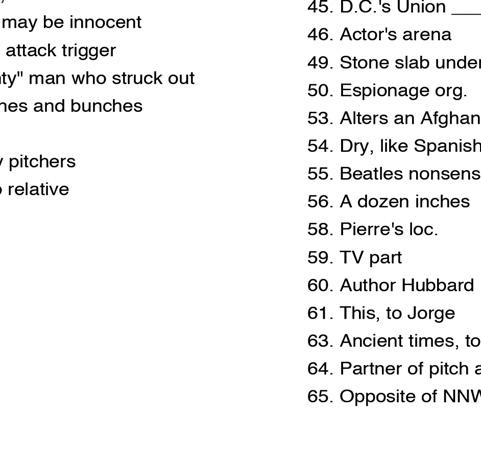




Every row must contain the numbers from 1 through 9
Every column must contain the numbers from 1 through 9

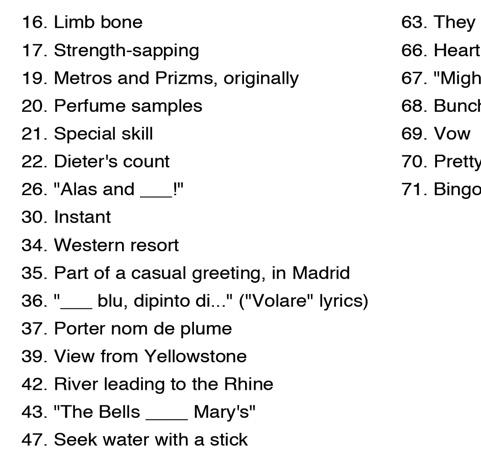
Every 3x3 square must contain the numbers from 1 through 9

A delightful Sun/Jupiter tie, could see you benefitting from an encounter that leaves you optimistic about the future. You and another may warm to each other instantly, and find you’re on the same wavelength. It’s also possible you’ll be made an offer that you can’t refuse. It sounds good and it likely is good, although it’s wise to ask a few questions to make sure, Aries.
As the Sun aligns with Jupiter, you’ll get a sense of what to do next to reach a goal. This might see you working hard to be the very best, whether for your own reasons, to express your entrepreneurial brilliance or because you want to showcase your work to a bigger audience. This looks to be a worthwhile pursuit, as you’ll benefit from your efforts further down the line.
Positive aspects can bring out the best in you, and could coincide with a meeting that leaves you ready for fresh adventures. Romance is possible with someone who loves to seize new opportunities, and their positive and can-do attitude might be what attracts you to them. You may be ready to try something different, and if it encourages you to think out of the box, even better.
Energy levels may be high over coming days, filling you with optimism and inspiring you to rethink your plans. Have you been aiming too low or sabotaging your best intentions? If so, the coming days can find you ready to think big and be more daring with your choices. This is a time when actions will speak louder than words, so don’t overthink this, just make a start, Cancer.
Teamwork can make things happen faster than they might normally, and the current star map supports this. Your creative input, along with the abilities of others, could see a project going from strength to strength. You may be asked to take on more than you think you can handle. If so, be bold and have a go. You’ve got nothing to lose, and everything to gain by giving it your best.
With energy levels higher than usual, you could feel a tad restless and ready for something new. A glowing opportunity might come your way today, or you may pursue one that stands out from the others and that presents a bit of a challenge. Plus, if you’ve been feeling a bit stagnant, today’s buoyant aspect encourages you to get moving and make exercise a regular habit.
You are at your creative best, with a fabulous link encouraging you to put your focus on an idea, even if it requires you to learn new skills. This is not a time to dwell on past failures, as the coming days are jam packed with opportunities that could enhance your life in so many ways. The connections you make may be instrumental in netting you an offer that you can’t refuse.
It’s time to nurture a bold idea that might usher in the changes you wish to see. Writing down your intentions and visualizing your outcome daily, could help build your belief that you can make it happen. And over coming weeks it may begin to fall into place. You’ll still need to do the work to make it a reality, and investing in learning new skills might be a big part of this.
With a very lively focus on your sector of communication, the coming weeks can emphasize your enjoyment of networking and connecting with all kinds of people. The intellectual side of your life may be enhanced, so reading and studying could empower you. A bold influence might encourage you to be outspoken though, so if you feel like saying something, do so tactfully.
A mixed blend of energies may find you forging ahead with a plan that could increase your income. To take full advantage of it Capricorn, don’t let the same old doubts prevent you from moving forward. Allow them to drift away, and zero in on what you can accomplish and how good you’ll feel when it’s done. Make a start, act with confidence, and you’ll soon get there.
Recent days may have kept you busy, with a dynaExcited to explore new interests or to take a step into the unknown? An energizing Sun/Jupiter aspect can be excellent for taking a different path, and gaining experience with something that you are new at. And while it may seem easier to stick with what you know, another influence suggests doing so might hold you back Aquarius, while being courageous could enrich you.
A dynamic focus involving your spiritual and psychological zone might act as a catalyst, giving you a push in the right direction. Success is very reliant on your belief in yourself, and a potent Sun/ Jupiter aspect could inspire you to take that leap of faith. Keen to boost your income? If you have an idea that can do this for you, don’t waste it! It could help you more than you know.











